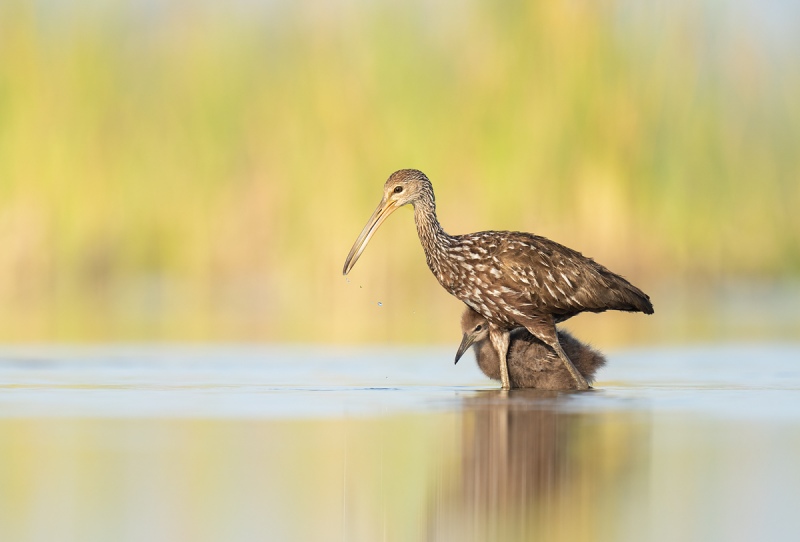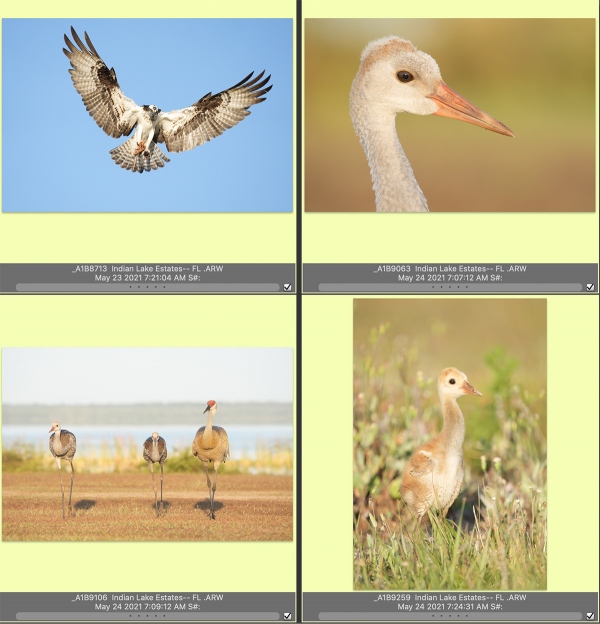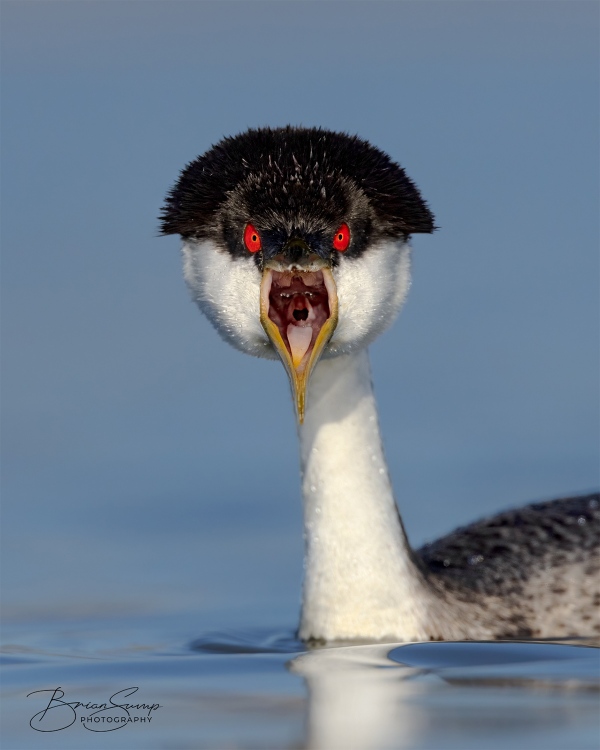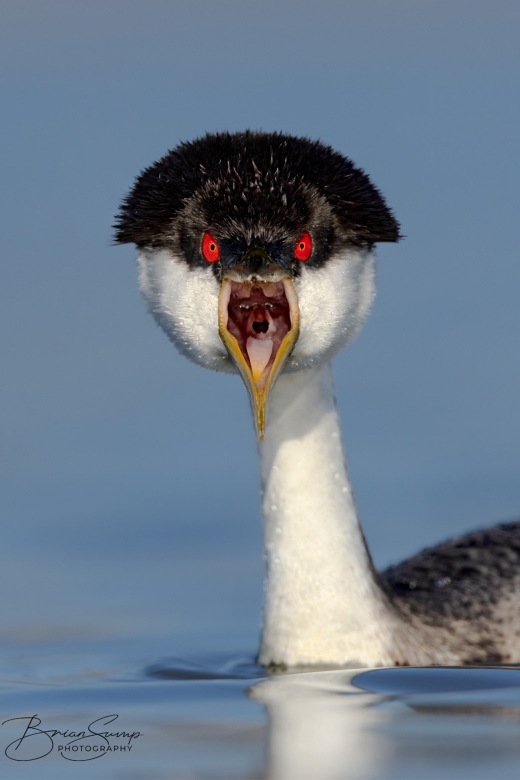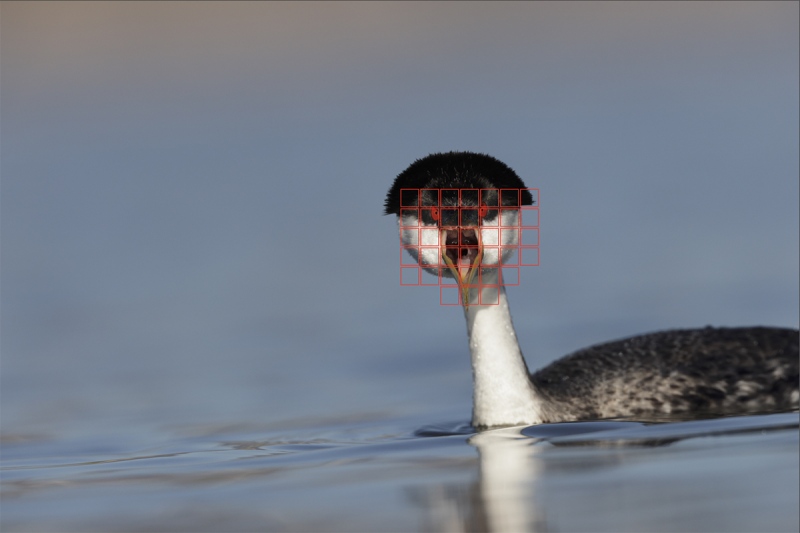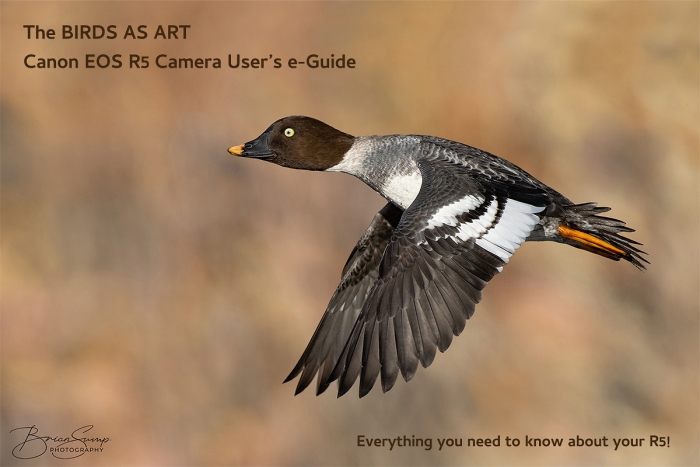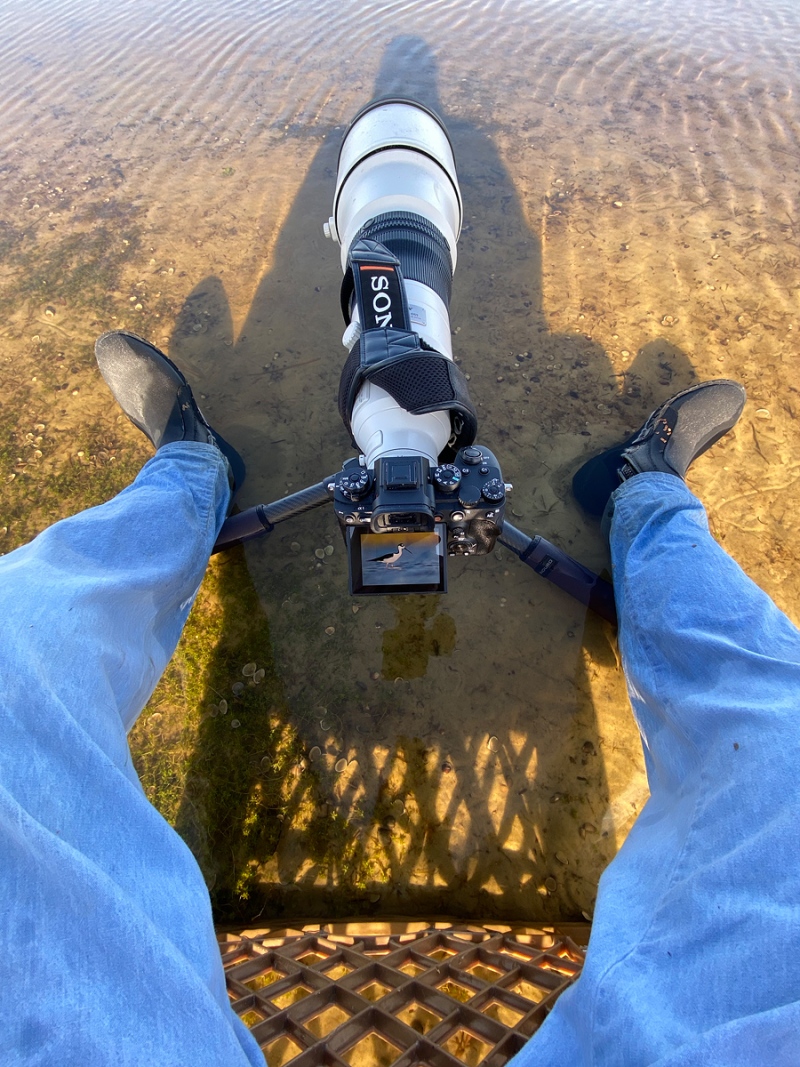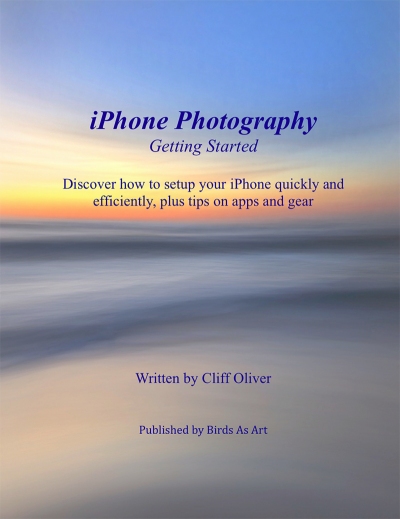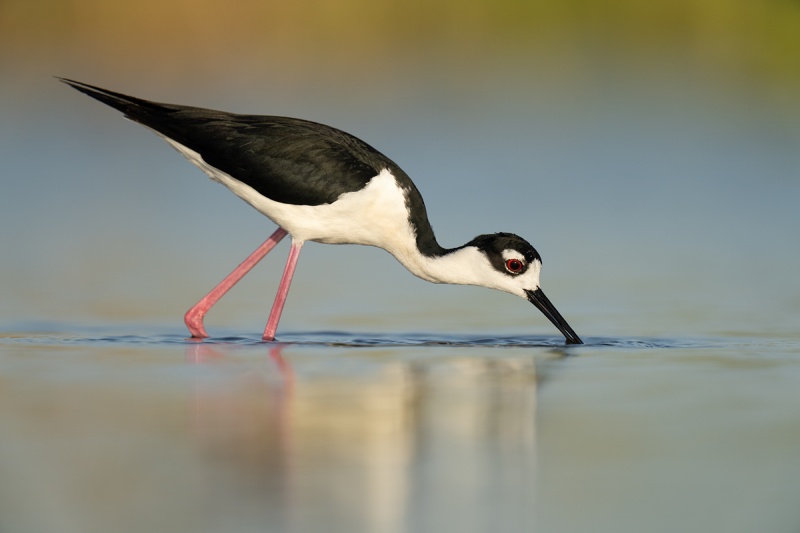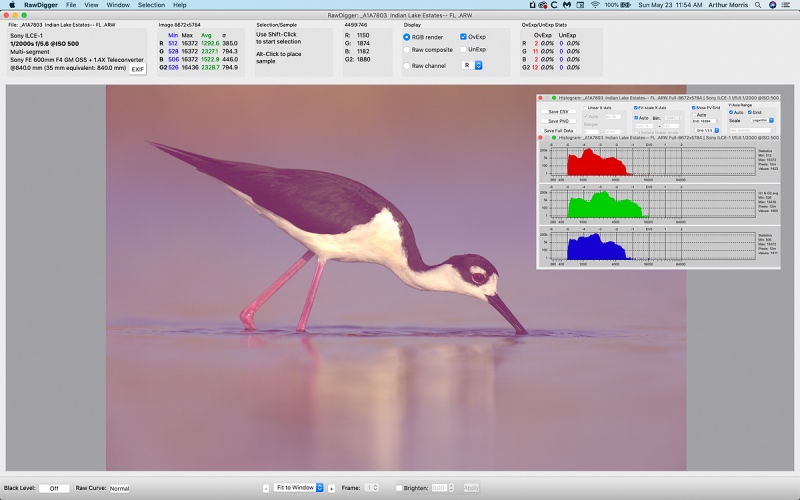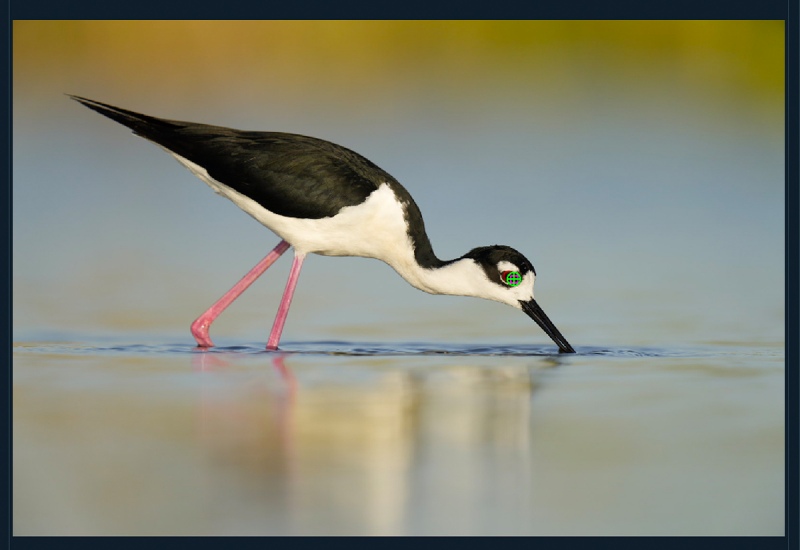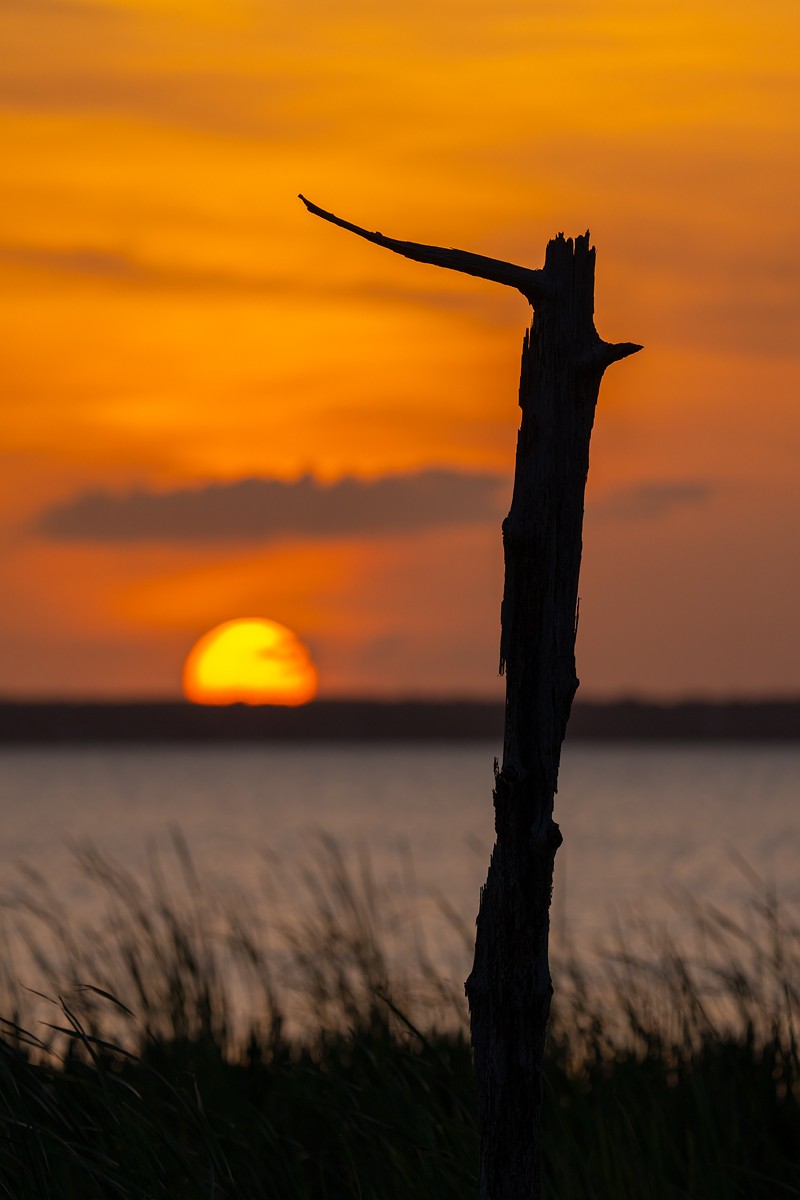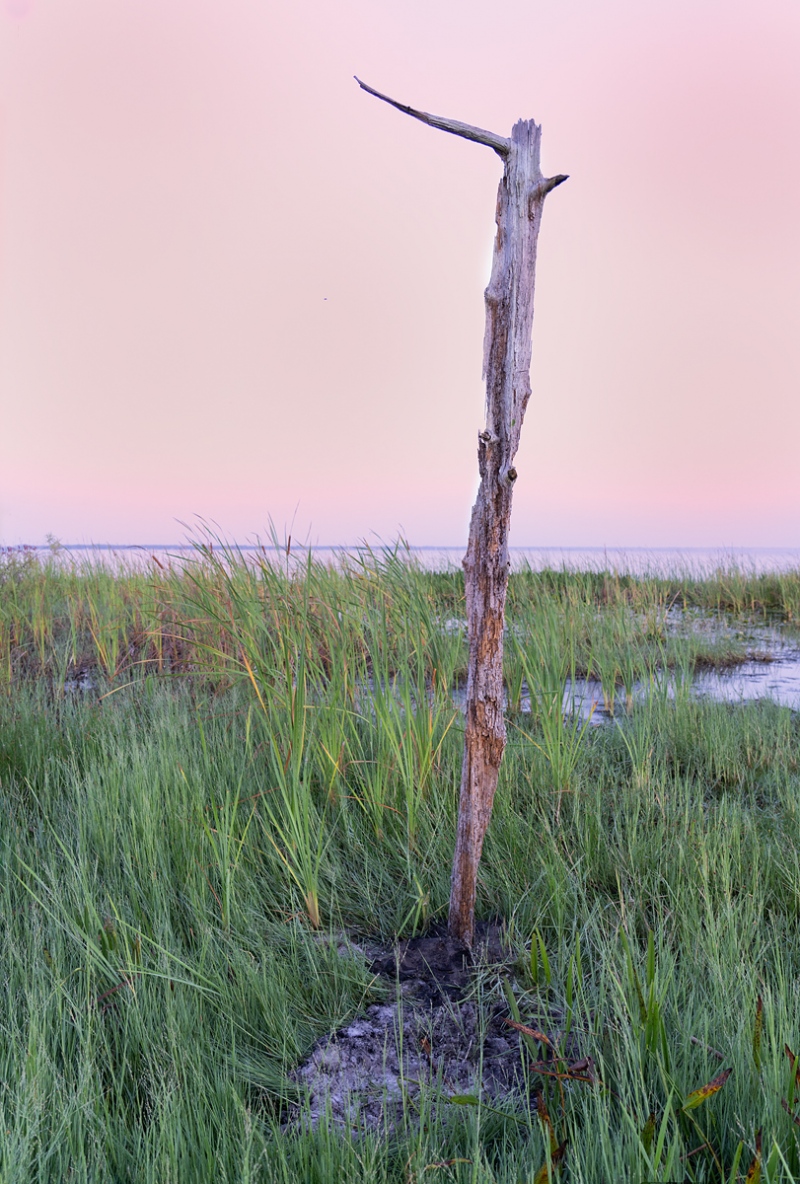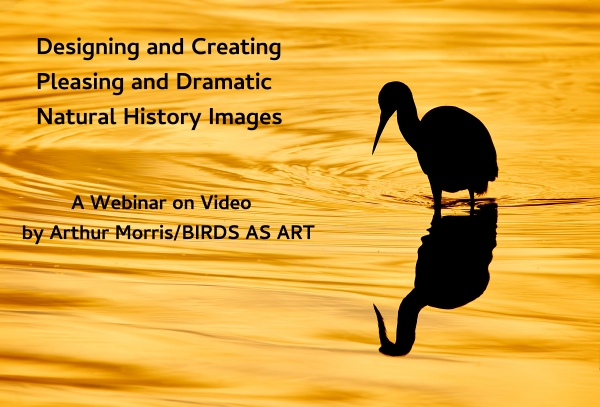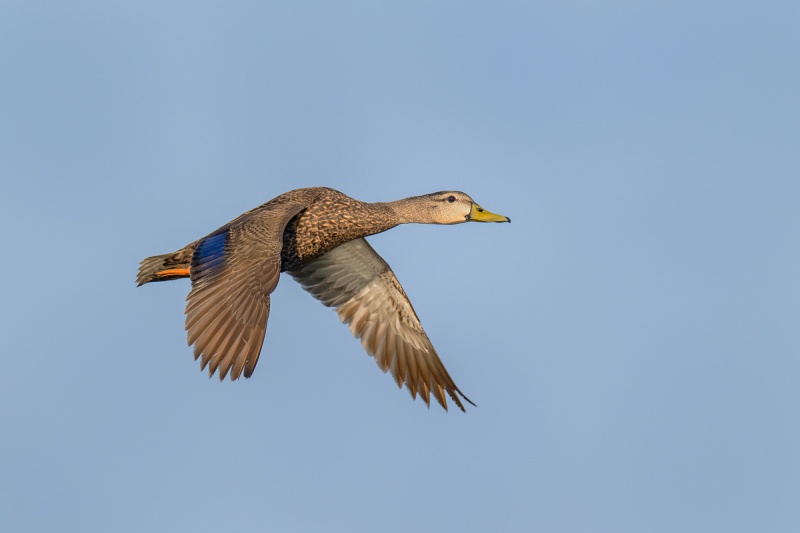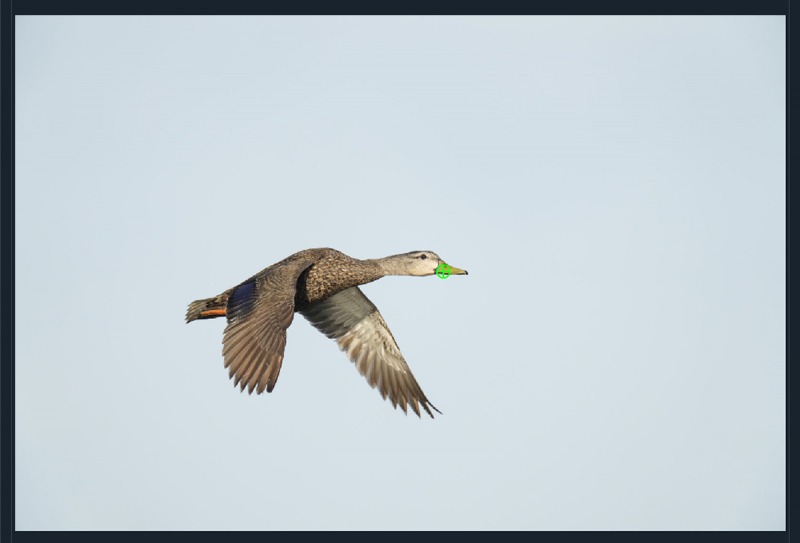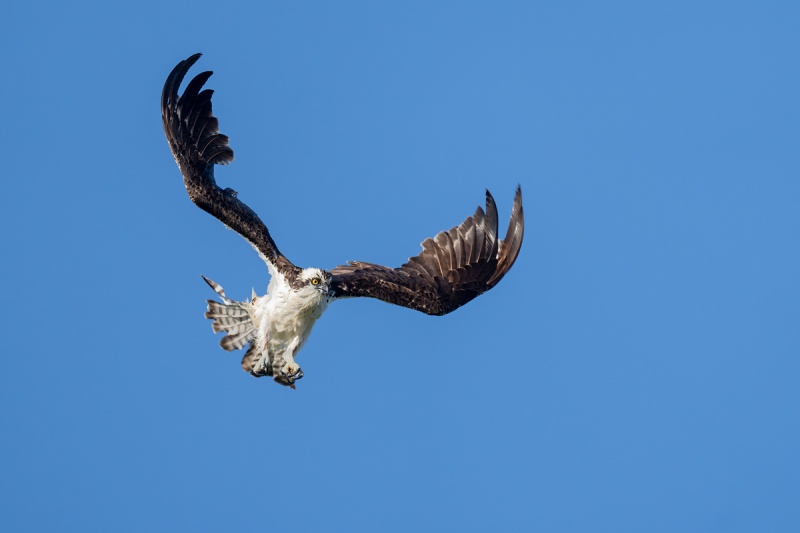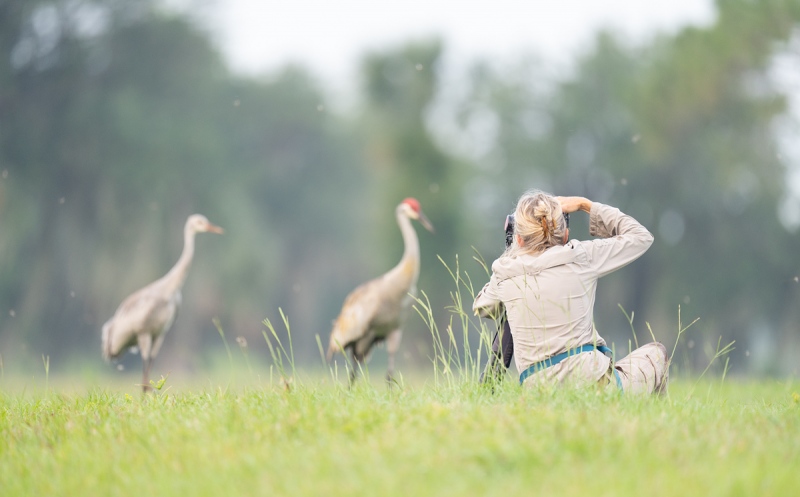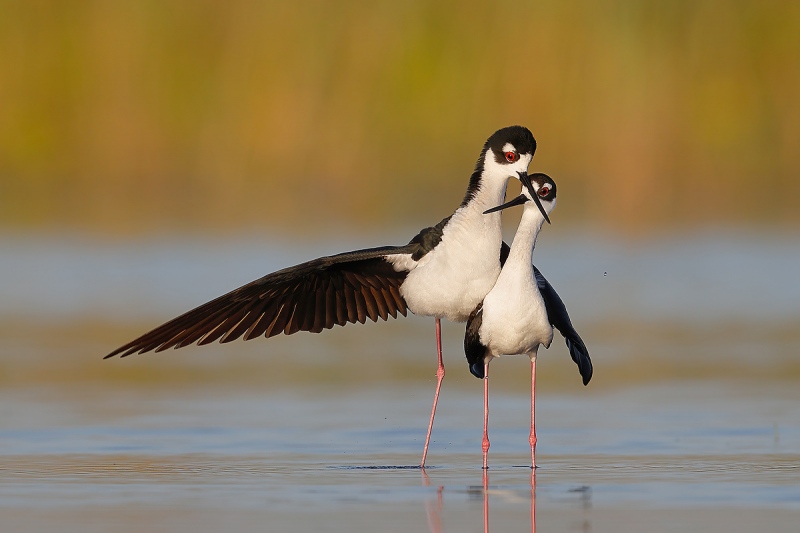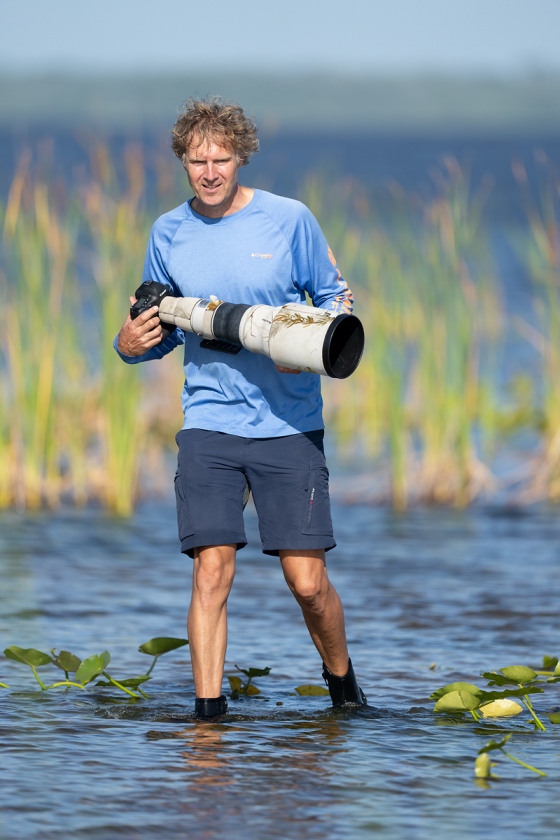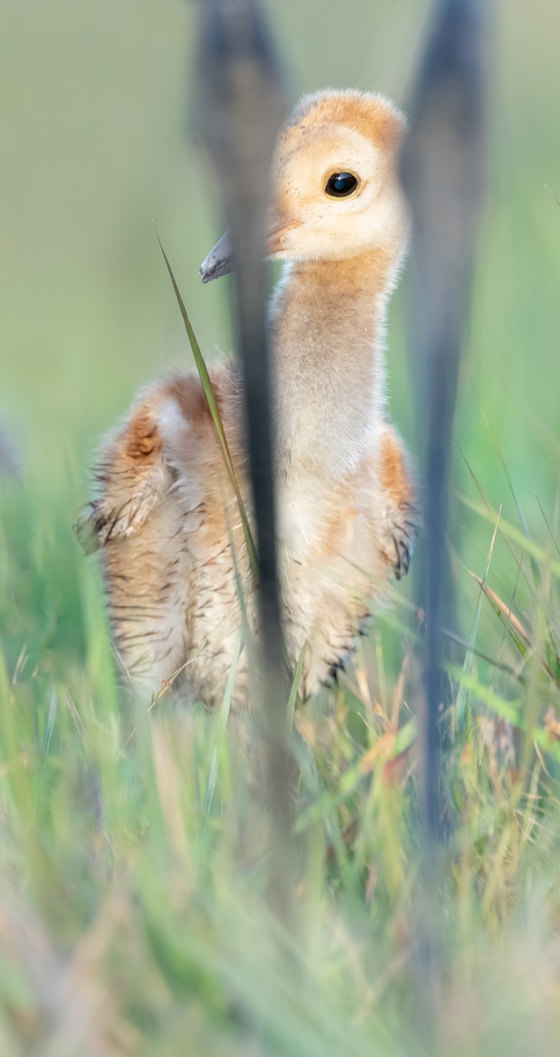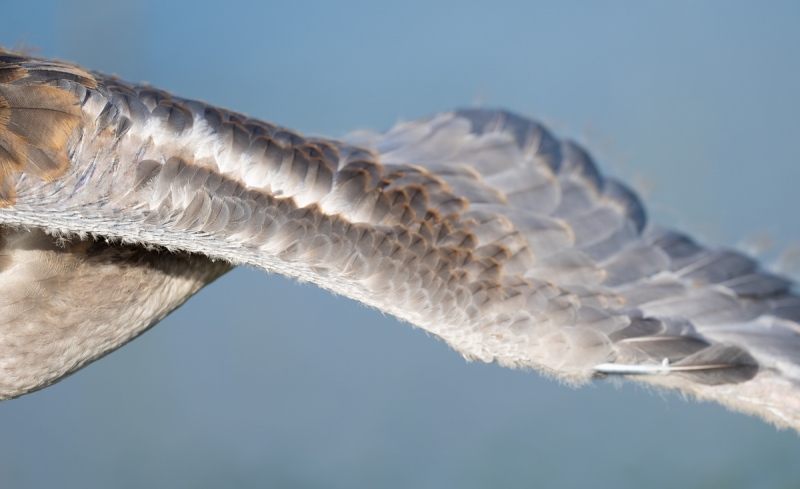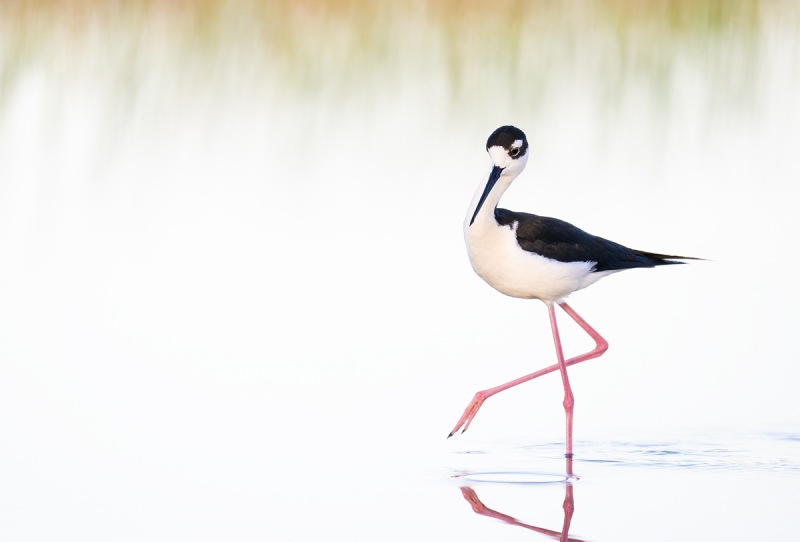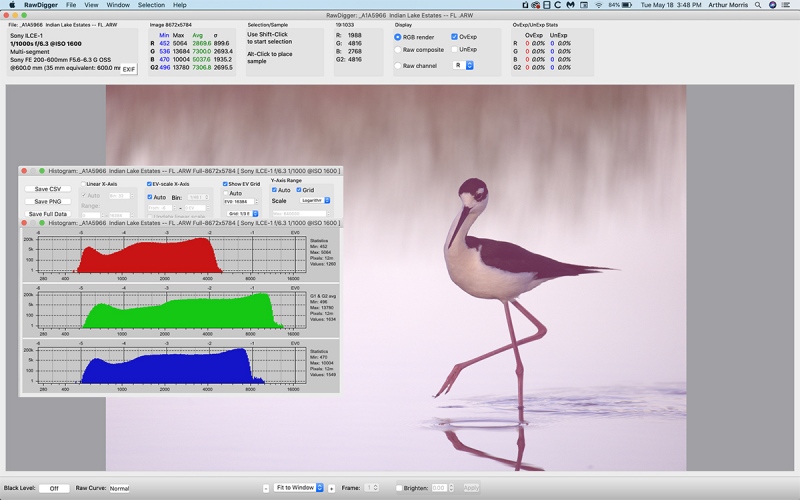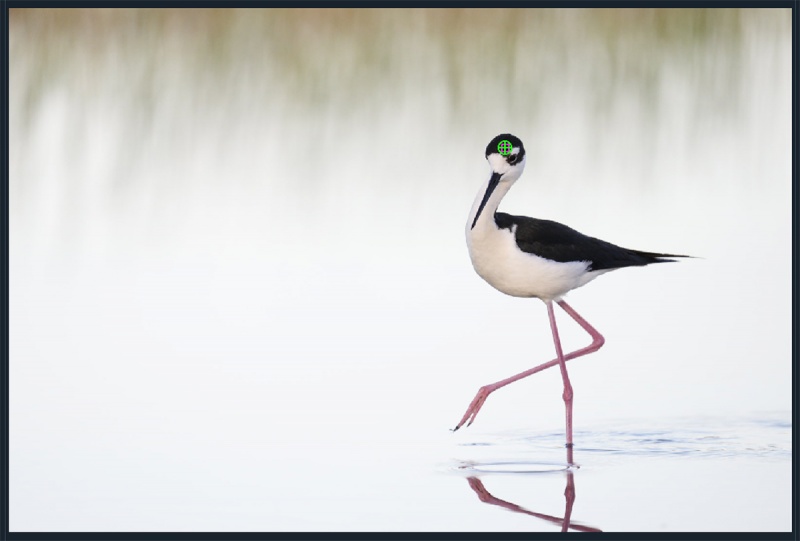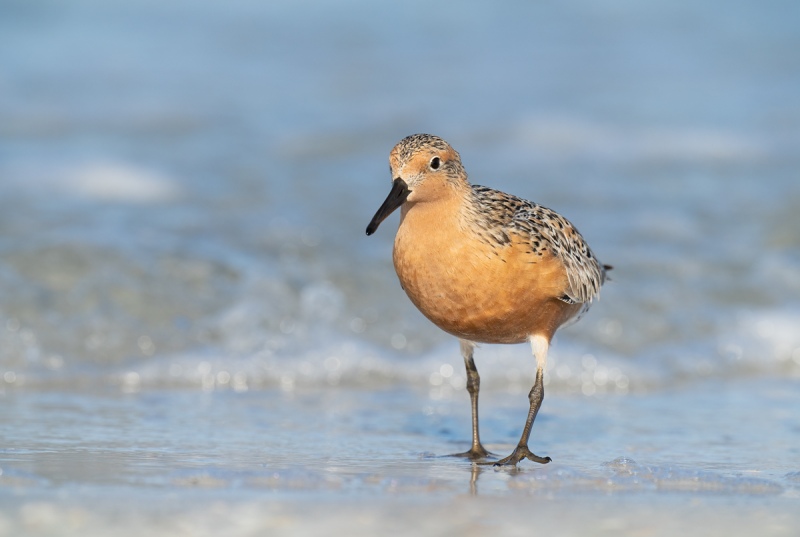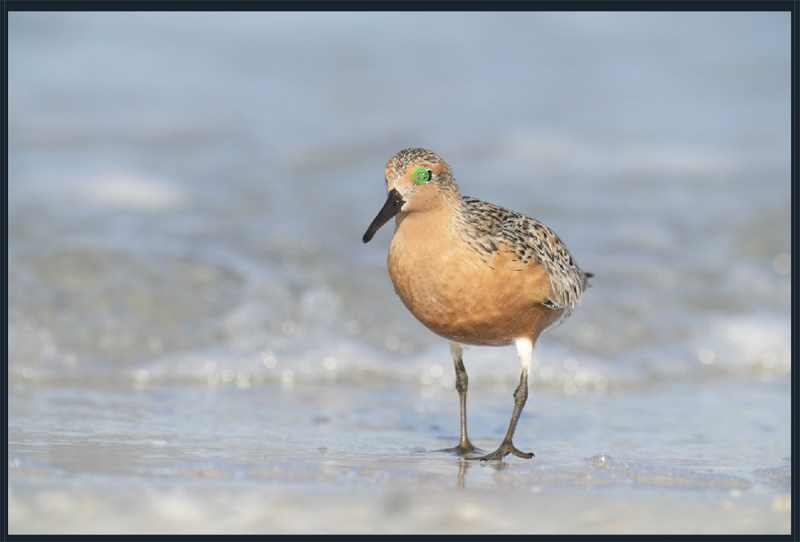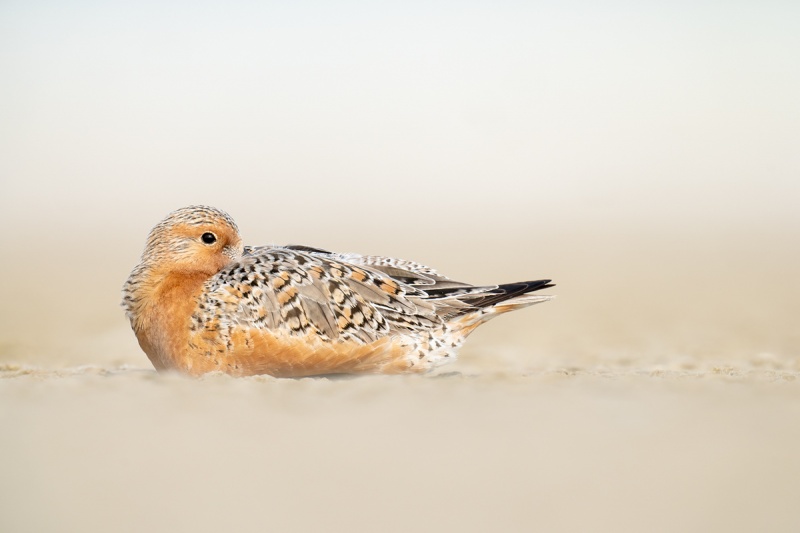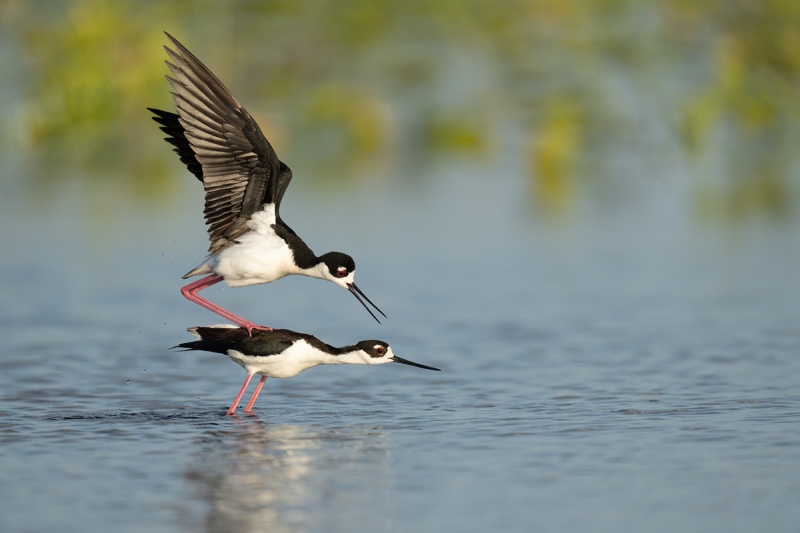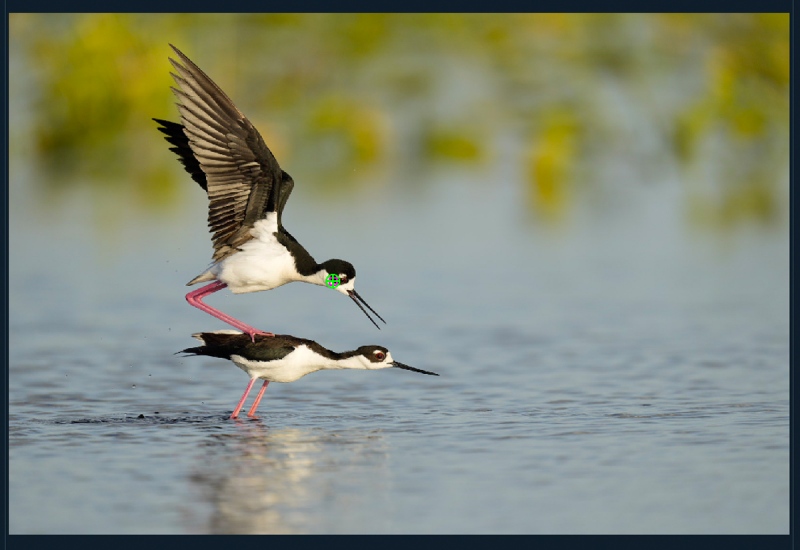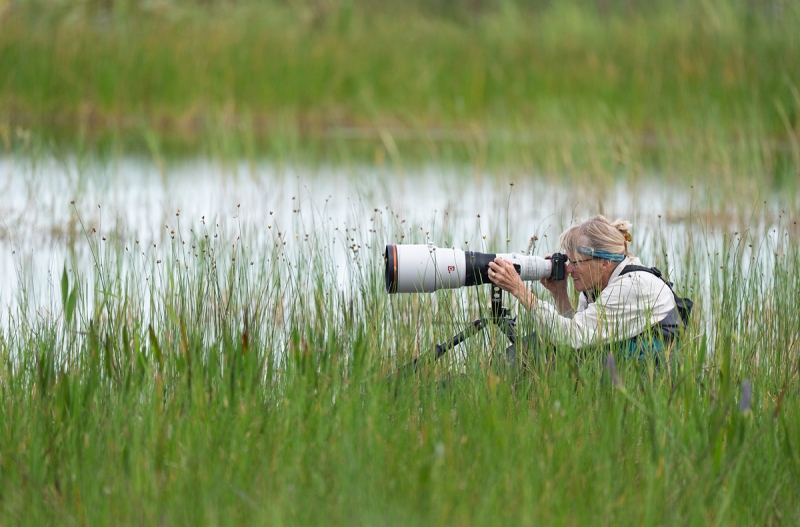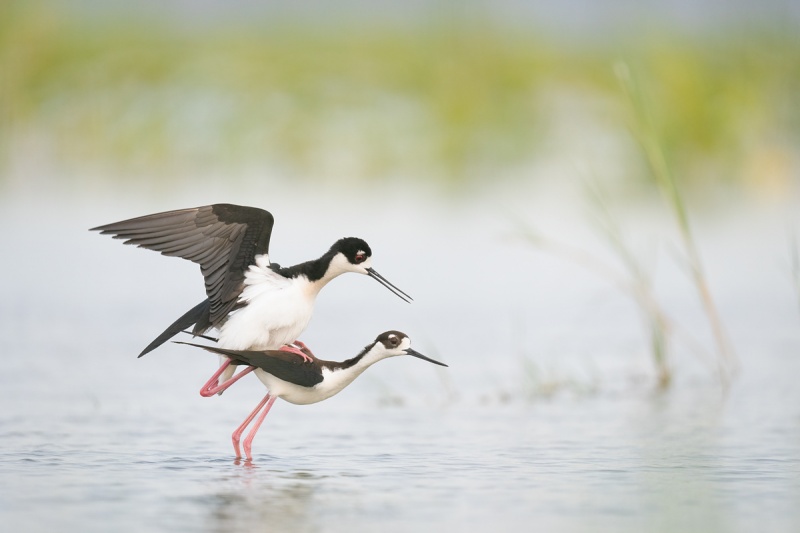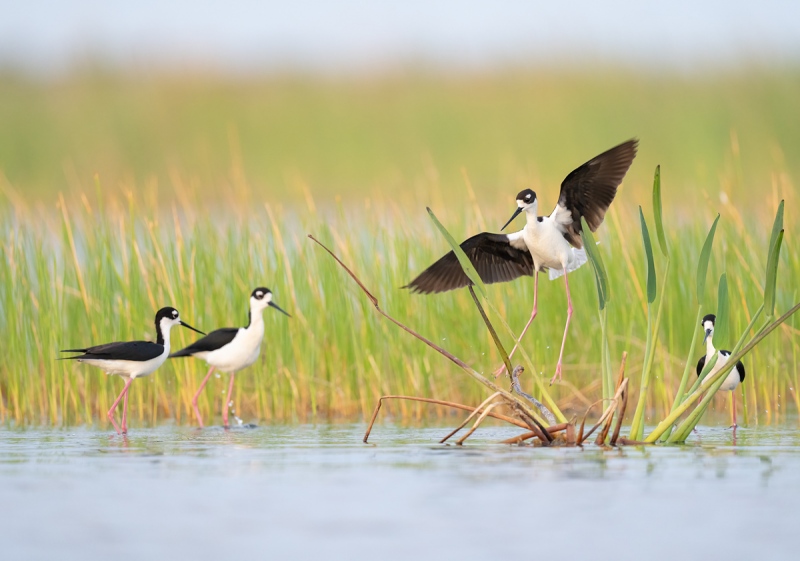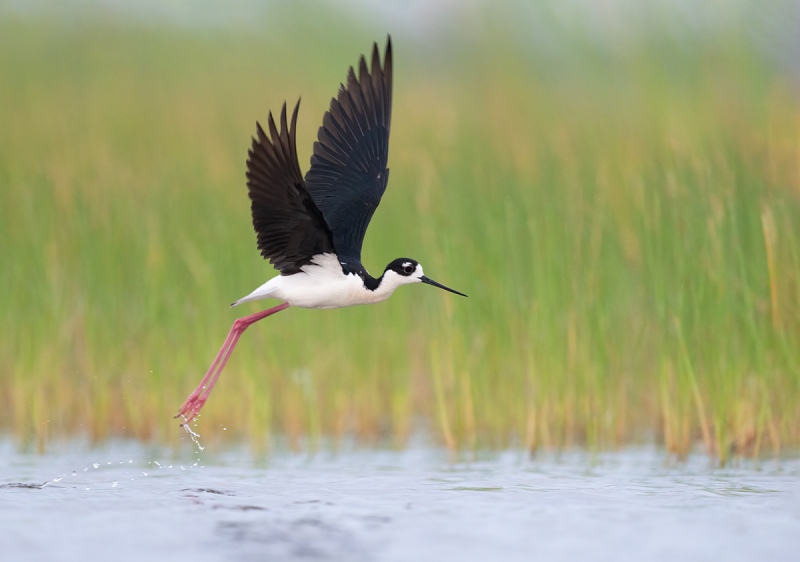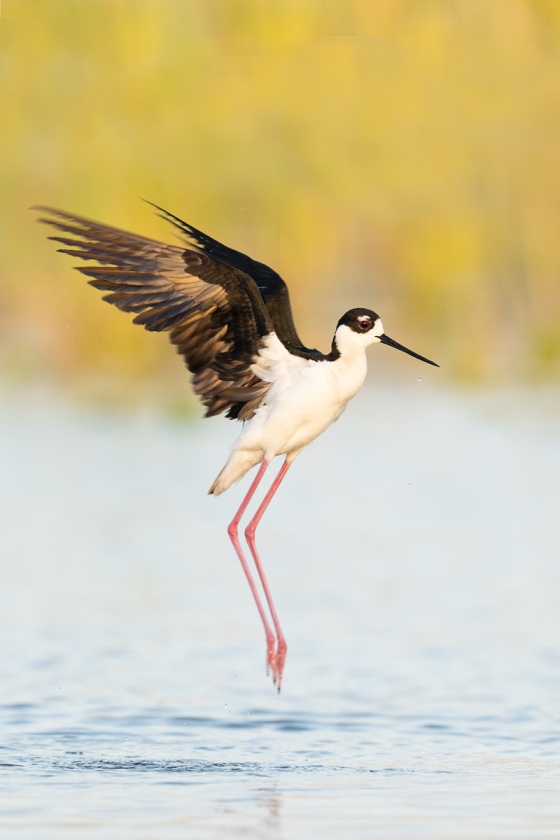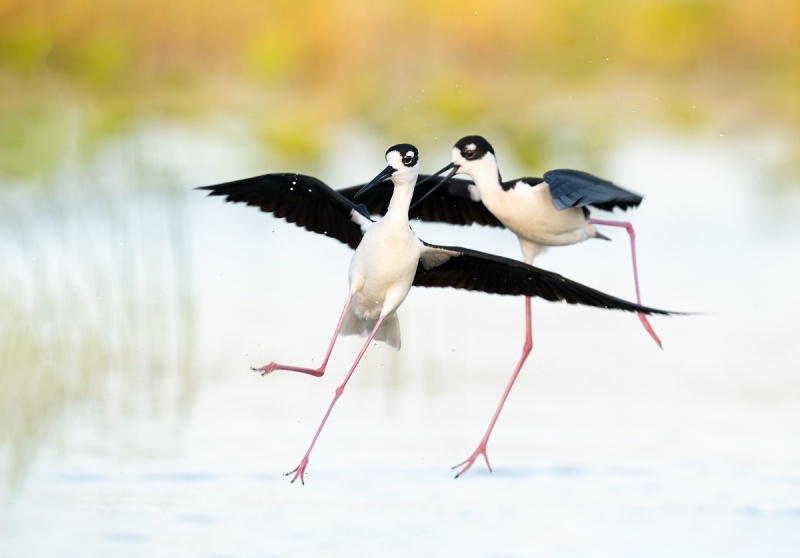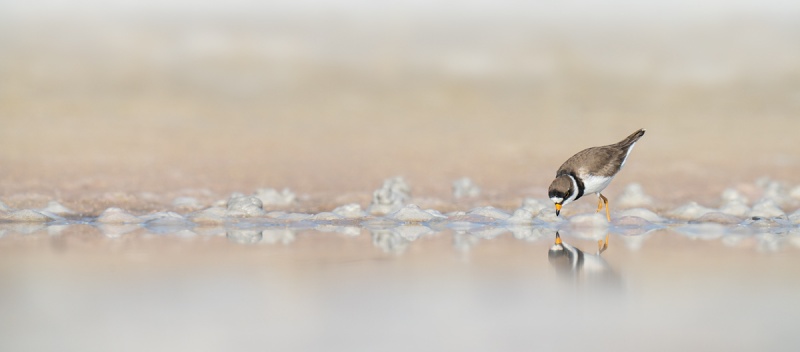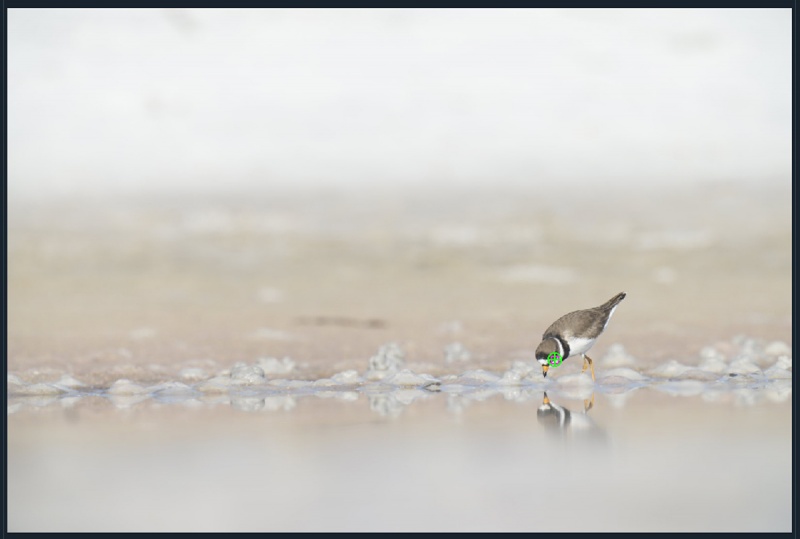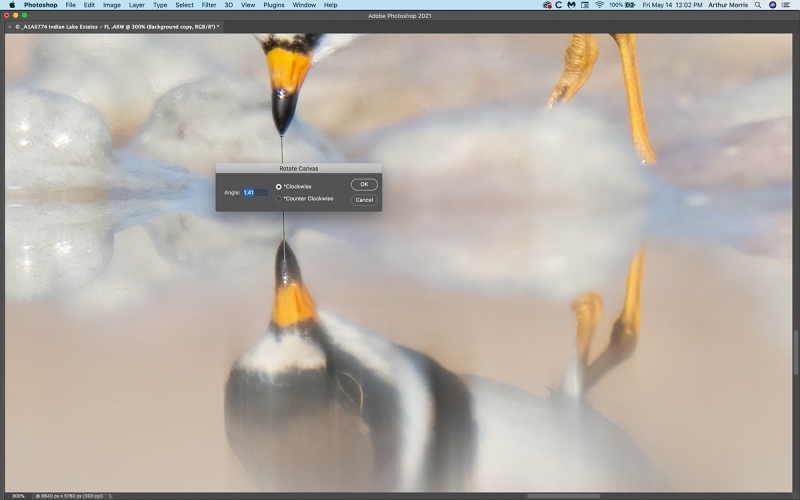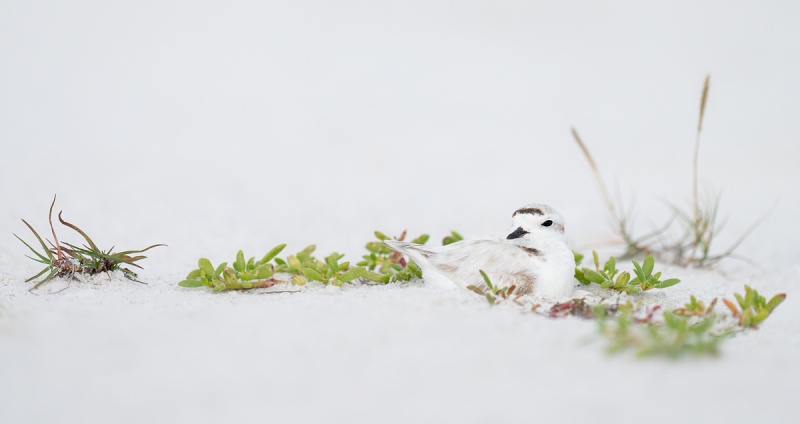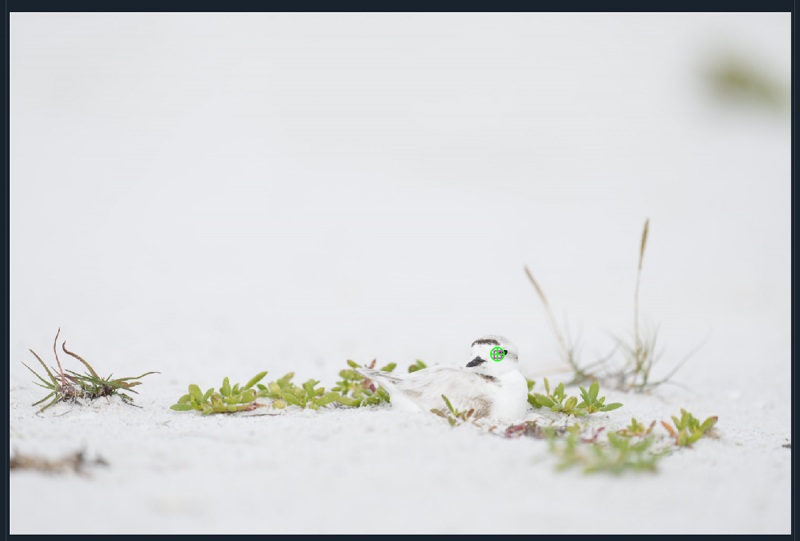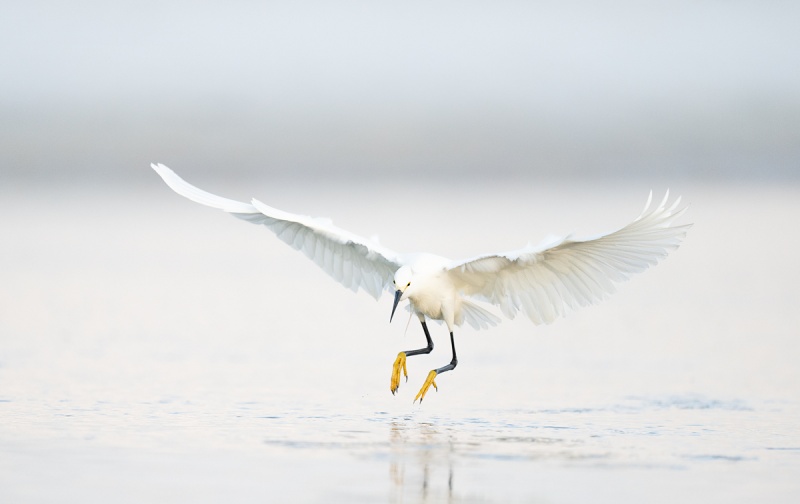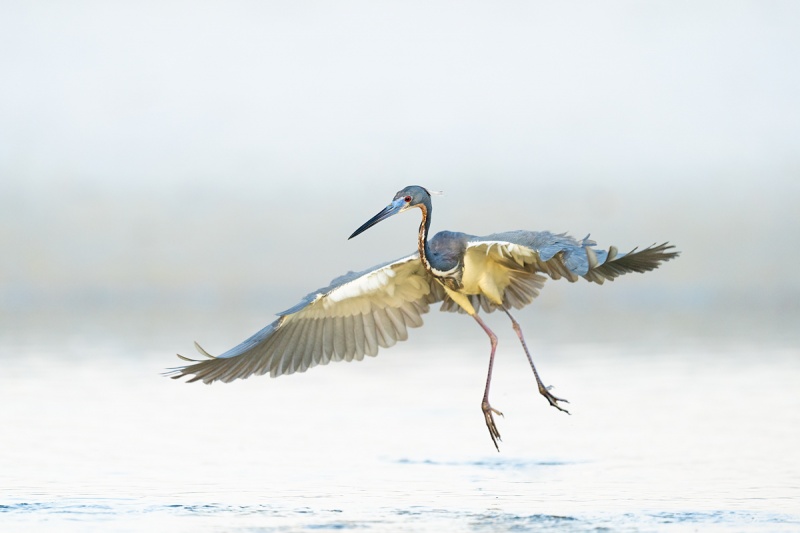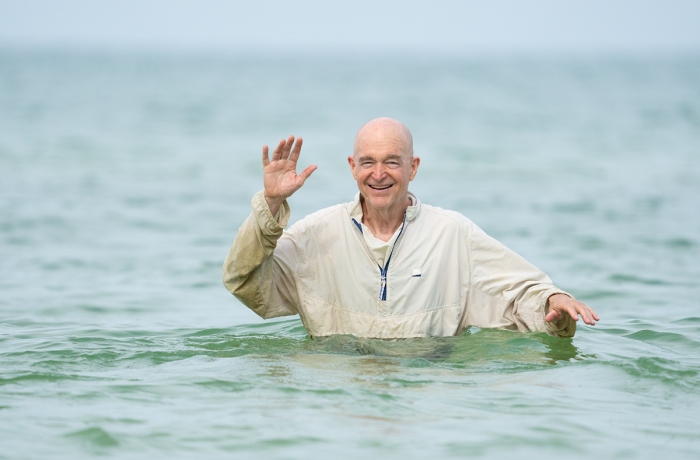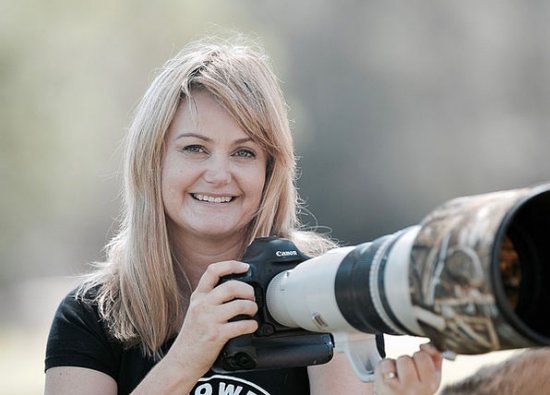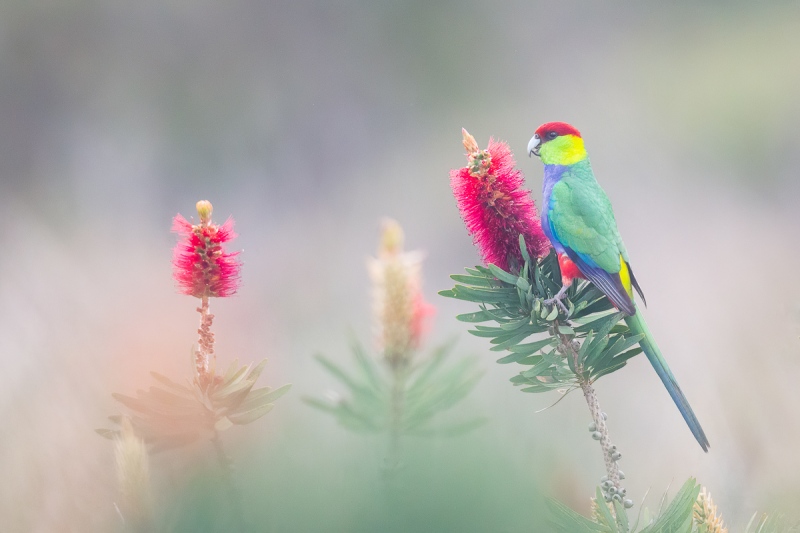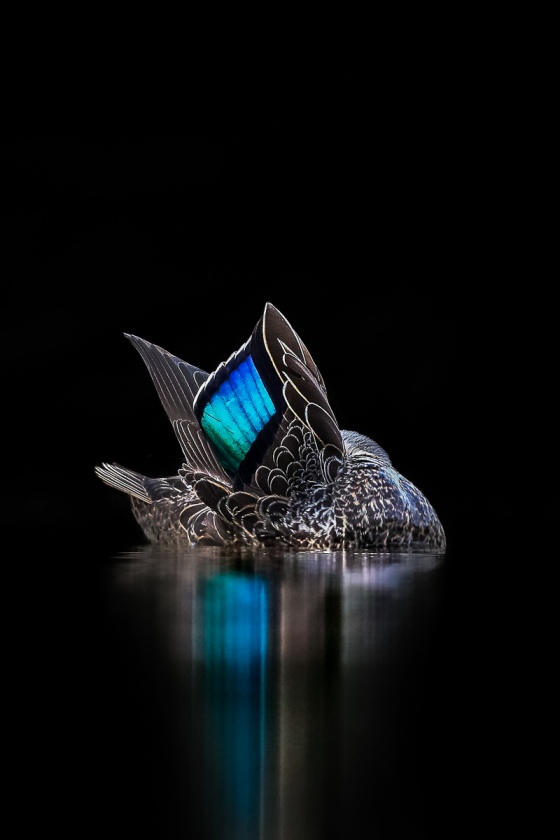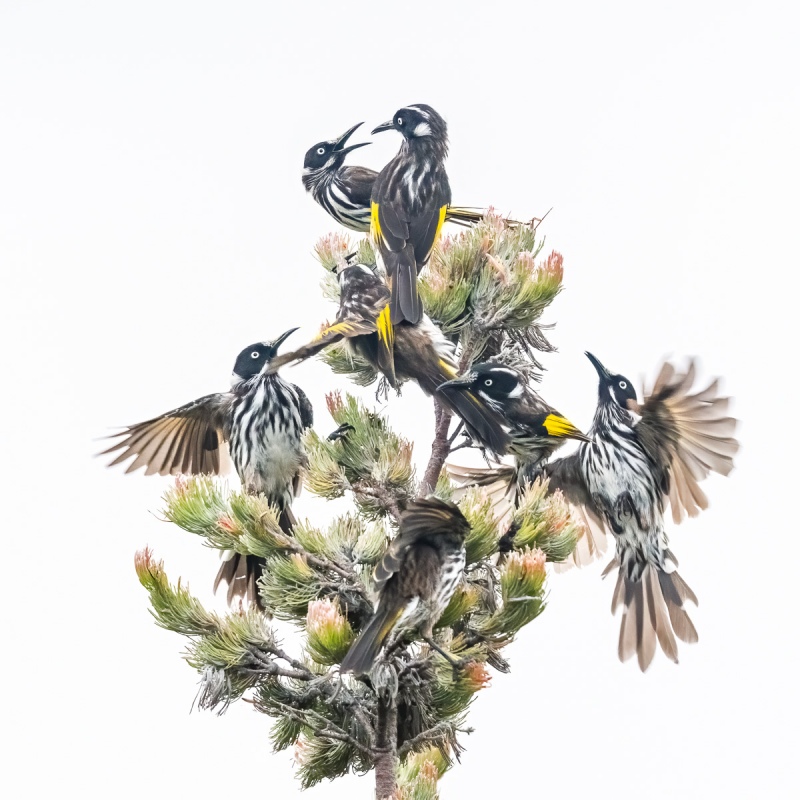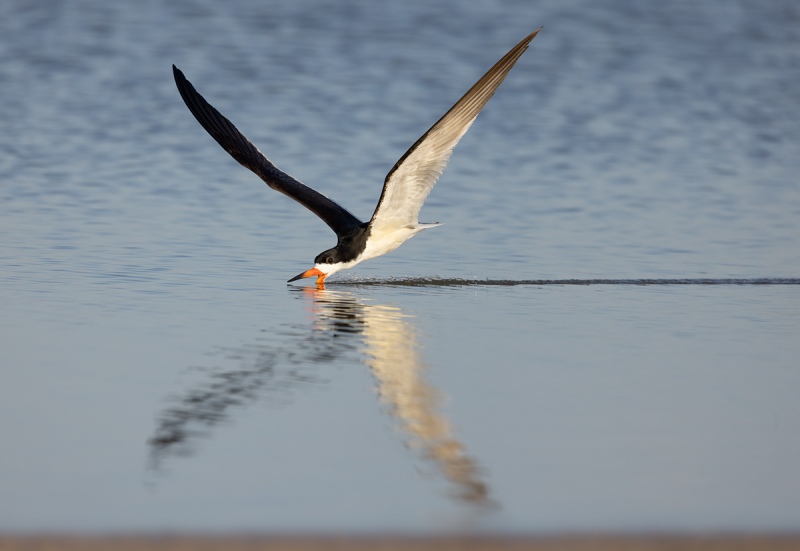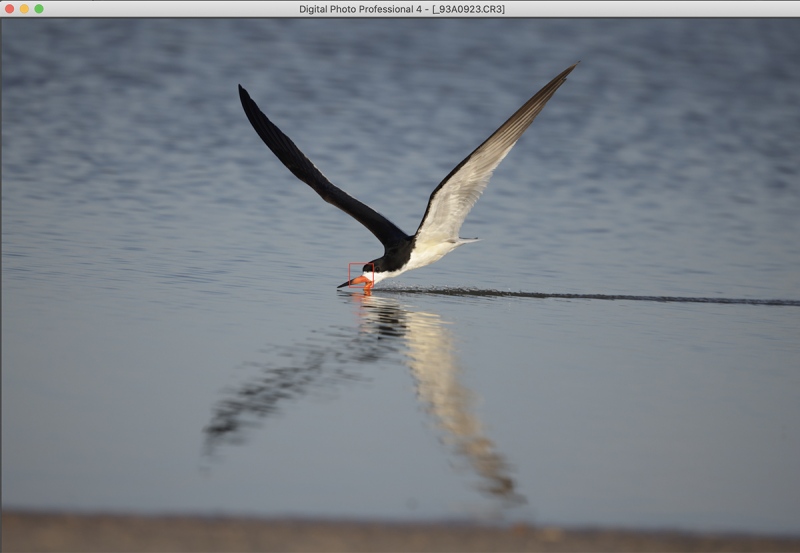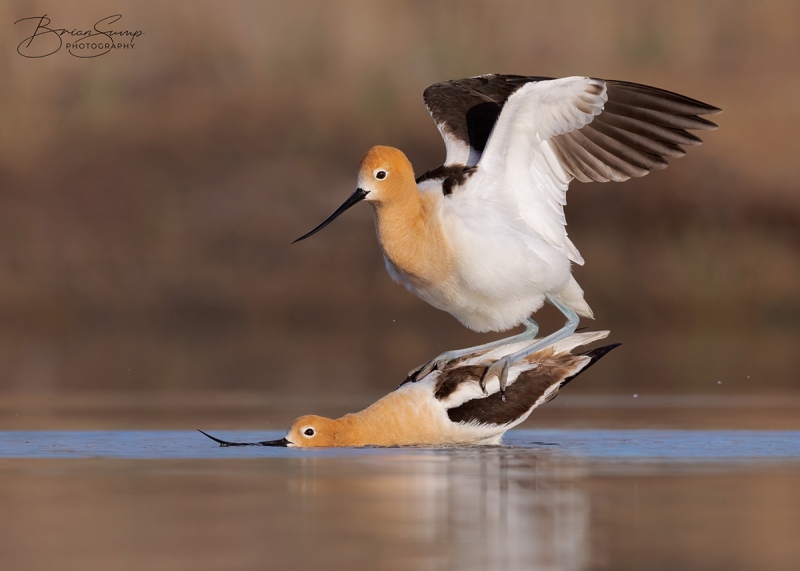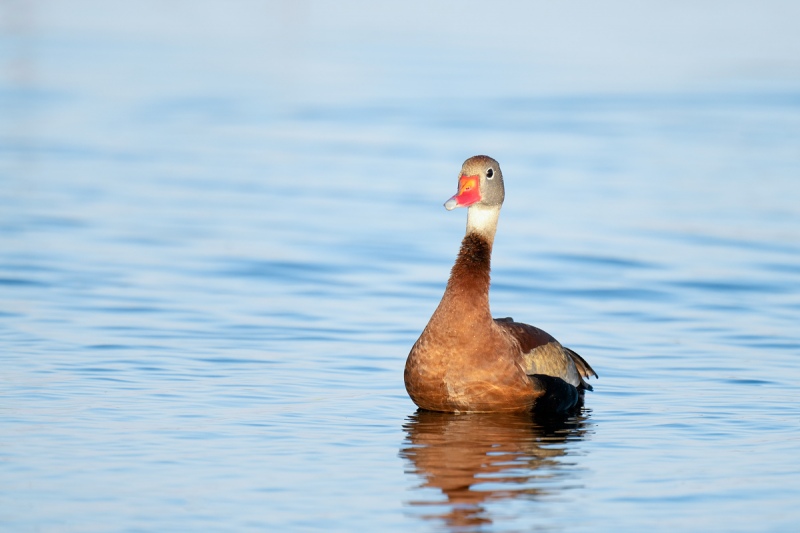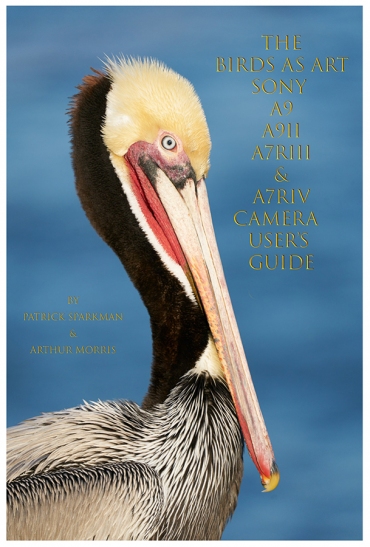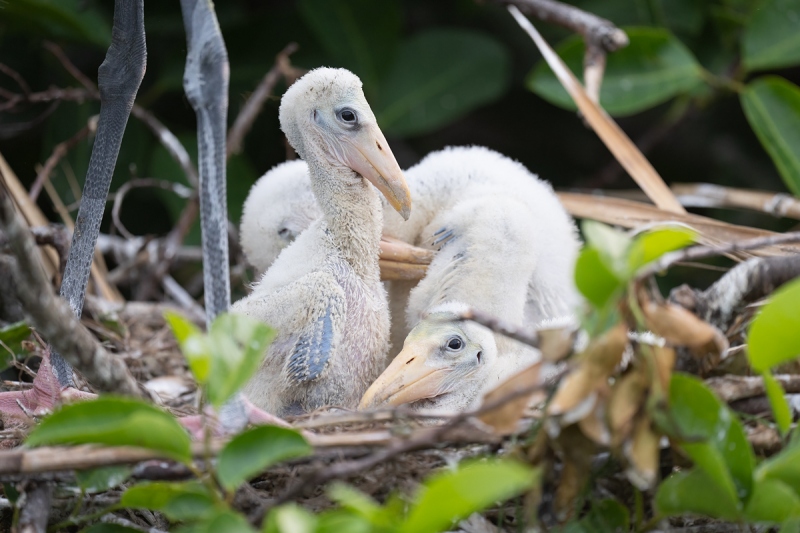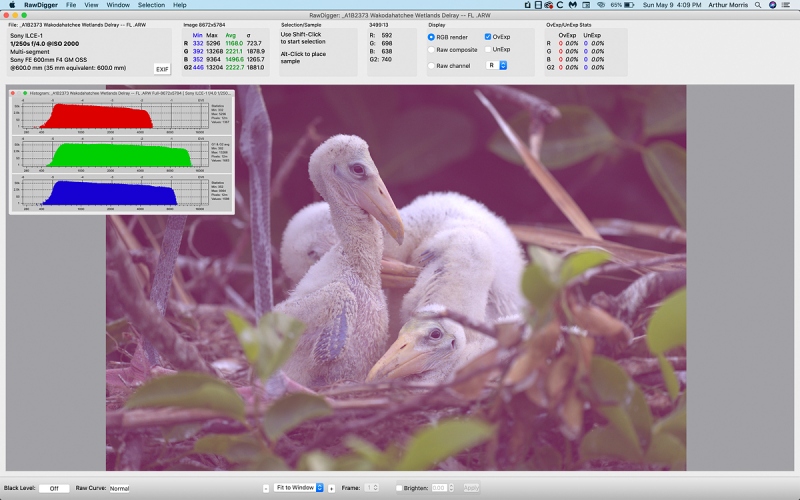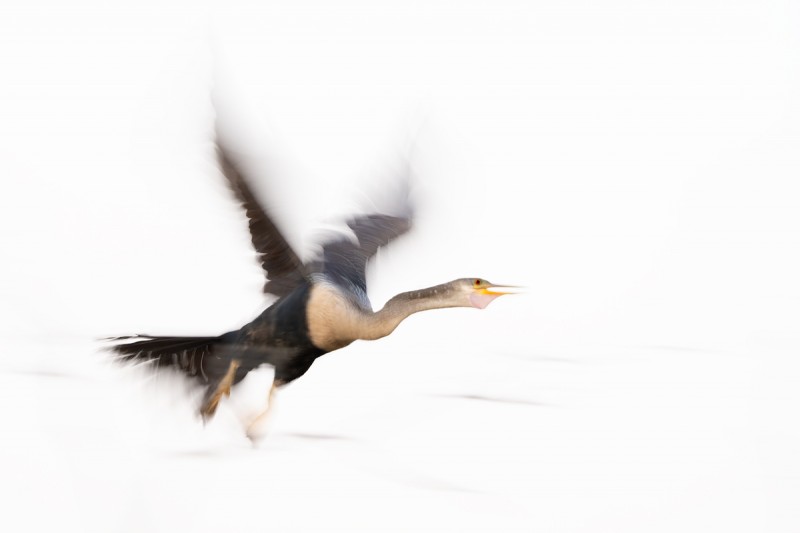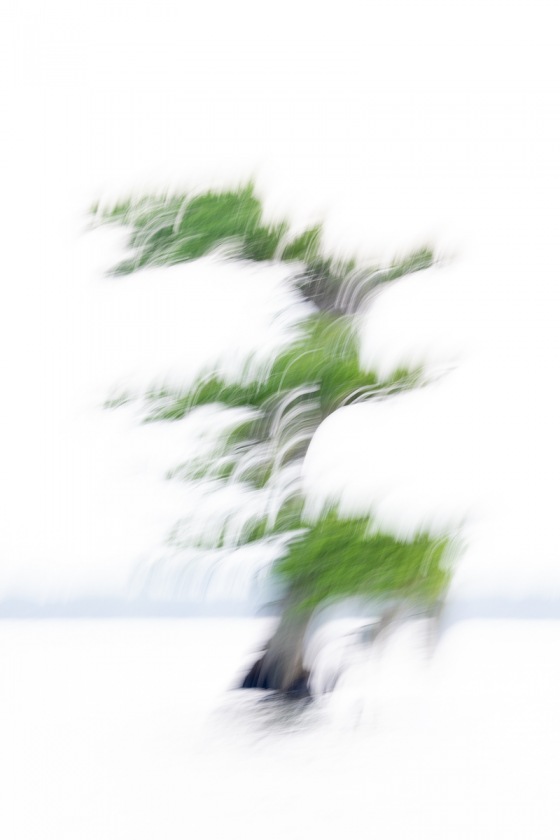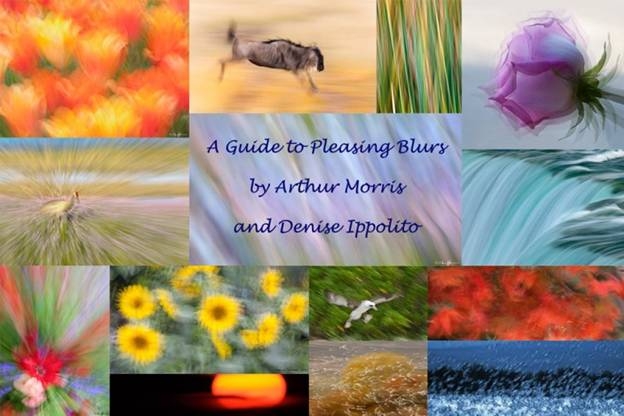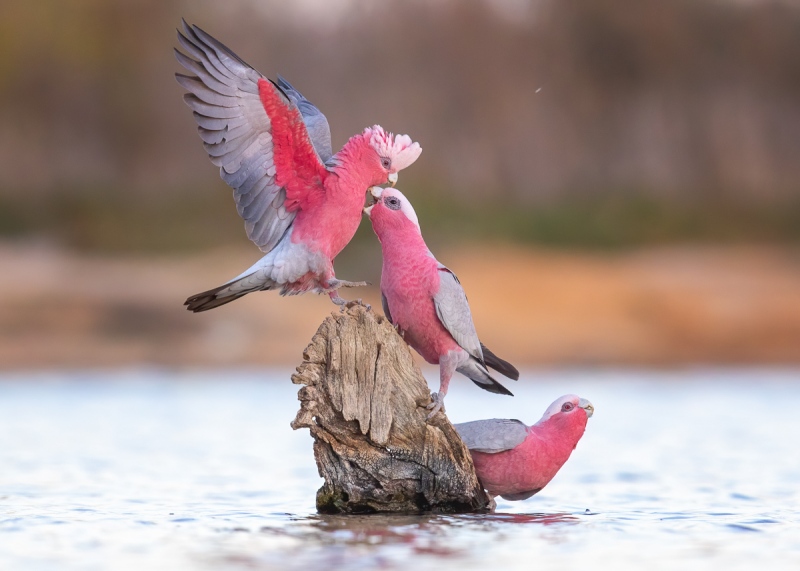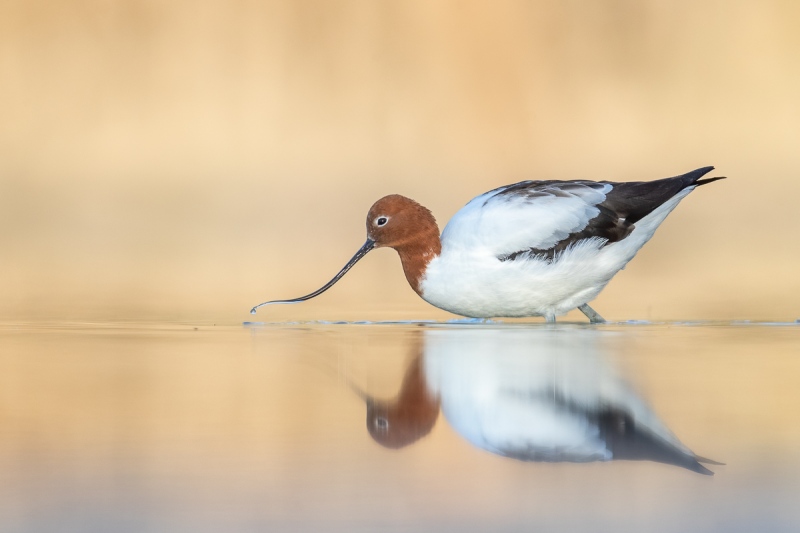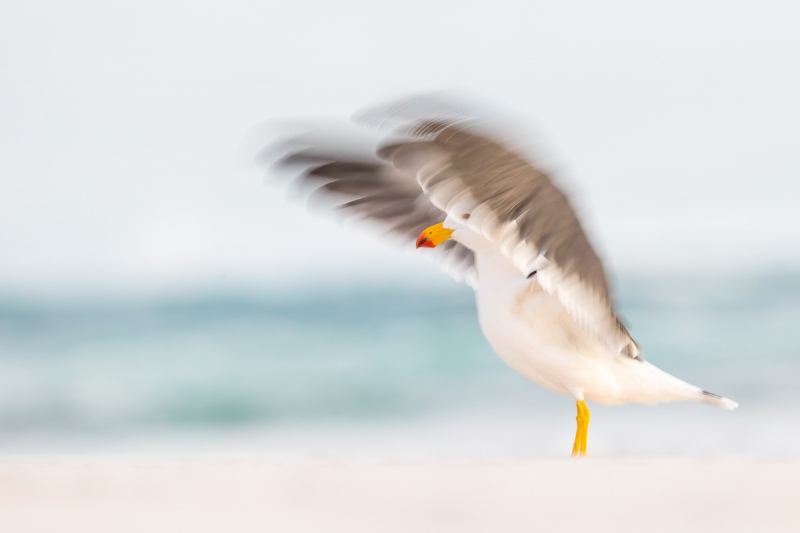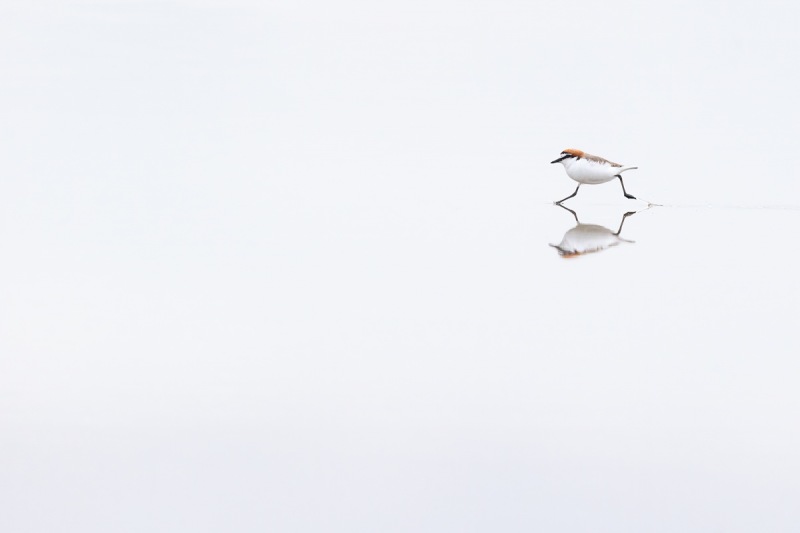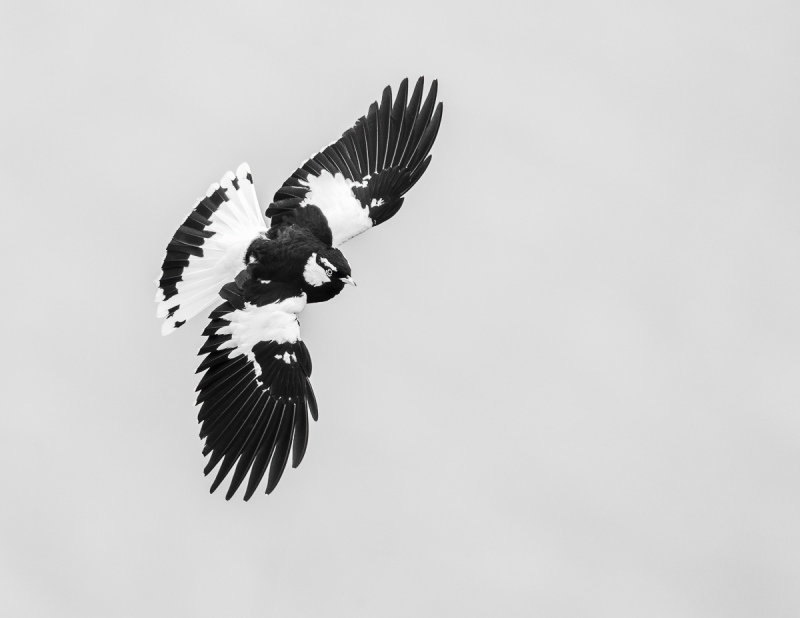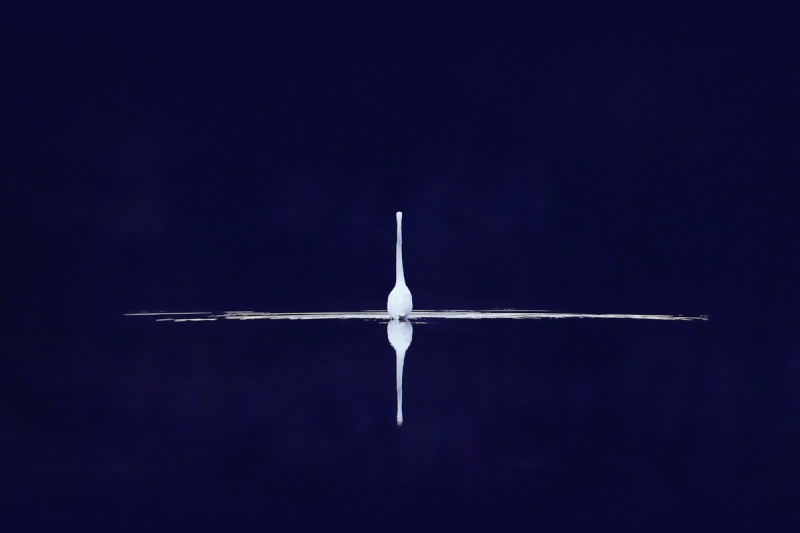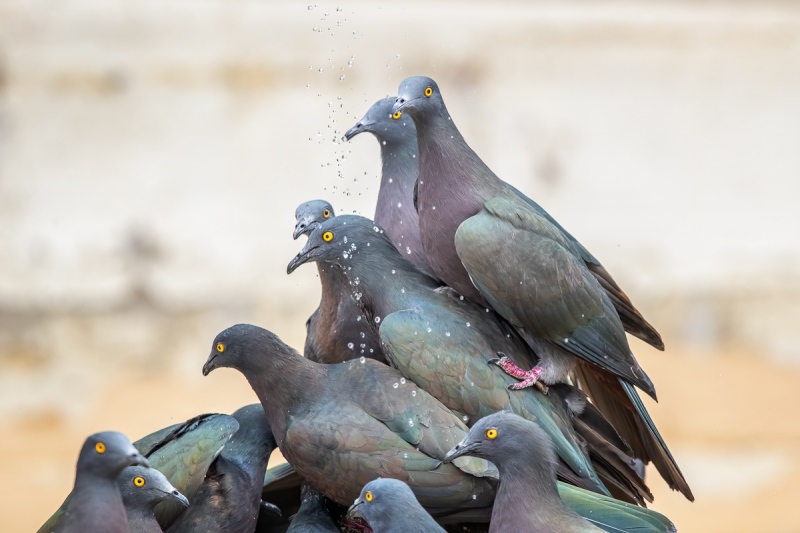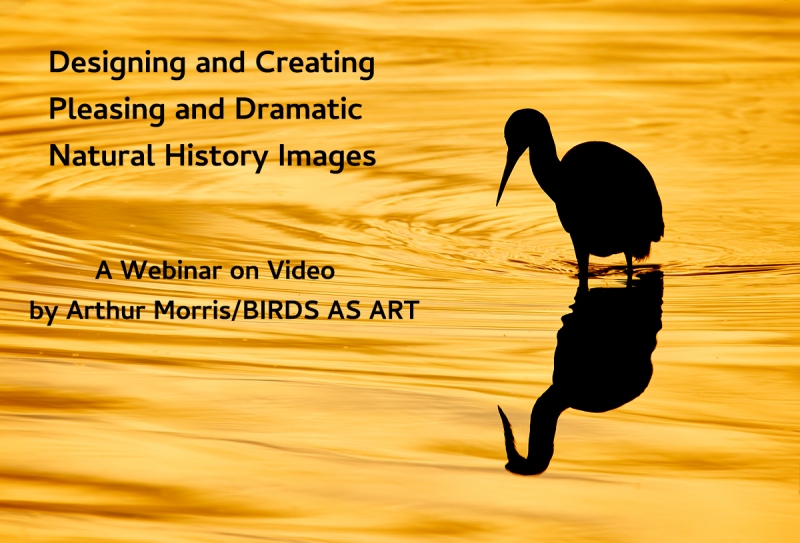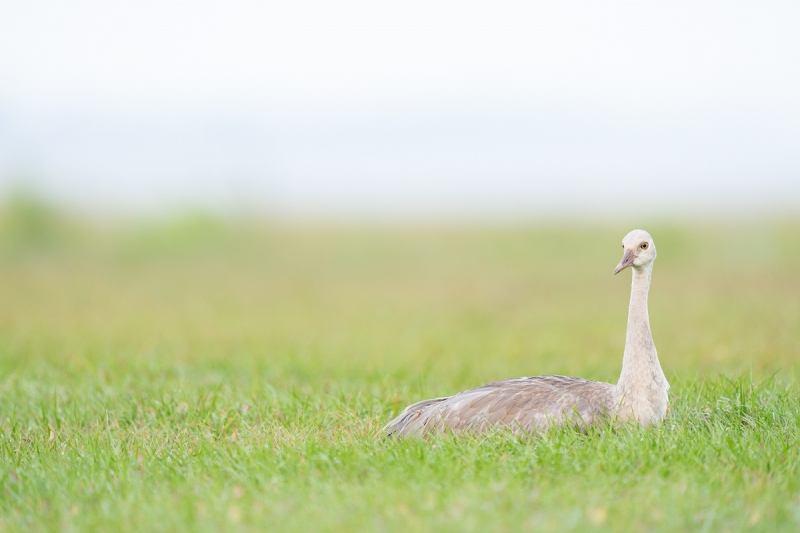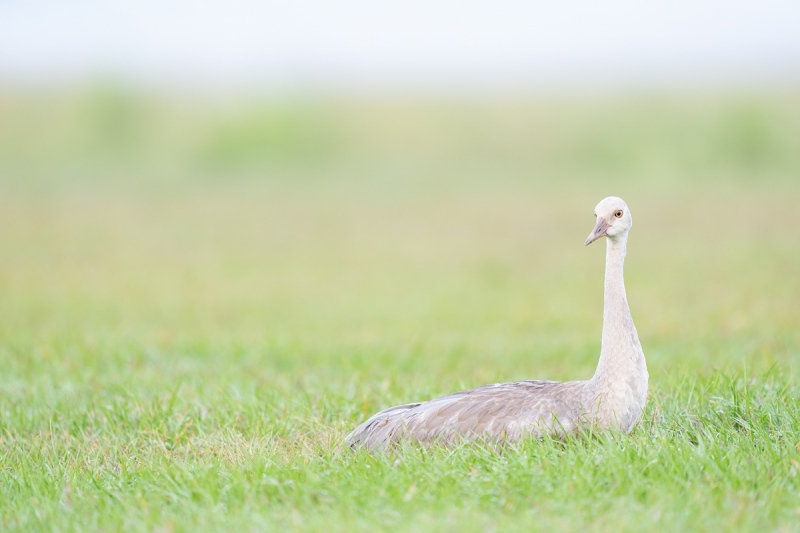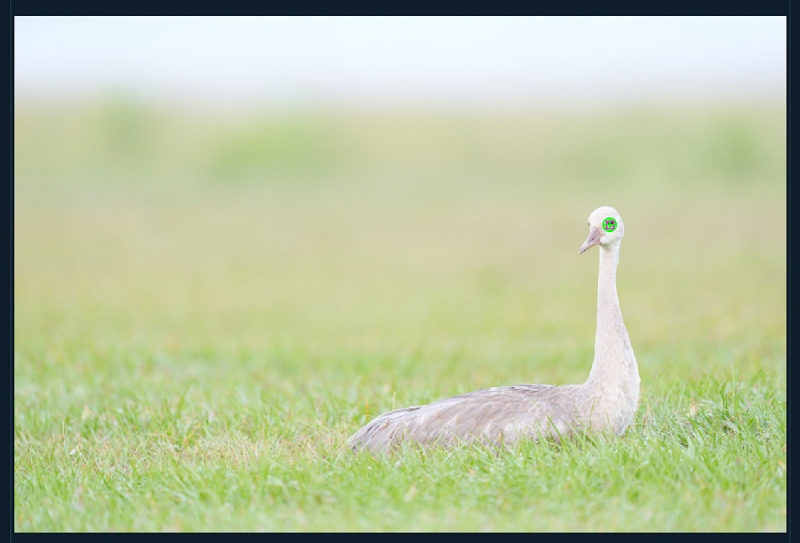May 26th, 2021 What’s Up?
Tuesday was another gorgeous morning at ILE. I got a few nice frames of one of the crane babies on the short grass on someone’s front lawn. Then, I was off to sit on my milk crate in the marsh. Again, a pair of Black-necked Stilts copulated right in front of me. Working at ground level at 840mm, I knew what was coming when the pair began splashing each other. I did not have the guts to take the time to remove the TC, so I was a bit tight with some of the frames, but got some very sweet stuff. Then I moved 30 yards to my right to go after another pair of stilts — they are getting tamer and tamer. Anyhoo, had I stayed where I was, I would have had some really great chances with the Limpkin chicks …
Belated congrats to Phil Mickelson who at age 50 (going on 51), became the oldest player to ever win a major golf tournament. That brought back memories of Tom Watson in the 2009 British Open. At age 59, Watson bogied the 18th hole after a perfect approach shot to the green. And then lost in a playoff to Stewart Cink.
Today is Wednesday 25 May 2021. The forecast for this morning is calling for partly cloudy with a southeast breeze. 5:45 I was sitting on a bench outside of Quest Diagnostics, first on line for a blood draw. They open at 6:30 so I will be headed down to the lake to check things out as soon as I am done. This afternoon I am driving over to Gulfport to meet up with Clemens Van der Werf for three days of photography at Fort DeSoto. I’ll be home on Saturday afternoon. Wherever you are, and whatever you are doing, I hope that you have a great day.
This blog post took about an hour to prepare, and makes 152 consecutive days with a new one. Please remember that if an item — a Delkin flash card, or a tripod head — for example, that is available from B&H and/or Bedfords and is also available in the BAA Online Store, it would be great if you opt to purchase from us. We will match any price. Please remember also to use my B&H affiliate links or to save 3% at Bedfords by using the BIRDSASART discount code at checkout. Doing either often earns you free guides and/or discounts. And doing so always earns my great appreciation.
Please Remember
With income from IPTs now at zero, please, if you enjoy and learn from the blog, remember to use one of my two affiliate programs when purchasing new gear. Doing so just might make it possible for me to avoid having to try to get a job as a Walmart greeter and will not cost you a single penny more. And if you use Bedfords and remember to enter the BIRDSASART code at checkout, you will save 3% on every order and enjoy free second-day air shipping. In these crazy times — I am out at least forty to sixty thousand dollars so far due to COVID 19 (with lots more to come) — remembering to use my B&H link or to shop at Bedfords will help me out a ton and be greatly appreciated. Overseas folks who cannot order from the US because of import fees, duties, and taxes, are invited to help out by clicking here to leave a blog thank you gift if they see fit.
New and Better Bedfords Discount Policy!
You can now save 3% on all of your Bedfords photo gear purchases by entering the BIRDSASART coupon code at checkout. Your discount will be applied to your pre-tax total. In addition, by using the code you will get 2nd day air shipping via Fed Ex.
Grab a Nikon AF-S Teleconverter TC-14E III and save $14.99. Purchase a Canon EOS R5 and your discount will be $116.97. Purchase a Sony FE 600mm f/4 GM OSS lens and save a remarkable $389.94! Your Bedford’s purchase no longer needs to be greater than $1,000.00 for you to receive a discount. The more you spend, the more you save.
Money Saving Reminder
Many have learned that if you need a hot photo item that is out of stock at B&H and would enjoy free second-day air shipping, your best bet is to click here, place an order with Bedfords, and enter the coupon code BIRDSASART at checkout. If an item is out of stock, contact Steve Elkins via e-mail or on his cell phone at (479) 381-2592 (Central time). Be sure to mention the BIRDSASART coupon code and use it for your online order to save 3% and enjoy free 2nd-day air shipping. Steve has been great at getting folks the hot items that are out of stock at B&H and everywhere else. The wait lists at the big stores can be a year or longer for the hard to get items. Steve will surely get you your gear long before that. For the past year, he has been helping BAA Blog folks get their hands on items like the SONY a9 ii, the SONY 200-600 G OSS lens, the Canon EOS R5, the Canon RF 100-500mm lens, and the Nikon 500mm PF. Steve is personable, helpful, and eager to please.


Gear Questions and Advice
Too many folks attending BAA IPTs (remember those?) and dozens of photographers whom I see in the field and on BPN, are–out of ignorance–using the wrong gear especially when it comes to tripods and more especially, tripod heads… Please know that I am always glad to answer your gear questions via e-mail.
|
|
|
This image was created down by the lake at ILE on 25 May 2021. While sitting on a milk crate along behind my flattened
Induro GIT 304L topped by a Levered-Clamp FlexShooter Pro, I used my Sony FE 600mm f/4 GM OSS lens with the Sony FE 1.4x Teleconverter and The One, the Sony Alpha 1 Mirrorless digital camera. ISO 640. Exposure determined via Zebras with ISO on the rear dial: 1/1600 sec. at f/5.6 (wide open) in Manual mode. AWB at 8:06am on clear sunny morning.
Wide/AF-C was active at the moment of exposure and performed quite well nailing the adult’s neck just beyond the chin. Click on the image to see a larger version.
Limpkin adult with hungry chick feeding
|
It’s a Start …
I set out on Tuesday morning with plans to perhaps create a few decent images of the Limpkin family, two adults with three chicks. This cropped image was the best I could do. Had I been a bit more patient — not my strong suit, and stuck to the original plan, I would have had some really great chances.
I knew I had the perfect exposure for the stilts, so when the darker Limpkins showed up, I lowered the shutter speed two clicks. That was right on the money; the RawDigger adapted histogram showed the G channel pushed right to the 16000 line. The only OvExp pixels were on the specular highlights on the bill. I will take another crack at the Limpkins today and try to stick to the plan.
Your Call?
What do you like about today’s featured image? What don’t you like?
Sony Alpha a1 AF
Barring operator error, the performance of the Sony Alpha a1 AF system at any focal length — including at 1200mm as seen in recent blog posts — is, when the a1 is set up properly as detailed in the in e-mails to the Sony Alpha a1 Info & Updates group, more than remarkable. Early on, there was lots of discussion within the group with many preferring multiple back button approaches. For me a simple shutter button approach with the right AF settings that yield 99% sharp-on-the-eye images is best. By far. It is super-simple and mega-effective. In recent SONY Alpha a1 Set-up and Info Group e-mails, I shared what I have learned as to when and it what situations it is best to abandon Wide. And with what. The group has already learned to limit the AF Area choices and to switch AF Areas quickly and conveniently. The default method of switching AF points with the C2 button is both slow and cumbersome. In addition, recent e-mails have detailed the best program to use to pick your a1 keepers and the big problem with the Camera Set. Memory menu item.
SONY Alpha a1 Set-up and Info Group
The SONY Alpha a1 Set-up and Info Group is going great guns as folks chime in with thoughtful questions and experience-based advice. We are now up to an astounding 49 blessed folks. Early on, we discussed the myriad AF options. I gave my opinion as to the best one for flight and general bird photography. More recently, we have been in contact with folks at SONY sharing our thoughts, experiences, and frustrations with the EVF blackout problem.
All who purchased their Alpha a1 bodies via a BAA affiliate link will receive a free subscription to the Sony Alpha a1 Set-Up and Info Updates after shooting me their receipts via e-mail. (Note: it may take me several days to confirm B&H orders.) This same service may be purchased by anyone with an a1 body via a $150.00 PayPal sent to birdsasart@verizon.net indicating payment for Alpha a1 Info Updates. Alternatively, folks can call Jim weekdays at 1-863-692-0906 to pay via credit card. New members will receive composite e-mails that summarize all previous discussions.
Typos
With all blog posts, feel free to e-mail or to leave a comment regarding any typos or errors.
May 25th, 2021 What’s Up?
On a gorgeous Monday morning, I concentrated on the two large colts and the two growing chicks. A rather late visit to the marsh to the left of the pier revealed that at least one pair of Black-necked Stilts might have a nest … I ran down at sunset for a short sunset session. So far, only Boat-tailed Grackles have landed on The Perch II.
I got some more work done on the second edit of my APRIL 2021 folder. I will start work today on a simple Viveza II instructional video.
The forecast for ILE for this morning — Tuesday 25 May 2021, is perfect: clear and sunny with a gentle breeze from the northeast. I will likely spend a good deal of time sitting on the milk crate in the marsh in hopes of getting better images of the Limpkin chicks that I photographed yesterday. Wherever you are, and whatever you are doing, I hope that you have a great day.
This blog post took about two hours to prepare, and makes 151 consecutive days with a new one. Please remember that if an item — a Delkin flash card, or a tripod head — for example, that is available from B&H and/or Bedfords and is also available in the BAA Online Store, it would be great if you opt to purchase from us. We will match any price. Please remember also to use my B&H affiliate links or to save 3% at Bedfords by using the BIRDSASART discount code at checkout. Doing either often earns you free guides and/or discounts. And doing so always earns my great appreciation.
|
|
Image #0: From the last two mornings at ILE
|
What You’ve Been Missing
All of the images in the screen capture above were created on either May 23rd or 24th with the hand held SONY 200-600 and the a1. The pickings are easy.
ILE In-the-Field Sessions
Sandhill Crane colts and small chicks guaranteed!
Wednesday May 26 or Sunday May 30, 2021.
2-hour session: $300.00/each
The crane colts family and the crane chicks family have been utterly dependable for the past few days. Join me for a morning at Indian Lake Estates with a money-back guarantee: if we do not get to photograph either the colts and/or the chicks at close range, you will get every penny back. Also possible: Ospreys in flight and Black-necked Stilts.
Lodging and Photoshop lessons available. If you are seriously interested in joining me for one or more sessions, get in touch via e-mail or call or text me on my cell at 863-221-2372.
Please Remember
With income from IPTs now at zero, please, if you enjoy and learn from the blog, remember to use one of my two affiliate programs when purchasing new gear. Doing so just might make it possible for me to avoid having to try to get a job as a Walmart greeter and will not cost you a single penny more. And if you use Bedfords and remember to enter the BIRDSASART code at checkout, you will save 3% on every order and enjoy free second-day air shipping. In these crazy times — I am out at least forty to sixty thousand dollars so far due to COVID 19 (with lots more to come) — remembering to use my B&H link or to shop at Bedfords will help me out a ton and be greatly appreciated. Overseas folks who cannot order from the US because of import fees, duties, and taxes, are invited to help out by clicking here to leave a blog thank you gift if they see fit.
New and Better Bedfords Discount Policy!
You can now save 3% on all of your Bedfords photo gear purchases by entering the BIRDSASART coupon code at checkout. Your discount will be applied to your pre-tax total. In addition, by using the code you will get 2nd day air shipping via Fed Ex.
Grab a Nikon AF-S Teleconverter TC-14E III and save $14.99. Purchase a Canon EOS R5 and your discount will be $116.97. Purchase a Sony FE 600mm f/4 GM OSS lens and save a remarkable $389.94! Your Bedford’s purchase no longer needs to be greater than $1,000.00 for you to receive a discount. The more you spend, the more you save.
Money Saving Reminder
Many have learned that if you need a hot photo item that is out of stock at B&H and would enjoy free second-day air shipping, your best bet is to click here, place an order with Bedfords, and enter the coupon code BIRDSASART at checkout. If an item is out of stock, contact Steve Elkins via e-mail or on his cell phone at (479) 381-2592 (Central time). Be sure to mention the BIRDSASART coupon code and use it for your online order to save 3% and enjoy free 2nd-day air shipping. Steve has been great at getting folks the hot items that are out of stock at B&H and everywhere else. The wait lists at the big stores can be a year or longer for the hard to get items. Steve will surely get you your gear long before that. For the past year, he has been helping BAA Blog folks get their hands on items like the SONY a9 ii, the SONY 200-600 G OSS lens, the Canon EOS R5, the Canon RF 100-500mm lens, and the Nikon 500mm PF. Steve is personable, helpful, and eager to please.


Gear Questions and Advice
Too many folks attending BAA IPTs (remember those?) and dozens of photographers whom I see in the field and on BPN, are–out of ignorance–using the wrong gear especially when it comes to tripods and more especially, tripod heads… Please know that I am always glad to answer your gear questions via e-mail.
Sump Scores and BPN
I met Brian Sump more than a year ago in the Avian Forum at BirdPhotographers.Net. Like Kevin Hice before him, Brian is a shining example of a young bird photographer who has worked hard and vastly improved his skills and the quality of his images by participating full out in the Avian Forum. You can learn more about Brian’s progress in the blog post here.
Brian is quite clever with words when he chooses titles for his BPN posts. For this image he came up with Warning!, and followed that with May cause nightmares … You can learn what the boys and girls on BPN had to say about this image here in the Avian Forum.
A New, Hand Held, Ground Level/Rear Screen Shooting Technique That is Not for the Average Joe …
I spoke by phone with Brian about the creation of this image. I had assumed that he had been lying down working with his eye to the viewfinder. Not. He was sitting on a rock dam holding the lens about in front of him, sort of Indian- style, with his heels together and his knees apart. The camera rests on the inside of his heels. He’s holding the camera — with the rear screen tilted out about 45 degrees, in his right hand. With his torso leaning forward, his left hand supports and aims the front of the big lens. He states that every shooting session is an incredibly difficult best core workout.
Even finding the bird in the frame is very, very difficult. This technique is one that I would not attempt, even once.
|
|
Image #1B: DPP 4 AF Points for the Western Grebe down-the-throat shot original.
|
The Active R5 AF Points
Here is an adapted excerpt from The BIRDS AS ART Canon EOS R5 Camera User’s e-Guide:
When Face Detection plus Tracking AF cannot detect an eye, the system will revert to a box of varying sizes with smaller boxes when it gets on the bird’s face, and bigger boxes that cover large parts of the subject. And at times, when it is struggling even more, it goes to a zone-like AF with the dancing points. The good news is that in most cases, the image winds up being razor-sharp on the bird’s eye.
And that is exactly what occurred successfully with Brian’s spectacular image.
Canon R5 Crop-ability
As seen here, sharp R5 images can stand up to healthy crops. I’d estimate that Image #1A above contains no more than 30% of the original pixels. Yet the image quality remains superb.
Boxy or 2X3?
A tough question: which crop do you prefer, the boxy crop of Image #1 or the more traditional 2X3 crop of Image #1A? Please let us know why.
|
|
|
Cover Image courtesy of and Copyright 2021 Brian Sump (Sump scores!)
|
The BIRDS AS ART Canon EOS R5 Camera User’s e-Guide: $75.00
The guide is 82 pages long: 21,458 words. More than 50 DPP 4 Autofocus-depicting screen captures. And a 31 minute 44 second educational video. This guide took three and a half months of hard work and a ton of help from at least seventeen very helpful and generous folks.
The guide covers — in great detail — all Menu Items that are relevant to bird, nature, and wildlife photography. It does not cover video. The section on AF methods and the AF Gallery has been expanded from the R5/R6 AF e-guide. It remains the one of the great strengths of this guide. I share my thoughts on what I am sure is the single best AF Method for photographing birds in flight. As most of you know, the guide includes a simple and easy way to change AF Methods that was introduced to me by Geoff Newhouse. In the AF Gallery you will see exactly how Face Detection plus Tracking AF works. In the Educational R5 Gallery video, I share my favorite R5 images along with dozens of bird photography tips and techniques.
In addition, I teach you how to get the best exposures with your R5. Detailed instructions on using the great In-camera HDR and Multiple Exposure features will be appreciated by creative folks who like to have fun. The three shutter modes are explained in detail as well. Bruce Dudek solved the can’t-get-to-Auto ISO problem that had stumped everyone at Canon. This information is of course shared in the guide. You will learn how to set up your EVF (Electronic Viewfinder) and Screen toggle options. Not to mention that the mysterious performance of the Q Button is revealed and simplified. Brian Sump’s images reveal how well you can do when using the R5 with EF lenses using one of the three Canon EF-EOS R Mount Adapters (as Donna did with Image #1 below). You will learn how I use Customize Dials to put either ISO or EC on the Thumb Dial and how to set up and save Custom Shooting Modes (C1-C3) that can remember both your Customize Dial and Customize Button settings! That is something that none of the SONY bodies do. 🙁 Near the end of the guide I share my all-important MY MENU items with you.
Like all BAA educational materials, the R5 guide is written in my informal, easy-to-follow style. I am quite proud of this guide and look forward to hearing your thoughts on our hard work.
You can purchase your copy of the BIRDS AS ART Canon EOS R5 Camera User’s e-Guide for $75.00 here in the BAA Online Store or by calling Jim in the office weekday afternoons at 863-692-0906 with your credit card in hand.
From the late Luis Grunauer via e-mail
I’ve watched the R5 gallery video. I LOVE THE PHOTOS and the stories behind them, not to mention that the EXIF data is displayed in Photo Mechanic. Your explanations of the settings and the processes are very helpful. Your comments on framing and composition (both the great ones and the ones you refer to as “created by operator error”) were enlightening. It gives folks a chance to learn from someone with lots of in-the-field hands on experience with the R5! Well done and thanks so much for sharing it with me. There is some awesome teaching in the video to say the least!
From Ron Santini via e-mail
I have an R5 and purchased your “The BAA R5/R6 AF Guide” about a month ago. It has been a game-changer for me. I previously used back button focus (BBF), but after following your guide, that is a thing of the past. You truly simplified the process and I just want to thank you.
Typos
With all blog posts, feel free to e-mail or to leave a comment regarding any typos or errors.
May 24th, 2021 What’s Up?
I had a very good session on Sunday morning. I photographed the crane colts and the crane chicks. The latter are getting large enough to be visible above the grass. Recognizing the wind and light conditions, my best images were of an Osprey landing with some chunks of reddish bark for its nest. Last were some good ground level images of a pair of Black-necked Stilts. I’ve started going down at sunset to check out The Perch II. So far, nothing but Boat-tailed Grackles …
Today is Monday 24 May 2021. I will be heading down to the lake soon no matter the weather. Today, I will be consolidating all of my April photo sessions into a single folder and then doing a second edit. Wherever you are, and whatever you are doing, I hope that you have a great day.
This blog post took about two hours to prepare, and makes 150 consecutive days with a new one. Please remember that if an item — a Delkin flash card, or a tripod head — for example, that is available from B&H and/or Bedfords and is also available in the BAA Online Store, it would be great if you opt to purchase from us. We will match any price. Please remember also to use my B&H affiliate links or to save 3% at Bedfords by using the BIRDSASART discount code at checkout. Doing either often earns you free guides and/or discounts. And doing so always earns my great appreciation.
|
|
ImaGE #0: From the last two mornings at ILE
|
What You’ve Been Missing
All of the images in the screen capture above were created on either May 23rd or 24th with the hand held SONY 200-600 and the a1. The pickings are easy.
ILE In-the-Field Sessions
Sandhill Crane colts and small chicks guaranteed!
Tuesday May 25, Wednesday May 26, or Sunday May 30, 2021.
2-hour session: $300.00/each
The crane colts family and the crane chicks family have been utterly dependable for the past few days. Join me for a morning at Indian Lake Estates with a money-back guarantee: if we do not get to photograph either the colts and/or the chicks at close range, you will get every penny back. Also possible: Ospreys in flight and Black-necked Stilts.
Lodging and Photoshop lessons available. If you are seriously interested in joining me for one or more sessions, get in touch via e-mail or call or text me on my cell at 863-221-2372.
Please Remember
With income from IPTs now at zero, please, if you enjoy and learn from the blog, remember to use one of my two affiliate programs when purchasing new gear. Doing so just might make it possible for me to avoid having to try to get a job as a Walmart greeter and will not cost you a single penny more. And if you use Bedfords and remember to enter the BIRDSASART code at checkout, you will save 3% on every order and enjoy free second-day air shipping. In these crazy times — I am out at least forty to sixty thousand dollars so far due to COVID 19 (with lots more to come) — remembering to use my B&H link or to shop at Bedfords will help me out a ton and be greatly appreciated. Overseas folks who cannot order from the US because of import fees, duties, and taxes, are invited to help out by clicking here to leave a blog thank you gift if they see fit.
New and Better Bedfords Discount Policy!
You can now save 3% on all of your Bedfords photo gear purchases by entering the BIRDSASART coupon code at checkout. Your discount will be applied to your pre-tax total. In addition, by using the code you will get 2nd day air shipping via Fed Ex.
Grab a Nikon AF-S Teleconverter TC-14E III and save $14.99. Purchase a Canon EOS R5 and your discount will be $116.97. Purchase a Sony FE 600mm f/4 GM OSS lens and save a remarkable $389.94! Your Bedford’s purchase no longer needs to be greater than $1,000.00 for you to receive a discount. The more you spend, the more you save.
Money Saving Reminder
Many have learned that if you need a hot photo item that is out of stock at B&H and would enjoy free second-day air shipping, your best bet is to click here, place an order with Bedfords, and enter the coupon code BIRDSASART at checkout. If an item is out of stock, contact Steve Elkins via e-mail or on his cell phone at (479) 381-2592 (Central time). Be sure to mention the BIRDSASART coupon code and use it for your online order to save 3% and enjoy free 2nd-day air shipping. Steve has been great at getting folks the hot items that are out of stock at B&H and everywhere else. The wait lists at the big stores can be a year or longer for the hard to get items. Steve will surely get you your gear long before that. For the past year, he has been helping BAA Blog folks get their hands on items like the SONY a9 ii, the SONY 200-600 G OSS lens, the Canon EOS R5, the Canon RF 100-500mm lens, and the Nikon 500mm PF. Steve is personable, helpful, and eager to please.


Gear Questions and Advice
Too many folks attending BAA IPTs (remember those?) and dozens of photographers whom I see in the field and on BPN, are–out of ignorance–using the wrong gear especially when it comes to tripods and more especially, tripod heads… Please know that I am always glad to answer your gear questions via e-mail.
|
|
|
I-Phone image at 1/2 magnification (wide-angle). Click on the image to see a version that fits in your browser window.
Note: most of this frame is shallow water.
Image #1: the view from the milk crate
|
Near-ground Level Shooting on the Tripod in the Water
I leave the bottom tripod leg sections extended about one inch. All the other leg sections are not extended at all. That allows me to have the tripod as low as possible. Before splaying the legs completely, I will usually loop the lens strap a few times around the near-end of the lens to keep it dry. Having my reading glasses with me for these endeavors is important. Once I set the tripod down firmly, I level the Induro GIT 304L topped by a Levered-Clamp FlexShooter Pro so that I can pan left and right while remaining perfectly level. I activate the Level to make sure that I am perfect. Then I toggle the Level off. Next, of course, is to flip up the rear screen to about 45 degrees.
It takes some practice to find the bird in the lens so that you can see it on the rear screen. Once you’ve done that, double-check your exposure by whatever method you use. It is of course, easiest for those using SONY Zebra technology (assuming of course that the camera is set up correctly). With small in the frame subjects the trick is to acquire focus with the subject in the center of the frame, and then pan to move the subject back in the frame. At times, even the AF system of the a1 is blind. With the 600 GM, it is a simple matter of focusing manually until the bird becomes fairly sharp and is thus visible to the AF system. With large in the frame subject’s such as the Black-necked Stilt in Image #2, you simply have to trust the Face/Eye/Subject tracking AF. Learn more in the AF point screen capture below.
I wear a long-sleeved outdoors shirt with two large pockets on the upper chest (like a dress shirt would have). I keep the TC caps in the left pocket, and my cell phone in the right. If I need to remove the TC, I can simply drop it in the left hand pocket and be good to go. I’ll pop my glasses into the right hand pocket for flight photography. The pockets have flaps with Velcro closures. I make sure to shut the pockets carefully ;if I get up to do something and happen to bend over, I do not want anything to fall into the lake.
The huge advantage of sitting on the milk crate (or when sitting on a beach or a mudflat using a Panning Ground Pod) is that you stay relatively dry and relatively clean. All that without having to strain your lower back and neck … Do understand that in general you have more control when lying down flat, but understand that there are large prices to pay (as noted in the two previous sentences). Shooting off the rear screen while seated is child’s play as compared to truly getting down and dirty.
One thing that I have failed to mention is that if you are working super-low off the rear screen and spot a bird in the distance flying toward you, it is possible — even easy with a slow-flying bird, to flip the rear screen down, unclamp the lever, grab the rig, and hand hold it for flight.
|
|
The iPhone Photography e-Guide
To order your copy of the iPhone Photography e-Guide, please click here.
The PDF is sent link by e-mail for downloading: the file is relatively huge at 216 MB.
|
Hard to Believe
Yes, Cliff has a great eye and wonderfully creative vision. Yet it is still hard for me to believe that he can make so many great images with “just“ an i-phone. Almost more amazingly Cliff captures with his iPhone and does all of his post-processing on the phone! In this great new e-Guide written for BIRDS AS ART you will learn to use set up you iPhone quickly and efficiently and how to use it. In addition, there are dozens and dozens of tips on Cliff’s favorite apps and his favorite gear. Scroll down to the bottom to see the Table of Contents.
The iPhone Photography e-Guide: $20.00.
To order your copy of the iPhone Photography e-Guide please click here.
Dr. Cliff Oliver
Dr. Cliff Oliver is an award-winning photographer, former photography instructor for the San Diego Natural History Museum, cutting-edge integrative health care professional, and international workshop leader. He created and taught the first 5-day immersion iPhone photography workshop at Hollyhock, Canada’s premier Leadership Learning Center. He teaches quarterly iPhone photography classes at the Athenaeum Music & Arts Library School of the Arts (these include Art on the iPhone, iPhoneography, Portraits and Selfies, and Practicing in the Field). His images have been on the cover of WildBird magazine, on display at Scripps Oceanography Institute, and been honored with multiple first-place finishes in the International Exhibition of Photography Del Mar. The San Diego Natural History Museum’s, “Birds of the World” centennial exhibit featured several of his images. One of his iPhone images received an honorable mention in the Athenaeum 23rd annual juried exhibition. He has displayed images at Art Speaks: Expressions of Hope and Healing and has produced a series of books, called Zen I, II, III, IV, V, VI and VII that feature original images that promote inner peace. The last 4 books feature only images taken on the iPhone. He teaches individuals and groups the skills of capturing iPhone/mobile photographs and then how to create personalized works of art.
To see some of Cliff’s iPhone images, click here. Learn more about Cliff and what he does on his Center for Balance website here. And don’t forget, if I had never met Cliff I would be pushing up daisies somewhere. To request my Health Basics File that contains the whole story, please shoot me an e-mail by clicking here..
|
|
|
This image was created down by the lake at ILE on 21 May 2021. While sitting on a milk crate along behind my flattened
Induro GIT 304L topped by a Levered-Clamp FlexShooter Pro, I used my Sony FE 600mm f/4 GM OSS lens with the Sony FE 1.4x Teleconverter and The One, the Sony Alpha 1 Mirrorless digital camera. ISO 500. Exposure determined via Zebras with ISO on the rear dial: 1/2000 sec. at f/5.6 (wide open) in Manual mode. AWB at 7:35am on clear sunny morning.
Wide/AF-C was active at the moment of exposure and performed beyond flawlessly — see the second screen capture below. Click on the image to see a larger version.
Image #2: Black-necked Stilt male feeding
|
Success!
When you do everything just right, the results can be spectacular. Today’s featured image is full frame. The raw file was converted in Adobe Camera Raw and aside from a layer of Topaz DeNoise, is pretty much right out of camera. As regular readers know, I have recently become obsessed with ground level shooting. It’s official: I am now addicted.
The males of this species are totally black above, while the females have a brownish saddle of feathers on their backs.
|
|
Image #2A: The RawDigger Adapted (Pink) histogram for the Black-necked Stilt male feeding image
|
Dead Solid Perfect Exposures …
This one, with the G channel just a shade inside the 16000 line, is better than most as far as exposures go. Learn how to fine tune your exposures in the RawDigger e-Guide.
|
|
RawDigger e-Guide with Two Videos
|
The RawDigger e-Guide with Two Videos
by Arthur Morris with Patrick Sparkman
The RawDigger e-Guide was created only for serious photographers who wish to get the absolute most out of their raw files.
Patrick and I began work on the guide in July 2020. At first we struggled. We asked questions. We learned about Max-G values. We puzzled as to why the Max G values for different cameras were different. IPT veteran Bart Deamer asked lots of questions that we could not answer. We got help from RawDigger creator Iliah Borg. We learned. In December, Patrick came up with an Adapted Histogram that allows us to evaluate the exposures and raw file brightness for all images created with all digital camera bodies from the last two decades. What we learned each time prompted three complete beginning to end re-writes.
The point of the guide is to teach you to truly expose to the mega-Expose-to-the-Right so that you will minimize noise, maximize image quality, best utilize your camera’s dynamic range, and attain the highest possible level of shadow detail in your RAW files in every situation. In addition, your properly exposed RAW files will contain more tonal information and feature the smoothest possible transitions between tones. And your optimized images will feature rich, accurate color.
We teach you why the GREEN channel is almost always the first to over-expose. We save you money by advising you which version of RawDigger you need. We teach you how to interpret the Max G values for your Canon, Nikon, and SONY camera bodies. It is very likely that the Shock-your-World section will shock you. And lastly — thanks to the technical and practical brilliance of Patrick Sparkman — we teach you a simple way to quickly and easily evaluate your exposures and raw file brightness using an Adapted RawDigger histogram.
The flower video takes you through a session where artie edits a folder of images in Capture One while checking the exposures and Max-G values in RawDigger. The Adapted Histogram video examines a series of recent images with the pink histograms and covers lots of fine points including and especially how to deal with specular highlights. The directions for setting up the Adapted Histogram are in the text.
If we priced this guide based on how much effort we put into it, it would sell it for $999.00. But as this guide will be purchased only by a limited number of serious photographers, we have priced it at $51.00. You can order yours here in the BAA Online Store.
|
|
Image #2B: The AF point for the Black-necked Stilt male feeding image
|
More-Than-You-Could-Ever-Hope-For Autofocus …
With large-in-the-frame birds, most AF systems will simply grab the side of the bird leaving the head and eye quite soft, well beyond point of focus. Even with my reading glasses on I cannot see the tiny green box that tracks the bird’s eye with the a1. And though I am forced to trust the AF system, I never dreamed that it would have performed so superbly in this situation. But it did, not only for this image but for all those in the series!
Sony Alpha a1 AF
Barring operator error, the performance of the Sony Alpha a1 AF system at any focal length — including 1200mm as seen in recent blog posts — is, when the a1 is set up properly as detailed in the in e-mails to the Sony Alpha a1 Info & Updates group, more than remarkable. Early on, there was lots of discussion within the group with many preferring multiple back button approaches. For me a simple shutter button approach with the right AF settings that yield 99% sharp-on-the-eye images is best. By far. It is super-simple and mega-effective. In the next SONY Alpha a1 Set-up and Info Group e-mail, I will be sharing what I have learned as to when and it what situations it is best to abandon Wide. And with what. The group has already learned to limit the AF Area choices and to switch AF Areas quickly and conveniently. The default method of switching AF points with the C2 button is both slow and cumbersome.
SONY Alpha a1 Set-up and Info Group
The SONY Alpha a1 Set-up and Info Group is going great guns as folks chime in with thoughtful questions and experience-based advice. We are now up to an astounding 46 lucky folks. Early on, we discussed the myriad AF options. I gave my opinion as to the best one for flight and general bird photography. More recently, we have been in contact with folks at SONY sharing our thoughts, experiences, and frustrations with the EVF blackout problem.
All who purchased their Alpha a1 bodies via a BAA affiliate link will receive a free subscription to the Sony Alpha a1 Set-Up and Info Updates after shooting me their receipts via e-mail. (Note: it may take me several days to confirm B&H orders.) This same service may be purchased by anyone with an a1 body via a $150.00 PayPal sent to birdsasart@verizon.net indicating payment for Alpha a1 Info Updates. Alternatively, folks can call Jim weekdays at 1-863-692-0906 to pay via credit card. New members will receive composite e-mails that summarize all previous discussions.
Typos
With all blog posts, feel free to e-mail or to leave a comment regarding any typos or errors.
May 23rd, 2021 What’s Up?
Saturday morning was gorgeous, dead clear with a gentle northeast breeze. I was set-up on the edge of the marsh by 6:45am, but the Black-necked Stilts were nowhere to be seen. None showed up, nothing flew by, and nothing swam by. At 7:15, I left to drive around. There was an Osprey atop a dead cabbage palm struggling with a big Black Crappie. As that bird is is very shy, I stayed well back. The wind was perfect. But as I placed the lens on the lowered window the bird flew off. It was gonna be one of those days …
I drove around some more with similar results. I did see all five of the young Sandhill Cranes along the lakefront, making a few images only of the half-grown colts. I headed home early and decided to go look for a new perch. Anita North and I had searched for and set up a new one last week. The very attractive top broke off as we took it out of my SUV. We thought that we had repaired it well with duct tape and wire, but by the next day the repair failed, probably startling the first Osprey that landed on it. So I decided to look for a new perch a few blocks from my house.
I was fairly deep in the woods when a friendly voice said, “Arthur, is that you?” It was my neighbor Ralph. On that day, at that minute, Ralph was the perfect person to run into. Keep reading below to learn why.
Today is Sunday 23 May 2021. I will be heading down to the lake soon no matter the weather. Wherever you are, and whatever you are doing, I hope that you have a great day.
This blog post took about 90 minutes to prepare, and makes 149 consecutive days with a new one. Please remember that if an item — a Delkin flash card, or a tripod head — for example, that is available from B&H and/or Bedfords and is also available in the BAA Online Store, it would be great if you opt to purchase from us. We will match any price. Please remember also to use my B&H affiliate links or to save 3% at Bedfords by using the BIRDSASART discount code at checkout. Doing either often earns you free guides and/or discounts. And doing so always earns my great appreciation.
ILE In-the-Field Sessions
Sandhill Crane colts and small chicks guaranteed!
Monday May 24, Tuesday May 25, or Wednesday May 26, 2021
2-hour sessions: $300.00
The crane colts family and the crane chicks family have been utterly dependable for the past few days. Join me for a morning at Indian Lake Estates with a money-back guarantee: if we do not get to photograph either the colts or the chicks at close range you will get every penny back. Also possible: Ospreys in flight and Black-necked Stilts.
Lodging and Photoshop lessons available. If you are seriously interested in joining me for one or more sessions, get in touch via e-mail or call or text me on my cell at 863-221-2372.
|
|
|
This image was created on 22 May 2021 in the marsh down by the lake at ILE. I used the hand held Sony FE 200-600mm f/5.6-6.3 G OSS lens (at 368mm) and The One, the Sony Alpha 1 Mirrorless digital camera. ISO 1000. Exposure determined via Zebras with ISO on the rear dial: 1/1250 sec. at f/6.3 (wide open) in Manual mode. The exposure was confirmed as perfect by RawDigger. AWB at 8:08pm with some haze along the western horizon.
Wide/AF-C was active at the moment of exposure and performed perfectly. Click on the image to see a version that fits in your browser window.
Image #1: The Perch II on Day One at sunset
|
The Right Man at the Right Time …
So Ralph says to me, “Whatcha doing?””Looking for the perfect perch,” I replied. We chatted for a while and an hour later, we were driving around in Ralph’s somewhat battered truck with a chain saw in the bed. We looked and looked and I explained him why each dead tree he pointed out was not the perfect perch. “You’re being quite picky, “he said. “You are correct sir.” Anyhoo, I finally spotted a dead tree that I thought would do the trick. It was tall enough –about 18 or 20 feet. It was very sturdy compared to previous perches. And the single branch at the top, on your left in the image above, seemed to be perfect for all manner of large birds like Osprey, Anhinga, and Great Blue Heron.
The first trick would be to cut the tree down without breaking off the single side-perch near the top. We came up with a plan. Ralph made the first cut from the bottom. Then he taught me to use the chain saw. I would make the top cut and Ralph, shorter, 15 years younger than me, and quite a bit stronger, would break the fall of the tree to prevent the side perch from snapping off. I had never used a chain saw before, so my goal was not to cut off a hand or part of a leg. I made the cut and withdrew the saw as the tree began to crack and fall. It was a great plan, but the tree was too large and too heavy for Ralph to manage; he lost control of it almost instantly and it crashed to the ground. We heard a loud crack, and we were both sure that the side perch had broken off. Miraculously, it had not.
After Ralph cut off the bottom four feet of the new perch, we wrestled it into the back of his truck. It probably weighed at least 80 pounds. We stopped by my house to grab a post-hole digger and by Ralph’s house to grab two five-gallon buckets. We drove to the home of a guy whose lawn Ralph mows regularly to fill the buckets with broken and smashed roof tiles. So far, so good.
Anita and I had found and set up the first The Perch about three or four years ago. The birds loved it and I shared many of the images made of birds sitting atop (and flying to and from) The Perch here on the blog. About a year and a half ago, the top cracked off. I attempted to repair it, but it was not tall enough and, as above, the repair failed. I set up several other perches fairly recently, but none of them were any good for various reasons. The trick now would be to plant the new perch successfully.
|
|
|
This image was created on 23 May 2021 in the marsh down by the lake at ILE. I used the hand held Sony FE 24-105mm f/4 lens at 24mm and The One, the Sony Alpha 1 Mirrorless digital camera. ISO 1000. Exposure determined via Zebras with ISO on the rear dial: 1/80 sec. at f/4 (wide open) in Manual mode. The exposure was confirmed as perfect by RawDigger. AWB at 6:35am in pre-dawn light.
Upper Zone/AF-C was active at the moment of exposure and performed perfectly. Click on the image to see a version that fits in your browser window.
Image #2: The Perch II on the morning of Day Two in the pre-dawn
|
Success!
I picked a spot for the new perch and started the hole with a long-handled spade as Ralph suggested. Then he took over with the post-hole digger. When Anita and I had set up the perch that failed last week, it took me about 20 minutes to dig a four-inch wide 18-inch deep hole. As The Perch II was much bigger and much heavier, we would need a much deeper and much wider hole. I volunteered to go back to the truck and grab the two buckets of rocks. When I returned five minutes later I was amazed; the hole was about eight inches wide and three feet deep! Ralph was a machine!
In short order, The Perch II was upright in the hole. We rotated it so that the side perch would be close to square with both the rising and the setting sun (as the position of the sun in the sky changed with the seasons). Then we filled in the hole with rocks, tamped them down with a shovel, and topped that off with a few shovel-fulls of dirt. Last was to pour two half-buckets of water onto the dirt and into the hole and stamp the mud down. Running into Ralph on Saturday morning was quite serendipitous as he was surely the right man for the moment. Without his help, strength, and brains, not to mention his chain saw, the Perch II would never had happened.
Ralph thinks that this perch will definitely outlast me. And I agree.
Now, it is up to the birds. I am quite optimistic, but only time will tell …
Thanks, Ralph!
|
|
Designing and Creating Pleasing and Dramatic Natural History Images
A Video Webinar: $30 by electronic download
Order your copy by clicking here.
|
Designing and Creating Pleasing and Dramatic Natural History Images
A Video Webinar
In this 1 hour 28 minute plus video you will learn and be inspired. We cover everything from the very basics to the fine points. After a brief bio, the topics include Behavior, Action, Diagonal Lines, and the Cuteness Factor; Birds in Flight — The Holy Grail of Bird Photography; Mis-Framing!; Basic Image Design/HORIZONTALS: Get the subject out of the center of the frame. Basic Image Design/VERTICALS: The center of the frame is generally fine; The Importance of BACKGROUND; Isolating the Subject; Other Elements of Composition; On Getting Low; Going Wide for Bird-scapes; Super-tight!; Working in Sunny Conditions; Working in Cloudy Conditions; Working in Foggy Conditions; Working in the Shade; Working in Bad Weather; Creating Back-lit Images; Creating Silhouettes; and Creating Pleasing Blurs.
Each segment of the program consists of an average of about 15 images that will drive home the points being made, educate you, and inspire. The instructions and advice, given clearly and concisely, are based on my near-38 years of experience photographing birds with telephoto and super-telephoto lenses. And on several decades of creating educational blog posts.
This presentation is based on the webinar that I did for the South Shore Camera Club in April. You can find some of the comments below along with comments from two of the folks who viewed the webinar the night before the DeSoto IPT began.
You can order your copy of Designing and Creating Pleasing and Dramatic Natural History Images/A Video Webinar by clicking here or by calling Jim with your credit card in hand at 863-692-0906.
Typos
With all blog posts, feel free to e-mail or to leave a comment regarding any typos or errors.
May 22nd, 2021 What’s Up?
Anita and I were down at the lake early on Friday morning. She paid a final visit to the two crane families while I worked on the Black-necked Stilts off the flattened tripod in thee inches of water. It was a still, gorgeous morning, with water like glass. The more ground level stuff I shoot, the more I become addicted to the look. There is, however, one very big negative to working at or near ground level. And that is the subject of today’s post.
Anita North should be home by now. She flew to Buffalo on Friday and got a lift from there to her home in Toronto where she will do her mandatory two-week quarantine … We had a great visit.
Today is Saturday, 22 May 2021. The forecast is for more of the same, mostly sunny skies with a gentle breeze from the northeast. You will surely be able to find me sitting on my milk crate down by the edge of the marsh. Wherever you are, and whatever you are doing, I hope that you have a great day.
This blog post took about 90 minutes to prepare and makes 149 consecutive days with a new one. Please remember that if an item — a Delkin flash card, or a tripod head — for example, that is available from B&H and/or Bedfords and is also available in the BAA Online Store, it would be great if you opt to purchase from us. We will match any price. Please remember also to use my B&H affiliate links or to save 3% at Bedfords by using the BIRDSASART discount code at checkout. Doing either often earns you free guides and/or discounts. And doing so always earns my great appreciation.
Cataract Surgery …
If you are a nature photographer who has had any experience with cataract corrective surgery, please get in touch with Joe Norton via e-mail> He would love to chat with you.
Coincidentally, I had my annual eye exam with Dr. Braunstein in Lake Wales the other day. I love the guy. He always tells me the same thing: “You have the eyes of a non-diabetic.” That of course is music to my ears. He mentioned that I did have some evidence of cataracts, but that I probably would not live long enough for them to ever be a problem. I said, “That might be good or bad …” “At least 15 years,” he said.
Please Remember
With income from IPTs now at zero, please, if you enjoy and learn from the blog, remember to use one of my two affiliate programs when purchasing new gear. Doing so just might make it possible for me to avoid having to try to get a job as a Walmart greeter and will not cost you a single penny more. And if you use Bedfords and remember to enter the BIRDSASART code at checkout, you will save 3% on every order and enjoy free second-day air shipping. In these crazy times — I am out at least forty to sixty thousand dollars so far due to COVID 19 (with lots more to come) — remembering to use my B&H link or to shop at Bedfords will help me out a ton and be greatly appreciated. Overseas folks who cannot order from the US because of import fees, duties, and taxes, are invited to help out by clicking here to leave a blog thank you gift if they see fit.
New and Better Bedfords Discount Policy!
You can now save 3% on all of your Bedfords photo gear purchases by entering the BIRDSASART coupon code at checkout. Your discount will be applied to your pre-tax total. In addition, by using the code you will get 2nd day air shipping via Fed Ex.
Grab a Nikon AF-S Teleconverter TC-14E III and save $14.99. Purchase a Canon EOS R5 and your discount will be $116.97. Purchase a Sony FE 600mm f/4 GM OSS lens and save a remarkable $389.94! Your Bedford’s purchase no longer needs to be greater than $1,000.00 for you to receive a discount. The more you spend, the more you save.
Money Saving Reminder
Many have learned that if you need a hot photo item that is out of stock at B&H and would enjoy free second-day air shipping, your best bet is to click here, place an order with Bedfords, and enter the coupon code BIRDSASART at checkout. If an item is out of stock, contact Steve Elkins via e-mail or on his cell phone at (479) 381-2592 (Central time). Be sure to mention the BIRDSASART coupon code and use it for your online order to save 3% and enjoy free 2nd-day air shipping. Steve has been great at getting folks the hot items that are out of stock at B&H and everywhere else. The wait lists at the big stores can be a year or longer for the hard to get items. Steve will surely get you your gear long before that. For the past year, he has been helping BAA Blog folks get their hands on items like the SONY a9 ii, the SONY 200-600 G OSS lens, the Canon EOS R5, the Canon RF 100-500mm lens, and the Nikon 500mm PF. Steve is personable, helpful, and eager to please.


Gear Questions and Advice
Too many folks attending BAA IPTs (remember those?) and dozens of photographers whom I see in the field and on BPN, are–out of ignorance–using the wrong gear especially when it comes to tripods and more especially, tripod heads… Please know that I am always glad to answer your gear questions via e-mail.
The Single Biggest Negative to Ground Level Shooting
The single biggest negative to working at ground level is that for 99% of folks, it is impossible to shoot flight. If you are using the tilted read screen you have zero chance. If you are lying down looking through the viewfinder you might have one chance in a thousand on a low-flying bird. Heck, make that one chance in a million. More than a decade ago I saw a nice flight image made by Long Island friend James Galletto that he made while lying prone in the mud at the East Pond at Jamaica Bay Wildlife Refuge in Queens, NY.
Thanks, Clemens!
Thanks to Clemens Van der Werf for re-acquainting me with Nik’s great Viveza plug-in. And for the tutorial session he did for Anita and me before he headed home on Thursday. I used Viveza with today’s image to transform the rather bland white sky– as seen in the screen capture below, into a fairly pleasant shade of blue. If you might be interested in purchasing a short Viveza tutorial video, please shoot me an e-mail and I will get to work.
|
|
| Image #1A: AF Point for the Mottled Duck in flight imaget
|
What Can I Say?
Well, the AF system of the a1 missed, the eye, and technically, it missed the face. But this image, and about fifteen others in the series, were laser/razor sharp on the duck’s eye. Anita liked the image so much she said, “It looks like a Sump Duck.” That is a high compliment as later winter, BPN-friend Brian Sump consistently produced spectacular images of ducks in flight, including the cover of the Canon EOS R5 Camera User’s e-Guide.
Members of the A1 Info and Updates Group learn about and receive a link to the program that enables folks to see the AF points with SONY raw files. And all receive a free copy of the Sony Camera User’s e-Guide that I did with Patrick Sparkman.
Sony Alpha a1 AF
Barring operator error, the performance of the Sony Alpha a1 AF system at any focal length — including 1200mm as seen in recent blog posts — is, when the a1 is set up properly as detailed in the in e-mails to the Sony Alpha a1 Info & Updates group, more than remarkable. Early on, there was lots of discussion within the group with many preferring multiple back button approaches. For me a simple shutter button approach with the right AF settings that yield 99% sharp-on-the-eye images is best. By far. It is super-simple and mega-effective. In the next SONY Alpha a1 Set-up and Info Group e-mail, I will be sharing what I have learned as to when and it what situations it is best to abandon Wide. And with what. The group has already learned to limit the AF Area choices and to switch AF Areas quickly and conveniently. The default method of switching AF points with the C2 button is both slow and cumbersome.
SONY Alpha a1 Set-up and Info Group
The SONY Alpha a1 Set-up and Info Group is going great guns as folks chime in with thoughtful questions and experience-based advice. We are now up to an astounding 46 lucky folks. Early on, we discussed the myriad AF options. I gave my opinion as to the best one for flight and general bird photography. More recently, we have been in contact with folks at SONY sharing our thoughts, experiences, and frustrations with the EVF blackout problem.
All who purchased their Alpha a1 bodies via a BAA affiliate link will receive a free subscription to the Sony Alpha a1 Set-Up and Info Updates after shooting me their receipts via e-mail. (Note: it may take me several days to confirm B&H orders.) This same service may be purchased by anyone with an a1 body via a $150.00 PayPal sent to birdsasart@verizon.net indicating payment for Alpha a1 Info Updates. Alternatively, folks can call Jim weekdays at 1-863-692-0906 to pay via credit card. New members will receive composite e-mails that summarize all previous discussions.
Typos
With all blog posts, feel free to e-mail or to leave a comment regarding any typos or errors.
May 21st, 2021 What’s Up?
Thursday morning was my least productive outings in many weeks. Clemens headed home after the morning shoot and Anita spent most of the day packing for her flight home today. Speaking of today, it is Friday 21 May 2021. The forecast is for partly cloudy with a brisk northeast wind. We will be heading down to the lake for Anita’s last session at least for a while. Wherever you are, and whatever you are doing, I hope that you have a great day.
This blog post took about 90 minutes to prepare and makes 148 consecutive days with a new one. Please remember that if an item — a Delkin flash card, or a tripod head — for example, that is available from B&H and/or Bedfords and is also available in the BAA Online Store, it would be great if you opt to purchase from us. We will match any price. Please remember also to use my B&H affiliate links or to save 3% at Bedfords by using the BIRDSASART discount code at checkout. Doing either often earns you free guides and/or discounts. And doing so always earns my great appreciation.
Please Remember
With income from IPTs now at zero, please, if you enjoy and learn from the blog, remember to use one of my two affiliate programs when purchasing new gear. Doing so just might make it possible for me to avoid having to try to get a job as a Walmart greeter and will not cost you a single penny more. And if you use Bedfords and remember to enter the BIRDSASART code at checkout, you will save 3% on every order and enjoy free second-day air shipping. In these crazy times — I am out at least forty to sixty thousand dollars so far due to COVID 19 (with lots more to come) — remembering to use my B&H link or to shop at Bedfords will help me out a ton and be greatly appreciated. Overseas folks who cannot order from the US because of import fees, duties, and taxes, are invited to help out by clicking here to leave a blog thank you gift if they see fit.
New and Better Bedfords Discount Policy!
You can now save 3% on all of your Bedfords photo gear purchases by entering the BIRDSASART coupon code at checkout. Your discount will be applied to your pre-tax total. In addition, by using the code you will get 2nd day air shipping via Fed Ex.
Grab a Nikon AF-S Teleconverter TC-14E III and save $14.99. Purchase a Canon EOS R5 and your discount will be $116.97. Purchase a Sony FE 600mm f/4 GM OSS lens and save a remarkable $389.94! Your Bedford’s purchase no longer needs to be greater than $1,000.00 for you to receive a discount. The more you spend, the more you save.
Money Saving Reminder
Many have learned that if you need a hot photo item that is out of stock at B&H and would enjoy free second-day air shipping, your best bet is to click here, place an order with Bedfords, and enter the coupon code BIRDSASART at checkout. If an item is out of stock, contact Steve Elkins via e-mail or on his cell phone at (479) 381-2592 (Central time). Be sure to mention the BIRDSASART coupon code and use it for your online order to save 3% and enjoy free 2nd-day air shipping. Steve has been great at getting folks the hot items that are out of stock at B&H and everywhere else. The wait lists at the big stores can be a year or longer for the hard to get items. Steve will surely get you your gear long before that. For the past year, he has been helping BAA Blog folks get their hands on items like the SONY a9 ii, the SONY 200-600 G OSS lens, the Canon EOS R5, the Canon RF 100-500mm lens, and the Nikon 500mm PF. Steve is personable, helpful, and eager to please.


Gear Questions and Advice
Too many folks attending BAA IPTs (remember those?) and dozens of photographers whom I see in the field and on BPN, are–out of ignorance–using the wrong gear especially when it comes to tripods and more especially, tripod heads… Please know that I am always glad to answer your gear questions via e-mail
|
|
|
This image was created on 19 May 2021 by Anita North. She used the hand held Sony FE 600mm f/4 GM OSS lens and The One, the Sony Alpha 1 Mirrorless digital camera. ISO 400. Exposure determined via Zebras with ISO on the rear dial: 1/2500 sec. at f/4 (wide open) in Manual mode. AWB at 8:38am on a clear, sunny morning.
Wide/AF-C was active at the moment of exposure. Click on the image to see a larger version.
Image #1: Osprey shaking off after plunge-bathing
Image courtesy of and Copyright 2021 Anita North
|
Plunge-bathing Ospreys
At ILE, in spring and summer, it is not uncommon to see Ospreys dive into four- to six-inch deep pools in the marsh, flap around, and bathe. I published one image of a plunge-bathing Osprey last year. When Anita saw this behavior, she hustled down the shoreline (leaving me in the dust) and in a few hundred yards, made this image of a bird shaking water off in flight.
|
|
|
This image was created down by the lake at ILE on 1 May 2021. I used the Induro GIT 304L/
Levered-Clamp FlexShooter Pro-mounted-Sony FE 600mm f/4 GM OSS lens and The One, the Sony Alpha 1 Mirrorless digital camera. ISO 640. Exposure determined via Zebras with ISO on the rear dial: 1/160 sec. at f/4 (wide open) in Manual mode. AWB at 7:1a6am on an overcast morning.
Tracking Expand Spot/AF-C was active at the moment of exposure. Click on the image to see a larger version.
Image #2:Anita North with the large surviving colt and one parent
|
Fitness and Bird Photography
With my 30-year tender bone on bone left knee, I take extreme care traversing the marsh. The soft muck can be four to six inches deep and if you stay out of the mud, the tall grasses and bushes can easily trip you up. Though the bugs love Anita — I am practically immune to their bites and stings, she never hesitates to get down and dirty in pursuit of a good image. The fitter you are, the more easily you are able to get in position to make a great image.
Patience and Determination and Bird Photography
On his first morning in the marsh, Anita and I both left Clemens in our favorite spot as we impatiently headed off in pursuit of more action. While we struck out, Clemens’ determination paid off in spades when our favorite pair of stilts copulated right in front of him while facing straight at him. He created more than a few family jewels from what turned out to be a fabulous sequence.
|
|
|
This image was created in the marsh down by the lake at ILE. I used the hand held Sony FE 600mm f/4 GM OSS lens and The One, the Sony Alpha 1 Mirrorless digital camera. ISO 500. Exposure determined via Zebras with ISO on the rear dial: 1/4000 sec. at f/4 (wide open) in Manual mode. AWB at 8:56am on a clear, sunny morning.
Wide/AF-C was active at the moment of exposure. Click on the image to see a larger version.
Image #4: Clemens in the marsh with the hand held Canon 600 II and the 1D X III
|
Strength and Height in Bird Photography
Strong at six foot, six inches, and after pedaling many hundreds of miles a month on his racing bike, Clemens has the physical tools that are a huge plus for anyone wishing to be a great bird, wildlife, or nature photographer. At times, his height can be a big advantage — you can always get shorter but you need a stool to get taller. On his flats boat, he often stands on the rear platform, and I have seen him get even taller by standing atop a big Yeti cooler placed on the rear platform. At times, hand holding the 600. Yikes!
Like Anita, he is driven to make great images no matter how tough the conditions. Like Anita he is quite determined. Approaching my 75th birthday I still have tons of determination — heck, that has always been number one on the list of reasons that I have enjoyed success as a bird photographer. But, I no longer have the stamina and physical tools to make like the Energizer Bunny. That said, I ain’t done yet; I can still give it a good go for a few hours. Hanging with Anita and Clemens inspires me.
|
|
Designing and Creating Pleasing and Dramatic Natural History Images
A Video Webinar: $30 by electronic download
Order your copy by clicking here.
|
Designing and Creating Pleasing and Dramatic Natural History Images
A Video Webinar
In this 1 hour 28 minute plus video you will learn and be inspired. We cover everything from the very basics to the fine points. After a brief bio, the topics include Behavior, Action, Diagonal Lines, and the Cuteness Factor; Birds in Flight — The Holy Grail of Bird Photography; Mis-Framing!; Basic Image Design/HORIZONTALS: Get the subject out of the center of the frame. Basic Image Design/VERTICALS: The center of the frame is generally fine; The Importance of BACKGROUND; Isolating the Subject; Other Elements of Composition; On Getting Low; Going Wide for Bird-scapes; Super-tight!; Working in Sunny Conditions; Working in Cloudy Conditions; Working in Foggy Conditions; Working in the Shade; Working in Bad Weather; Creating Back-lit Images; Creating Silhouettes; and Creating Pleasing Blurs.
Each segment of the program consists of an average of about 15 images that will drive home the points being made, educate you, and inspire. The instructions and advice, given clearly and concisely, are based on my near-38 years of experience photographing birds with telephoto and super-telephoto lenses. And on several decades of creating educational blog posts.
This presentation is based on the webinar that I did for the South Shore Camera Club in April. You can find some of the comments below along with comments from two of the folks who viewed the webinar the night before the DeSoto IPT began.
You can order your copy of Designing and Creating Pleasing and Dramatic Natural History Images/A Video Webinar by clicking here or by calling Jim with your credit card in hand at 863-692-0906.
Typos
With all blog posts, feel free to e-mail or to leave a comment regarding any typos or errors.
May 20th, 2021 What’s Up?
Ye of little faith …
On Wednesday morning, in perfect conditions, Anita, Clemens, and I made our way into the marsh at 6:40am. We did not see a single Black-necked Stilt anywhere. It seemed as if we were in a dead zone. I said, “I’m outta here,” and headed north for the two small chicks (by car). I did OK. Like me, Anita was not optimistic and headed to the south end of the marsh. When she returned, Clemens was ecstatic; his patience had been rewarded when two stilts landed right in from of him, courted, and copulated. Facing him! Then two more showed up for a battle royale. His final reward was a single stilt bathing. Anita had chased a dive-bathing Osprey and got a great image of the bird shaking out in flight after its bath. I hooked back up with them at about 8:00am; we all worked the edge of the marsh and enjoyed some really good chances with the two large crane colts and their parents. And finally, with a young Green Heron.
That evening we decided to head to Lake Blue Cypress for sunset … We left the dock at about 6:00pm and took a beating on the way across the lake as we headed into a stiff northeasterly wind. Once we got in the lee of the eastern shore we were fine. We had a decent sunset. For the better part of the evening, we did scenic photography with the occasional landing Osprey thrown in for good measure. We got back to the dock at 8:45pm and headed home well past my usual bedtime.
Today is Thursday 20 May 2021. The forecast for ILE is calling for partly cloudy with a northeast wind. Partly cloudy at ILE usually means clear as a bell. The three of us will be back down in the marsh. It is likely that Anita and I will be more patient than we were this morning. I have neglected to mention that the weather here for the past five days has been quite strange for May in central Florida. Morning and later afternoons have been cool and there has been a pretty decent cool breeze each day as we’ve dined on the pool deck, sort of like October on Long Island …
Wherever you are, and whatever you are doing, I hope that you have a great day.
This blog post took about two hours to prepare and makes 147 consecutive days with a new one. Please remember that if an item — a Delkin flash card, or a tripod head — for example, that is available from B&H and/or Bedfords and is also available in the BAA Online Store, it would be great if you opt to purchase from us. We will match any price. Please remember also to use my B&H affiliate links or to save 3% at Bedfords by using the BIRDSASART discount code at checkout. Doing either often earns you free guides and/or discounts. And doing so always earns my great appreciation.
Please Remember
With income from IPTs now at zero, please, if you enjoy and learn from the blog, remember to use one of my two affiliate programs when purchasing new gear. Doing so just might make it possible for me to avoid having to try to get a job as a Walmart greeter and will not cost you a single penny more. And if you use Bedfords and remember to enter the BIRDSASART code at checkout, you will save 3% on every order and enjoy free second-day air shipping. In these crazy times — I am out at least forty to sixty thousand dollars so far due to COVID 19 (with lots more to come) — remembering to use my B&H link or to shop at Bedfords will help me out a ton and be greatly appreciated. Overseas folks who cannot order from the US because of import fees, duties, and taxes, are invited to help out by clicking here to leave a blog thank you gift if they see fit.
New and Better Bedfords Discount Policy!
You can now save 3% on all of your Bedfords photo gear purchases by entering the BIRDSASART coupon code at checkout. Your discount will be applied to your pre-tax total. In addition, by using the code you will get 2nd day air shipping via Fed Ex.
Grab a Nikon AF-S Teleconverter TC-14E III and save $14.99. Purchase a Canon EOS R5 and your discount will be $116.97. Purchase a Sony FE 600mm f/4 GM OSS lens and save a remarkable $389.94! Your Bedford’s purchase no longer needs to be greater than $1,000.00 for you to receive a discount. The more you spend, the more you save.
Money Saving Reminder
Many have learned that if you need a hot photo item that is out of stock at B&H and would enjoy free second-day air shipping, your best bet is to click here, place an order with Bedfords, and enter the coupon code BIRDSASART at checkout. If an item is out of stock, contact Steve Elkins via e-mail or on his cell phone at (479) 381-2592 (Central time). Be sure to mention the BIRDSASART coupon code and use it for your online order to save 3% and enjoy free 2nd-day air shipping. Steve has been great at getting folks the hot items that are out of stock at B&H and everywhere else. The wait lists at the big stores can be a year or longer for the hard to get items. Steve will surely get you your gear long before that. For the past year, he has been helping BAA Blog folks get their hands on items like the SONY a9 ii, the SONY 200-600 G OSS lens, the Canon EOS R5, the Canon RF 100-500mm lens, and the Nikon 500mm PF. Steve is personable, helpful, and eager to please.


Gear Questions and Advice
Too many folks attending BAA IPTs (remember those?) and dozens of photographers whom I see in the field and on BPN, are–out of ignorance–using the wrong gear especially when it comes to tripods and more especially, tripod heads… Please know that I am always glad to answer your gear questions via e-mail
Out of the Crane Box #1
This image — a photo illustration if you would, was created from a horizontal original that included the second chick and the bill of the adult whose legs remain in the photo to frame the chick. The bill of the adult was cloned away and I did some work on the grass as well. If you would like to see the JPEG that represents the original frame, please click here.
Like It or Hate It?
Like it or hate it. Why?
|
|
|
This image was created on 19 May 2021 by Anita North. She used the hand held Sony FE 600mm f/4 GM OSS lens and The One, the Sony Alpha 1 Mirrorless digital camera. ISO 500. Exposure determined via Zebras with ISO on the rear dial: 1/2500 sec. at f/4 (wide open) in Manual mode. AWB at 8:34am on a clear, sunny morning.
Wide/AF-C was active at the moment of exposure. Click on the image to see a larger version.
Image #2: Stretched wing detail of Sandhill Crane colt
Image courtesy of and Copyright 2021 Anita North
|
Out of the Crane Box #2
When I saw one of the big colts do a wingstretch right in front of Anita, I wanted to call out, “Shoot the wing,” but there was no time so I went back to what I was doing. The bird was much too close to her for anything but an out of the box body parts image. A few hours later I walked by her open laptop and lo and behold, there was Image #2. She was in the next room so I called out, “Anita, I am so proud of you for getting the wing shot!”
|
|
Designing and Creating Pleasing and Dramatic Natural History Images
A Video Webinar: $30 by electronic download
Order your copy by clicking here.
|
Designing and Creating Pleasing and Dramatic Natural History Images
A Video Webinar
In this 1 hour 28 minute plus video you will learn and be inspired. We cover everything from the very basics to the fine points. After a brief bio, the topics include Behavior, Action, Diagonal Lines, and the Cuteness Factor; Birds in Flight — The Holy Grail of Bird Photography; Mis-Framing!; Basic Image Design/HORIZONTALS: Get the subject out of the center of the frame. Basic Image Design/VERTICALS: The center of the frame is generally fine; The Importance of BACKGROUND; Isolating the Subject; Other Elements of Composition; On Getting Low; Going Wide for Bird-scapes; Super-tight!; Working in Sunny Conditions; Working in Cloudy Conditions; Working in Foggy Conditions; Working in the Shade; Working in Bad Weather; Creating Back-lit Images; Creating Silhouettes; and Creating Pleasing Blurs.
Each segment of the program consists of an average of about 15 images that will drive home the points being made, educate you, and inspire. The instructions and advice, given clearly and concisely, are based on my near-38 years of experience photographing birds with telephoto and super-telephoto lenses. And on several decades of creating educational blog posts.
This presentation is based on the webinar that I did for the South Shore Camera Club in April. You can find some of the comments below along with comments from two of the folks who viewed the webinar the night before the DeSoto IPT began.
You can order your copy of Designing and Creating Pleasing and Dramatic Natural History Images/A Video Webinar by clicking here or by calling Jim with your credit card in hand at 863-692-0906.
Typos
With all blog posts, feel free to e-mail or to leave a comment regarding any typos or errors.
May 19th, 2021 What’s Up?
Clemens Van der Werf, Anita North, and I sat in the marsh on a gorgeous Tuesday morning. The courtship behaviors and the number of squabbles have gone way down but we had some good chances with several Black-necked Stilts feeding in still blue water tinged by the reflections of some grey clouds in the southwest. Clemens and Anita went off to photograph the Mother’s Day II chicks and I headed home early to finish yesterday’s blog post.
With both shoulders pain free and feeling much stronger, I’ve gotten back in the pool for the past three days.
Today is Wednesday 19 May 2021. Clemens and Anita had so much fun with the stilts and the new crane babies that Clemens’ boat will again be staying in the driveway while we head down to the marsh.The weather looks good with mostly clear skies and a northeast wind. Wherever you are, and whatever you are doing, I hope that you have a great day.
This blog post took about ninety minutes to prepare and makes 146 consecutive days with a new one. Please remember that if an item — a Delkin flash card, or a tripod head — for example, that is available from B&H and/or Bedfords and is also available in the BAA Online Store, it would be great if you opt to purchase from us. We will match any price. Please remember also to use my B&H affiliate links or to save 3% at Bedfords by using the BIRDSASART discount code at checkout. Doing either often earns you free guides and/or discounts. And doing so always earns my great appreciation.
Care For a YouTube Smile?
Click here to view Kids Meet a 101 Year Old from Hi Ho Kids.
With Zebras, Eye Tracking AF, & Topaz, Is Bird Photography Too Easy Now?
SONY Zebras allow folks to consistently get near-perfect exposures even in changing light. The latest eye/face/bird tracking AF systems truly are science-fiction like. Topaz DeNoise allows us to work at high ISOs while paying only a small penalty if the images are properly exposed. Topaz Sharpen AI does a great job with small errors of motion blur. And with or without Zebras, RawDigger enables serious photographers to learn to fine-tune their exposures.
So is bird photography too easy now?
It is surely easier but nowhere near too easy. You still need to get up early and slog around in the mud. Or walk for mile (with still relatively heavy gear). You still need to know how to evaluate and analyze sky conditions, wind direction, and the quality and direction of the lights.You still need to study the behavior of your subjects in order to maximize your chances. As good as the new AF systems are, you need to study them long and hard in order to get the most out of them. Many folks listening to the know-nothing, online gurus have their cameras set up so poorly that it is a wonder that they ever make a single sharp image, much less a sharp image of a bird in flight. That is why the various BAA Camera User’s e-Guides have been so successful. And lastly, you still need to know what makes a good image.
And as good as the AF systems are, the photographer is still the one who has to point the lens in the right direction to come up with the image design they are looking for. (And to keep the lens still.) There is and will never be an Auto Composition system …
Creativity, intelligence, determination, good sharpness techniques, camera handling skill, and some degree of strength, stamina, hand-eye coordination, good reflexes, and fine motor skills are all needed if one is to become at least a good bird photographer. And field-craft is an oft-overlooked factor; how skilled are you at getting close to free and wild birds? Yes, it is a plus to have the latest/greatest gear, but the factors mentioned above are far more important than what camera and lens you are holding. That said, the recent technological advances have enabled me and many others to make better and better images on a consistent basis, especially of birds in flight and in action.
Did I leave anything out? Do you think that bird photography is too easy now?
|
|
|
This image was created on 17 May 2021 in a marsh down by the lake at ILE. While seated on a milk Crate, I used the hand held Sony FE 200-600mm f/5.6-6.3 G OSS lens (at 600mm) and The One, the Sony Alpha 1 Mirrorless digital camera. ISO 640. Exposure determined via Zebras with ISO on the rear dial: 1/1000 sec. at f/6.3 (wide open) in Manual mode. The exposure was confirmed as perfect by RawDigger. AWB at 7:10am when a big cloud covered the sun for a bit.
Wide/AF-C was active at the moment of exposure and performed just about perfectly. Click on the image to see a larger version.
Image #1: Black-necked Stilt walking elegantly
|
Ballerino or Danseur Noble (FR)
Just as a big cloud slid in front of the sun, this male Black-necked Stilt strode by right in front of me and my milk crate. I grabbed the 2-6 off of my work table — another milk crate — to my left, leaned to my right around the tripod mounted 600 GM, dialed up the ISO, and fired off perhaps a half dozen frames. This one, with the balletic pose, was magical. The raised foot with the bill perfectly centered on the white neck gives the bird a quite elegant look. At least from where I sit.
Ballerino is slang for a male ballet dancer, and danseur noble is the French version. The bird in Image #1 certainly qualified, if only for a brief instant in time.
|
|
Image #1A: RawDigger screen capture for the Black-necked Stilt walking elegantly image
|
RawDigger Screen Capture
Though RawDigger showed the raw file brightness for this image to be just about perfect with the G channel two-thirds of the way from the 8000 line to the 16000 line, I brightened the image considerably in post: Exposure +0.65, Whites +12, and Shadows +8. Low light/high key images require some fancy stepping in Photoshop. Note that in no light/low light situations, it is simply impossible to reveal the ruby red irises of this species.
|
|
RawDigger e-Guide with Two Videos
|
The RawDigger e-Guide with Two Videos
by Arthur Morris with Patrick Sparkman
The RawDigger e-Guide was created only for serious photographers who wish to get the absolute most out of their raw files.
Patrick and I began work on the guide in July 2020. At first we struggled. We asked questions. We learned about Max-G values. We puzzled as to why the Max G values for different cameras were different. IPT veteran Bart Deamer asked lots of questions that we could not answer. We got help from RawDigger creator Iliah Borg. We learned. In December, Patrick came up with an Adapted Histogram that allows us to evaluate the exposures and raw file brightness for all images created with all digital camera bodies from the last two decades. What we learned each time prompted three complete beginning to end re-writes.
The point of the guide is to teach you to truly expose to the mega-Expose-to-the-Right so that you will minimize noise, maximize image quality, best utilize your camera’s dynamic range, and attain the highest possible level of shadow detail in your RAW files in every situation. In addition, your properly exposed RAW files will contain more tonal information and feature the smoothest possible transitions between tones. And your optimized images will feature rich, accurate color.
We teach you why the GREEN channel is almost always the first to over-expose. We save you money by advising you which version of RawDigger you need. We teach you how to interpret the Max G values for your Canon, Nikon, and SONY camera bodies. It is very likely that the Shock-your-World section will shock you. And lastly — thanks to the technical and practical brilliance of Patrick Sparkman — we teach you a simple way to quickly and easily evaluate your exposures and raw file brightness using an Adapted RawDigger histogram.
The flower video takes you through a session where artie edits a folder of images in Capture One while checking the exposures and Max-G values in RawDigger. The Adapted Histogram video examines a series of recent images with the pink histograms and covers lots of fine points including and especially how to deal with specular highlights. The directions for setting up the Adapted Histogram are in the text.
If we priced this guide based on how much effort we put into it, it would sell it for $999.00. But as this guide will be purchased only by a limited number of serious photographers, we have priced it at $51.00. You can order yours here in the BAA Online Store.
|
|
Image #1B: AF Point for the Black-necked Stilt walking elegantly image
|
Sony Alpha a1 AF
Barring operator error, the performance of the Sony Alpha a1 AF system at any focal length — including 1200mm as seen in recent blog posts — is, when the a1 is set up properly as detailed in the in e-mails to the Sony Alpha a1 Info & Updates group, more than remarkable. Early on, there was lots of discussion within the group with many preferring multiple back button approaches. For me a simple shutter button approach with the right AF settings that yield 99% sharp-on-the-eye images is best. By far. It is super-simple and mega-effective. In the next SONY Alpha a1 Set-up and Info Group e-mail, I will be sharing what I have learned as to when and it what situations it is best to abandon Wide. And with what. The group has already learned to limit the AF Area choices and to switch AF Areas quickly and conveniently. The default method of switching AF points with the C2 button is both slow and cumbersome.
SONY Alpha a1 Set-up and Info Group
The SONY Alpha a1 Set-up and Info Group is going great guns as folks chime in with thoughtful questions and experience-based advice. We are now up to an astounding 46 lucky folks. Early on, we discussed the myriad AF options. I gave my opinion as to the best one for flight and general bird photography. More recently, we have been in contact with folks at SONY sharing our thoughts, experiences, and frustrations with the EVF blackout problem.
All who purchased their Alpha a1 bodies via a BAA affiliate link will receive a free subscription to the Sony Alpha a1 Set-Up and Info Updates after shooting me their receipts via e-mail. (Note: it may take me several days to confirm B&H orders.) This same service may be purchased by anyone with an a1 body via a $150.00 PayPal sent to birdsasart@verizon.net indicating payment for Alpha a1 Info Updates. Alternatively, folks can call Jim weekdays at 1-863-692-0906 to pay via credit card. New members will receive composite e-mails that summarize all previous discussions.
Typos
With all blog posts, feel free to e-mail or to leave a comment regarding any typos or errors.
May 18th, 2021 What’s Up?
Paradise Lost
On Monday morning, Anita North and I returned to our favorite Black-necked Stilt spot. For the most part, the birds did not cooperate. I took a walk with my tripod-mounted 600 GM/1.4X/ai and my milk crate and found a cooperative stilt in a nice setting and worked low with the legs of my tripod splayed so that I was working with the lens about nine inches above the surface of the water. I got some very nice stuff.
Paradise Found
We ended early and ran into ILE-neighbor John. He drives down most mornings to check on the crane families. He told me that he had heard of (but not seen) two recently-hatched chicks and directed us to the spot. We drove down, found the family, and realized that the pair that had lost two half-grown colts had double clutched, that is, re-nested successfully. Best of all, both the adults and the chicks are very tame. It is looking like a repeat of the 2020 Mother’s Day tale. I wish them luck while counting my blessings. Coincidentally, we had seen a Bobcat sun-bathing the morning before about a half mile from the new family … I will be calling this family Mother’s Day II.
Today
Today is Tuesday 18 May 2021. Clemens Van der Werf arrived last night and we had planned on an outing on his flats boat for this morning. But after seeing our images of the Black-necked Stilts and the tiny, brand new Mother’s Day II chicks, we will all be heading down to the marsh with our milk crates. The forecast for this morning if for partly cloudy with a breeze from the northeast. Wherever you are, and whatever you are doing, I hope that you have a great day.
This blog post took about an hour to prepare and makes 145 consecutive days with a new one. Please remember that if an item — a Delkin flash card, or a tripod head — for example, that is available from B&H and/or Bedfords and is also available in the BAA Online Store, it would be great if you opt to purchase from us. We will match any price. Please remember also to use my B&H affiliate links or to save 3% at Bedfords by using the BIRDSASART discount code at checkout. Doing either often earns you free guides and/or discounts. And doing so always earns my great appreciation.
Please Remember
With income from IPTs now at zero, please, if you enjoy and learn from the blog, remember to use one of my two affiliate programs when purchasing new gear. Doing so just might make it possible for me to avoid having to try to get a job as a Walmart greeter and will not cost you a single penny more. And if you use Bedfords and remember to enter the BIRDSASART code at checkout, you will save 3% on every order and enjoy free second-day air shipping. In these crazy times — I am out at least forty to sixty thousand dollars so far due to COVID 19 (with lots more to come) — remembering to use my B&H link or to shop at Bedfords will help me out a ton and be greatly appreciated. Overseas folks who cannot order from the US because of import fees, duties, and taxes, are invited to help out by clicking here to leave a blog thank you gift if they see fit.
New and Better Bedfords Discount Policy!
You can now save 3% on all of your Bedfords photo gear purchases by entering the BIRDSASART coupon code at checkout. Your discount will be applied to your pre-tax total. In addition, by using the code you will get 2nd day air shipping via Fed Ex.
Grab a Nikon AF-S Teleconverter TC-14E III and save $14.99. Purchase a Canon EOS R5 and your discount will be $116.97. Purchase a Sony FE 600mm f/4 GM OSS lens and save a remarkable $389.94! Your Bedford’s purchase no longer needs to be greater than $1,000.00 for you to receive a discount. The more you spend, the more you save.
Money Saving Reminder
Many have learned that if you need a hot photo item that is out of stock at B&H and would enjoy free second-day air shipping, your best bet is to click here, place an order with Bedfords, and enter the coupon code BIRDSASART at checkout. If an item is out of stock, contact Steve Elkins via e-mail or on his cell phone at (479) 381-2592 (Central time). Be sure to mention the BIRDSASART coupon code and use it for your online order to save 3% and enjoy free 2nd-day air shipping. Steve has been great at getting folks the hot items that are out of stock at B&H and everywhere else. The wait lists at the big stores can be a year or longer for the hard to get items. Steve will surely get you your gear long before that. For the past year, he has been helping BAA Blog folks get their hands on items like the SONY a9 ii, the SONY 200-600 G OSS lens, the Canon EOS R5, the Canon RF 100-500mm lens, and the Nikon 500mm PF. Steve is personable, helpful, and eager to please.


Gear Questions and Advice
Too many folks attending BAA IPTs (remember those?) and dozens of photographers whom I see in the field and on BPN, are–out of ignorance–using the wrong gear especially when it comes to tripods and more especially, tripod heads… Please know that I am always glad to answer your gear questions via e-mail
|
|
|
This image was created on 10 May 2021 on the first morning of my recent busman’s holiday at Fort DeSoto. Working while seated on the sand, I used the Induro GIT 304L/
Levered-Clamp FlexShooter Pro-mounted-Sony FE 600mm f/4 GM OSS lens, the Sony FE 2.0x Teleconverter, and The One, the Sony Alpha 1 Mirrorless Digital Camera (Body Only). ISO 800. The exposure was determined by Zebras with ISO on the rear wheel: 1/1000 sec. at f/9 (stopped down 1/3 stop) in Manual mode. AWB at 8:26am on a sunny morning.
Tracking: Expand Spot/AF-C was active at the moment of exposure and performed perfectly. Click on the image to enjoy a larger version.
Image #1: Red Knot almost fully molted into breeding plumage — in the Gulf surf
|
In Search of the Perfect Field Guide Portrait
I headed back to DeSoto in hopes of finding a Red Knot in 100% breeding plumage and creating the perfect field guide portrait, an image from the side showing the spectacularly patterned feathers of the back and the coverts of a fully molted bird. This bird was pretty close, but never turned to give me the profile shot I wanted …
|
|
Image #1A: AF Point screen capture for the Red Knot almost fully molted into breeding plumage — in the Gulf surf image
|
You-Gotta-Be-Kidding-Me AF Performance
Can your camera body detect and track the eye of an active shorebird as it forages along the edge of the surf? At 1200mm? The Sony Alpha a1 can. You will not get consistent results unless your camera is set up exactly right. If you own an a1 and are not getting the AF performance that you want and expect, consider joining the SONY a1 Info and Updates group. Scroll down for details.
|
|
|
This image was created on 12 May 2021 on the third morning of my recent busman’s holiday at Fort DeSoto. Working on the Panning Ground Pod, I used the Sony FE 600mm f/4 GM OSS lens, the Sony FE 2.0x Teleconverter, and The One, the Sony Alpha 1 Mirrorless Digital Camera (Body Only). ISO 1000. The exposure was determined by Zebras with ISO on the rear wheel: 1/800 sec. at f/8 (wide open) in Manual mode. AWB at 9:09am in cloudy bright conditions.
Tracking: Expand Spot/AF-C was active at the moment of exposure and performed perfectly. Click on the image to enjoy a larger version.
Image #2: Red Knot partially molted into breeding plumage resting on sand flat
|
Hard Work …
Wednesday morning started off great and I made some Marbled Godwit and Dunlin in heaven images working in the soft light on the Panning Ground Pod. Next was a fishing Snowy Egret in the surf and a close-to-shore diving frigatebird. Then I crawled and rolled my way about 40 yards on a sand flat with the 600 GM/2X TC/a1 along for the ride in an effort to isolate a Red Knot. The only one that I was able to single out was the sleeping bird in Image #2. I was so knackered that morning that I went for a swim in the Gulf.
Anita is headed back to Canada this coming Friday. I just might head over to DeSoto for another busman’s holiday …
Sony Alpha a1 AF
Barring operator error, the performance of the Sony Alpha a1 AF system at any focal length — including 1200mm as in Image #1 above, is, when the a1 is set up properly as detailed in the in e-mails to the Sony Alpha a1 Info & Updates group, more than remarkable. Early on, there was lots of discussion within the group with many preferring multiple back button approaches. For me a simple shutter button approach with the right AF settings that yield 99% sharp-on-the-eye images is best. By far. It is super-simple and mega-effective. In the next SONY Alpha a1 Set-up and Info Group e-mail, I will be sharing what I have learned as to when and it what situations it is best to abandon Wide. And with what. The group has already learned to limit the AF Area choices and to switch AF Areas quickly and conveniently. The default method of switching AF points with the C2 button is both slow and cumbersome.
SONY Alpha a1 Set-up and Info Group
The SONY Alpha a1 Set-up and Info Group is going great guns as folks chime in with thoughtful questions and experience-based advice. We are now up to an astounding 46 lucky folks. Early on, we discussed the myriad AF options. I gave my opinion as to the best one for flight and general bird photography. More recently, we have been in contact with folks at SONY sharing our thoughts, experiences, and frustrations with the EVF blackout problem.
All who purchased their Alpha a1 bodies via a BAA affiliate link will receive a free subscription to the Sony Alpha a1 Set-Up and Info Updates after shooting me their receipts via e-mail. (Note: it may take me several days to confirm B&H orders.) This same service may be purchased by anyone with an a1 body via a $150.00 PayPal sent to birdsasart@verizon.net indicating payment for Alpha a1 Info Updates. Alternatively, folks can call Jim weekdays at 1-863-692-0906 to pay via credit card. New members will receive composite e-mails that summarize all previous discussions.
Typos
With all blog posts, feel free to e-mail or to leave a comment regarding any typos or errors.
May 17th, 2021 What’s Up?
On Sunday morning we sat in the marsh again and enjoyed another great day with the Black-necked Stilts. Again, they landed right in front of us and copulated. Twice. In addition, we got some great stuff on Boat-tailed Grackles grabbing snails. Toward the end of the session, I did some ultra-low-level shooting off the tripod with the Levered-clamp FlexShooter Pro. That gets me down to about a foot above the mud. I am getting better and better at working off the rear monitor. Techniques for doing that will be shared here soon.
Thanks to all who left comments on Anita’s images yesterday. As I wrote in reply to one comment, Anita’s images are not perfect. Had anyone pointed out some of the legitimate flaws, I would have thanked them very much. The point of the post, however, was that she worked very hard to discover a new location and got some very good images. Not to mention that the first three images were made in extreme low light conditions. I have been preaching here for years that depth of field with super-telephoto lenses, especially with subjects at relatively close range, is very shallow. And some folks on BPN often ask for “more d-o-f” in low light-, already high ISO-, slow shutter speed situations. That is why for decades, my mantra has been to focus on the eye, get that sharp, and to heck with depth of field.
There are many other comments and replies worth reading. Learn more about d-o-f with long lenses in today’s post below.
Today is Monday 17 May 2021. The forecast is for still and sunny with a light breeze from the northeast developing. We are heading down to the lake early. Wherever you are, and whatever you are doing, I hope that you have a great day.
This blog post took about two hours to prepare and makes 144 consecutive days with a new one. Please remember that if an item — a Delkin flash card, or a tripod head — for example, that is available from B&H and/or Bedfords and is also available in the BAA Online Store, it would be great if you opt to purchase from us. We will match any price. Please remember also to use my B&H affiliate links or to save 3% at Bedfords by using the BIRDSASART discount code at checkout. Doing either often earns you free guides and/or discounts. And doing so always earns my great appreciation.
Please Remember
With income from IPTs now at zero, please, if you enjoy and learn from the blog, remember to use one of my two affiliate programs when purchasing new gear. Doing so just might make it possible for me to avoid having to try to get a job as a Walmart greeter and will not cost you a single penny more. And if you use Bedfords and remember to enter the BIRDSASART code at checkout, you will save 3% on every order and enjoy free second-day air shipping. In these crazy times — I am out at least forty to sixty thousand dollars so far due to COVID 19 (with lots more to come) — remembering to use my B&H link or to shop at Bedfords will help me out a ton and be greatly appreciated. Overseas folks who cannot order from the US because of import fees, duties, and taxes, are invited to help out by clicking here to leave a blog thank you gift if they see fit.
New and Better Bedfords Discount Policy!
You can now save 3% on all of your Bedfords photo gear purchases by entering the BIRDSASART coupon code at checkout. Your discount will be applied to your pre-tax total. In addition, by using the code you will get 2nd day air shipping via Fed Ex.
Grab a Nikon AF-S Teleconverter TC-14E III and save $14.99. Purchase a Canon EOS R5 and your discount will be $116.97. Purchase a Sony FE 600mm f/4 GM OSS lens and save a remarkable $389.94! Your Bedford’s purchase no longer needs to be greater than $1,000.00 for you to receive a discount. The more you spend, the more you save.
Money Saving Reminder
Many have learned that if you need a hot photo item that is out of stock at B&H and would enjoy free second-day air shipping, your best bet is to click here, place an order with Bedfords, and enter the coupon code BIRDSASART at checkout. If an item is out of stock, contact Steve Elkins via e-mail or on his cell phone at (479) 381-2592 (Central time). Be sure to mention the BIRDSASART coupon code and use it for your online order to save 3% and enjoy free 2nd-day air shipping. Steve has been great at getting folks the hot items that are out of stock at B&H and everywhere else. The wait lists at the big stores can be a year or longer for the hard to get items. Steve will surely get you your gear long before that. For the past year, he has been helping BAA Blog folks get their hands on items like the SONY a9 ii, the SONY 200-600 G OSS lens, the Canon EOS R5, the Canon RF 100-500mm lens, and the Nikon 500mm PF. Steve is personable, helpful, and eager to please.


Gear Questions and Advice
Too many folks attending BAA IPTs (remember those?) and dozens of photographers whom I see in the field and on BPN, are–out of ignorance–using the wrong gear especially when it comes to tripods and more especially, tripod heads… Please know that I am always glad to answer your gear questions via e-mail
|
|
|
This image was created on 15 May 2021, my first morning of sitting on a milk crate in the marsh along the lakeshore at ILE. I used the Induro GIT 304L/Levered-clamp FlexShooter Pro-mounted-Sony FE 600mm f/4 GM OSS lens and The One, the Sony Alpha 1 Mirrorless digital camera. ISO 500. Exposure determined via Zebras with ISO on the rear dial: 1/4000 sec. at f/4 (wide open) in Manual mode. AWB at 7:39am on a clear sunny morning.
Wide/AF-C was active at the moment of exposure and performed perfectly by nailing the plover’s eye. Click on the image to see a larger version.
Image #1: Black-necked Stilts, pre-copulatory stand
|
Thanks! Anita
Thanks to Anita for coming up with the idea of sitting on a milk crate in the marsh. It is something that I will be doing quite often — not only in May, but throughout the year. Right now, however, the opportunities have been amazing. We can hardly wait to get up each day and head down to the lake. I’ve gone down the last two mornings, and we’ve had two copulations right in front of us each day. Plus numerous fights between pairs from abutting territories.
The courtship rituals of all members of the Recurvirostridae family, the stilts and avocets, are entirely fascinating and beautiful. You will be seeing images here over the next few weeks of the various courtship behaviors. I have seen this species in previous years as the water level in the lake drops, but had only photographed them from afar (and not very well) working at 1200mm. As long as we sit and stay still, they come right up to us. Today is day four for Anita, and day three for me. We have been improving our strategies and techniques each day and will continue to do so.
And who knows, perhaps they will nest successfully this year at ILE for the first time … I have never seen a BNST chick here …
Depth of Field with Super-telephoto Lenses
I have attempted to share the information below here on the blog for many years. But after reading some of the comments on yesterday’s blog post, my teachings — for some folks — have fallen on deaf ears. Here are the facts:
Depth-of-field (d-o-f) with super-telephoto lenses is extremely shallow when working at or near the wide open aperture. The closer you are to the subject, the less the d-o-f. Working a 600mm lens at 15 feet at f/4, the total d-o-f is less than 1/4 inch. Increase the distance to 50 feet, and the d-o-f increases to roughly 3 3/4 inches. In each situation, stopping down two full stops roughly doubles to the total d-o-f. Note that with super-telephoto lenses, the d-o-f is about 50/50 with half of the d-o-f in front of the point of focus, and half behind.
Today’s featured image was created at a distance of about 50 feet, perhaps 60. Though the d-o-f was 5.4 inches at most, that was more than enough to cover both subjects. How do we know that? Because both birds are razor sharp.
I recommend stopping down with long lenses when you are very close to the subject. But realize then that the additional d-o-f you will gain will be minimal. Again, the d-o-f roughly doubles for each two stops that you stop down. But folks need to understand that there is a price to pay when stopping down. Stopping down two stops will cost you either two stops of shutter speed or two stops of ISO (or some combination of the two).
My strategy for three and and half decades has been to focus on the bird’s eye and let the d-o-f fall where it may. Unless you can verbalize a good reason for stopping down.
|
|
Image #1A: AF Points for the Black-necked Stilts, pre-copulatory stand image
|
You-Gotta-Be-Kidding-Me AF Performance
Can your camera body detect and track the eye of a Black-necked Stilt, a dark red eye buried in a black cap? The Sony Alpha a1 can. Easily. As for the Sony Alpha a1 AF system, what can I say? The results that you see above are typical of those achieved with Animal Eye Tracking. You will not, however, get consistent results easily unless your AF Menu is set up correctly. If you own an a1, and are not getting the AF performance that you want and expect, consider joining the SONY a1 Info and Updates group. If you are planning on purchasing an a1 — the world’s best camera for bird photography, be sure to use one of my two affiliate links and earn free entry into the group. Details immediately below.
Sony Alpha a1 AF
Barring operator error, the performance of the Sony Alpha a1 AF system at any focal length — as we saw recently even at 1200mm — when your a1 is set up properly as detailed in the in e-mails to the Sony Alpha a1 Info & Updates group, more than remarkable. Early on, there was lots of discussion within the group with many preferring multiple back button approaches. For me a simple shutter button approach with the right AF settings that yield 99% sharp-on-the-eye images is best. By far. It is super-simple and mega-effective. In the next SONY Alpha a1 Set-up and Info Group e-mail, I will be sharing what I have learned as to when and it what situations it is best to abandon Wide. We have already learned to limit the AF Area choices and to switch AF Areas quickly and conveniently. The default method of switching AF points with the C2 button is both slow and cumbersome.
SONY Alpha a1 Set-up and Info Group
The SONY Alpha a1 Set-up and Info Group is going great guns as folks chime in with thoughtful questions and experience-based advice. We are now up to an astounding 41 folks. Early on, we discussed the myriad AF options. I gave my opinion as to the best one for flight and general bird photography. More recently, we have been in contact with folks at SONY sharing our thoughts, experiences, and frustrations with the EVF blackout problem.
All who purchased their Alpha a1 bodies via a BAA affiliate link will receive a free subscription to the Sony Alpha a1 Set-Up and Info Updates after shooting me their receipts via e-mail. (Note: it may take me several days to confirm B&H orders.) This same service may be purchased by anyone with an a1 body via a $150.00 PayPal sent to birdsasart@verizon.net indicating payment for Alpha a1 Info Updates. Alternatively, folks can call Jim weekdays at 1-863-692-0906 to pay via credit card. New members will receive composite e-mails that summarize all previous discussions.
Typos
With all blog posts, feel free to e-mail or to leave a comment regarding any typos or errors.
May 16th, 2021 Which?
Which of Anita North’s five images do you think is the strongest? Why? Also, you may wish to learn something by trying to answer the Aperture Errors Question below.
What’s Up?
Early on Saturday morning, I sat on a plastic milk crate in the marsh behind my tripod-mounted 600 GM/a1. Anita was to my left with the same gear, sitting on a small plastic stool. Two minutes after we were in place two Black-necked Stilts flew in and landed right in front of us. That was just the beginning of a truly great morning.
I did lots of catching up on e-mails and doing critiques in the Avian Forum at BPN. Since 12-13-2007, I have commented on or created 31,339 threads. I was pleased to learn that Dan Womack sold his Canon EF 100-400 f/4.5-5.6L IS II lens in mint condition for $1449.00 within hours of it being listed in yesterday’s blog post.
Today is Sunday 16 May 2021 and the forecast is perfect for sitting in the marsh: mostly sunny with a soft northeast breeze!. So that is exactly what we will be doing at 6:45am. Wherever you are, and whatever you are doing, I hope that you have a great day.
This blog post took about two hours to prepare and makes 143 consecutive days with a new one. Please remember that if an item — a Delkin flash card, or a tripod head — for example, that is available from B&H and/or Bedfords and is also available in the BAA Online Store, it would be great if you opt to purchase from us. We will match any price. Please remember also to use my B&H affiliate links or to save 3% at Bedfords by using the BIRDSASART discount code at checkout. Doing either often earns you free guides and/or discounts. And doing so always earns my great appreciation.
Please Remember
With income from IPTs now at zero, please, if you enjoy and learn from the blog, remember to use one of my two affiliate programs when purchasing new gear. Doing so just might make it possible for me to avoid having to try to get a job as a Walmart greeter and will not cost you a single penny more. And if you use Bedfords and remember to enter the BIRDSASART code at checkout, you will save 3% on every order and enjoy free second-day air shipping. In these crazy times — I am out at least forty to sixty thousand dollars so far due to COVID 19 (with lots more to come) — remembering to use my B&H link or to shop at Bedfords will help me out a ton and be greatly appreciated. Overseas folks who cannot order from the US because of import fees, duties, and taxes, are invited to help out by clicking here to leave a blog thank you gift if they see fit.
New and Better Bedfords Discount Policy!
You can now save 3% on all of your Bedfords photo gear purchases by entering the BIRDSASART coupon code at checkout. Your discount will be applied to your pre-tax total. In addition, by using the code you will get 2nd day air shipping via Fed Ex.
Grab a Nikon AF-S Teleconverter TC-14E III and save $14.99. Purchase a Canon EOS R5 and your discount will be $116.97. Purchase a Sony FE 600mm f/4 GM OSS lens and save a remarkable $389.94! Your Bedford’s purchase no longer needs to be greater than $1,000.00 for you to receive a discount. The more you spend, the more you save.
Money Saving Reminder
Many have learned that if you need a hot photo item that is out of stock at B&H and would enjoy free second-day air shipping, your best bet is to click here, place an order with Bedfords, and enter the coupon code BIRDSASART at checkout. If an item is out of stock, contact Steve Elkins via e-mail or on his cell phone at (479) 381-2592 (Central time). Be sure to mention the BIRDSASART coupon code and use it for your online order to save 3% and enjoy free 2nd-day air shipping. Steve has been great at getting folks the hot items that are out of stock at B&H and everywhere else. The wait lists at the big stores can be a year or longer for the hard to get items. Steve will surely get you your gear long before that. For the past year, he has been helping BAA Blog folks get their hands on items like the SONY a9 ii, the SONY 200-600 G OSS lens, the Canon EOS R5, the Canon RF 100-500mm lens, and the Nikon 500mm PF. Steve is personable, helpful, and eager to please.


Gear Questions and Advice
Too many folks attending BAA IPTs (remember those?) and dozens of photographers whom I see in the field and on BPN, are–out of ignorance–using the wrong gear especially when it comes to tripods and more especially, tripod heads… Please know that I am always glad to answer your gear questions via e-mail
|
|
|
This image was created on 14 May 2021 down by the lake at ILE. Working from my SUV with the lens resting on a lowered window, I used Sony FE 600mm f/4 GM OSS lens and The One, the Sony Alpha 1 Mirrorless digital camera. ISO 800. Exposure determined via Zebras with ISO on the rear dial: 1/500 sec. at f/4 (wide open) in Manual mode. AWB at 7:30am on a cloudy morning.
Zone/AF-C was active at the moment of exposure and performed perfectly. Click on the image to see a larger version.
Image #1: Anita North in marsh
|
I Thought She Was Nuts!
When I first saw Anita sitting in the marsh, I thought that she was nuts. She had been observing the stilts on and off for about a week and had faith that they would land in front of her. That despite that fact that I had recently sat at the edge of a small mudflat at DeSoto and had firmly believed that if you sat, they would come.
|
|
|
This image was created on 14 May 2021 by Anita North in the marsh along the lakeshore at ILE. She used the
Induro GIT 304L/Mongoose M3.6-mounted Sony FE 600mm f/4 GM OSS lens and The One, the Sony Alpha 1 Mirrorless digital camera. ISO 5000. Exposure determined via Zebras with ISO on the rear dial: 1/500 sec. at f/4.5 (stopped down 1/3 stop in error) in Manual mode. AWB at 7:00am on a cloudy morning.
Zone/AF-C was active at the moment of exposure and performed perfectly by nailing the plover’s eye. Click on the image to see a larger version.
Image #2: Black-necked Stilts copulating
Image courtesy of an copyright 2021: Anita North
|
Copulations
The first pair that landed in front of Anita did the whole courtship deal: the female crouched in invitation while the male strutted around her splashing water with his bill. Then he mounted, her and they copulated. When he hopped off her, he put one raised wing over his mate, and they intertwined their necks in a seemingly loving embrace. Not a bad way to start!
|
|
|
This image was also created on 14 May 2021 by Anita North in the marsh along the lakeshore at ILE. She used the Induro GIT 304L/Mongoose M3.6-mounted Sony FE 600mm f/4 GM OSS lens and The One, the Sony Alpha 1 Mirrorless digital camera. ISO 3200. Exposure determined via Zebras with ISO on the rear dial: 1/500 sec. at f/4 (wide open) in Manual mode. AWB at 7:03am on a cloudy morning.
Zone/AF-C was active at the moment of exposure and performed perfectly by nailing the plover’s eye. Click on the image to see a larger version.
Image #3: Black-necked Stilts starting to squabble
Image courtesy of an copyright 2021: Anita North
|
The Squabbles
As many as six stilts are often involved in fairly violent, exceedingly-difficult-to-photograph squabbles. In a way, Anita was lucky on her first attempt to have a cloudy morning. As there was no sun, she was able to photograph birds in positions where they would have been terribly sidelit on a clear morning.
|
|
|
This image was also created on 14 May 2021 by Anita North in the marsh along the lakeshore at ILE. She used the Induro GIT 304L/Mongoose M3.6-mounted Sony FE 600mm f/4 GM OSS lens and The One, the Sony Alpha 1 Mirrorless digital camera. ISO 2500. Exposure determined via Zebras with ISO on the rear dial: 1/1000 sec. at f/4 (wide open) in Manual mode. AWB at 7:07am on a cloudy morning.
Zone/AF-C was active at the moment of exposure and performed perfectly. Click on the image to see a larger version.
Image #4: Black-necked Stilt in flight
Image courtesy of an copyright 2021: Anita North
|
Flight Opportunities
On occasion, there are decent flight chances with the BNSTs as they fly to and from their three favorite spots well to the left of the pier. In addition, there is no telling what will fly by: Great and Snowy Egrets, Green, Little Blue, and Tricolored Herons, Fish Crow, Red-winged Blackbird, Boat-tailed Grackle, Black-bellied Whistling Duck, Mottled Duck, Osprey, and Bald Eagle are all likely.
|
|
|
This image was created on 15 May 2021 by Anita North in the marsh along the lakeshore at ILE. She used the Induro GIT 304L/Mongoose M3.6-mounted Sony FE 600mm f/4 GM OSS lens and The One, the Sony Alpha 1 Mirrorless digital camera. ISO 2500. Exposure determined via Zebras with ISO on the rear dial: 1/1000 sec. at f/5.6 (stopped down 1 stop in error) in Manual mode. AWB at 6:54am on just before sunrise.
Tracking: Zone/AF-C was active at the moment of exposure and performed perfectly by nailing the plover’s eye. Click on the image to see a larger version.
Image #5: Black-necked Stilt flapping after bath
Image courtesy of an copyright 2021: Anita North
|
Aprés Bath
On a recent IPT, I called out that a Willet would jump into the air and flap. I even predicted that the bird would turn to its right before jumping up. That, after repeatedly dipping its breast in the water and splashing around. Several folks were stunned. How did you know that that would happen? More than nine times out of ten, when you see a bird, any bird, dipping its breast in the water to bathe, it will flap in place and then jump up and flap some more as it heads back to the shoreline. And since the wind was from behind us, I knew that it would turn so that it could flap (and fly) into the wind. Knowledge of bird behavior can get you images that you might otherwise miss.
|
|
|
This image was also created on 15 May 2021 by Anita North in the marsh along the lakeshore at ILE. She used the Induro GIT 304L/Mongoose M3.6-mounted Sony FE 600mm f/4 GM OSS lens and The One, the Sony Alpha 1 Mirrorless digital camera. ISO 2500. Exposure determined via Zebras with ISO on the rear dial: 1/1000 sec. at f/5.6 (stopped down 1 stop in error) in Manual mode. AWB at 6:53am just before sunrise.
Tracking: Zone/AF-C was active at the moment of exposure and performed perfectly by nailing the plover’s eye. Click on the image to see a larger version.
Image #6: Black-necked Stilts battling
Image courtesy of an copyright 2021: Anita North
|
The Holy Grail Shot!
It seem that the stilts from adjoining territories will meet up to fight just once each morning. On day two in the marsh, the big battle took place right in front of us. I pretty much fanned on all of my attempts as I struggled to properly frame the combatants as they jumped into the air. Anita did a great job with this one.
Aperture Errors Question
Anita made three errors in setting the aperture. Take a close look at the EXIF for images #2, #5, & #6 and see if you can figure out what she did wrong. If you think that you know, please leave your explanation in a comment. On a higher level, let us know if you can figure out why she made the error with images #5 & #6.
The Great News!
Anita is headed back to Toronto in about a week. The best news for me is that her strategy for photographing in the marsh while sitting on a milk crate (or in the water, to get even lower), will continue to pay dividends for me personally for years to come (at various settings).
Typos
With all blog posts, feel free to e-mail or to leave a comment regarding any typos or errors.
May 15th, 2021 Need Your Help
In general, shorebirds live in flat, featureless, — usually pretty ugly places. There is not usually much of interest on a sandy beach or a mudflat. Your best chance of creating an artistically pleasing image is to get right down on the ground as close as possible to the bird’s eye level. I did that with Image #1 but not with Image #2 … I was, however, able to include some pretty neat habitat in each of these panoramic images. Please be so kind as to leave a comment and let us know which of the two images you believe to be the more beautiful, and what you liked about it. I am on the fence.
What’s Up?
I dropped Anita off at the lake early. With her 600 GM/a1 on a tripod; she sat in the marsh for two hours hoping to have some Black-necked Stilts land in front of her and copulate. I thought that she was totally nuts. But they did and they did! She got some very nice stuff. I headed back down at about 7:30am and came away with a very few decent Osprey and crane family photos. I worked on some images and took care of some business e-mails. I was glad to learn that IPT veteran Bob Willmschen sold his Canon 100-400 II in mint condition for $1499.00 in early May before it was even listed.
Today is Saturday 15 May 2021. The forecast for early this morning at ILE is for mostly sunny skies and a northeast breeze. I will be heading down to the lake very early and sitting in the lake next to Anita … Wherever you are, and whatever you are doing, I hope that you have a great day.
This blog post took about two hours to prepare and makes 142 consecutive days with a new one. Please remember that if an item — a Delkin flash card, or a tripod head, for example, that is available from B&H and/or Bedfords and is also available in the BAA Online Store, it would be great if you opt to purchase from us. We will match any price. Please remember also to use my B&H affiliate links or to save 3% at Bedfords by using the BIRDSASART discount code at checkout. Doing either often earns you free guides and/or discounts. And doing so always earns my great appreciation.
The BAA Used Gear Page
The Used Gear page continues to be very active. The BAA Used Gear Page is the place to sell your used photographic equipment. We will help you to get your gear sold quickly for 30 to 70% or more than what the big guys are offering … Doubt me? Check out the Recent Sales list at the bottom of the page.
Canon EF 100-400 f/4.5-5.6L IS II Lens
Dan Womack is offering a Canon EF 100-400 f/4.5-5.6L IS II lens in mint condition for $1449.00. The sale includes the front and rear lens caps, the tough fabric lens case, the original shipping box and insured ground shipping via major courier to lower-48 US addresses only. Your item will not ship until your check clears unless other arrangements are made.
Please contact Dan via e-mail.
This incredibly versatile zoom lens — with its amazing .98 meter close focus — was my favorite Canon telephoto zoom lens ever. By far. It is easy to hand hold, great for tight portraits, birds in flight, quasi-macro stuff, and lots more. For flight, it is even better with an R5! The lens sells new for $2399.00 so you can save some hard cash by grabbing Dan’s pretty much new lens now. artie
Please Remember
With income from IPTs now at zero, please, if you enjoy and learn from the blog, remember to use one of my two affiliate programs when purchasing new gear. Doing so just might make it possible for me to avoid having to try to get a job as a Walmart greeter and will not cost you a single penny more. And if you use Bedfords and remember to enter the BIRDSASART code at checkout, you will save 3% on every order and enjoy free second-day air shipping. In these crazy times — I am out at least forty to sixty thousand dollars so far due to COVID 19 (with lots more to come) — remembering to use my B&H link or to shop at Bedfords will help me out a ton and be greatly appreciated. Overseas folks who cannot order from the US because of import fees, duties, and taxes, are invited to help out by clicking here to leave a blog thank you gift if they see fit.
New and Better Bedfords Discount Policy!
You can now save 3% on all of your Bedfords photo gear purchases by entering the BIRDSASART coupon code at checkout. Your discount will be applied to your pre-tax total. In addition, by using the code you will get 2nd day air shipping via Fed Ex.
Grab a Nikon AF-S Teleconverter TC-14E III and save $14.99. Purchase a Canon EOS R5 and your discount will be $116.97. Purchase a Sony FE 600mm f/4 GM OSS lens and save a remarkable $389.94! Your Bedford’s purchase no longer needs to be greater than $1,000.00 for you to receive a discount. The more you spend, the more you save.
Money Saving Reminder
Many have learned that if you need a hot photo item that is out of stock at B&H and would enjoy free second-day air shipping, your best bet is to click here, place an order with Bedfords, and enter the coupon code BIRDSASART at checkout. If an item is out of stock, contact Steve Elkins via e-mail or on his cell phone at (479) 381-2592 (Central time). Be sure to mention the BIRDSASART coupon code and use it for your online order to save 3% and enjoy free 2nd-day air shipping. Steve has been great at getting folks the hot items that are out of stock at B&H and everywhere else. The wait lists at the big stores can be a year or longer for the hard to get items. Steve will surely get you your gear long before that. For the past year, he has been helping BAA Blog folks get their hands on items like the SONY a9 ii, the SONY 200-600 G OSS lens, the Canon EOS R5, the Canon RF 100-500mm lens, and the Nikon 500mm PF. Steve is personable, helpful, and eager to please.


Gear Questions and Advice
Too many folks attending BAA IPTs (remember those?) and dozens of photographers whom I see in the field and on BPN, are–out of ignorance–using the wrong gear especially when it comes to tripods and more especially, tripod heads… Please know that I am always glad to answer your gear questions via e-mail
|
|
|
This image was created on 11 May 2021 on the second day of my recent busman’s holiday at Fort DeSoto. Working on the Panning Ground Pod while seated, I used the Sony FE 600mm f/4 GM OSS lens, the Sony FE 2.0x Teleconverter, and The One, the Sony Alpha 1 Mirrorless Digital Camera (Body Only). ISO 500. The exposure was determined by Zebras with ISO on the rear wheel: 1/800 sec. at f/9 (stopped down 1/3 stop) in Manual mode. AWB at 9:09am when a light cloud obscured the sun for a bit.
Tracking: Expand Spot/AF-C was active at the moment of exposure and performed perfectly. Click on the image to enjoy a wider version.
Image #1: Semipalmated Plover on mudflat with invertebrate burrows, extreme pano
|
Mudflat with Invertebrate Burrows
It is not uncommon to see large areas of exposed mudflats at North Beach in Fort DeSoto dotted with small mounds and pyramidal & irregularly-shaped structures of wet sand. Such landscapes remind me of Mono Lake, but on a much tinier scale, of course. They can be strangely beautiful. With no birds in sight, I set up my gear abutting a small pool on a rising tide with the flat as described above. The little sand piles were so pretty that I made a few images of them without any birds.
The habitat looked perfect for shorebirds and I was confident that I would get some birds. It was a case of if you sit, they will come. The SEPL featured in Image #1 was the first to venture into the shallow pool to feed. It was soon joined by a few more semi-plovers, about a dozen Dunlin, a Black-bellied Plover, and a Willet. Many of the shorebirds wound up coming quite close. Image #1, however, the one of those that showed the habitat quite well, was my favorite from the session by the pretty little mudflat.
The Panning Ground Pod
Having recently (again!) become enamored with ground level shooting, I have been using the Panning Ground Pod more and more when I am at the beach. It gets me right down on the bird’s level and, by using the rear monitor, it allows me to sit rather than to have to lie in the muck and the mud. As soon as I get several pairs of new reading glasses made by Zenni, I will always have a pair on when I am at the beach with the Panning Ground Pod. I will be teaching you a lot about how to use this great product in future blog posts with lots of examples of what it can do. We have six in stock right now.
|
|
Image #1A: AF Point screen capture for the Semipalmated Plover on mud flat with invertebrate burrows, extreme pano image
|
You-Gotta-Be-Kidding-Me AF Performance
Can your camera body detect and track the eye of a distant, small-in-the-frame bird when you are working at 1200mm? The Sony Alpha a1 can. You will not get consistent results unless your camera is set up exactly right. If you own an a1 and are not getting the AF performance that you want and expect, consider joining the SONY a1 Info and Updates group. Scroll down for details.
The Image Optimization
By comparing Image #1 with Image #1A, the original capture, you can see my chosen crop, the background (and a bit of mud) clean-up, and the Gaussian Blur applied mostly to the background but to a bit of the foreground as well.
|
|
Image #1B: Photoshop trick used to level the Semipalmated Plover on mud flat with invertebrate burrows, extreme pano image
|
A Great Photoshop Leveling Tip
In Digital Basics II, I describe several methods for leveling an images. One of my favorites involves the use of the Ruler Tool. For Image #1 I drew a line from the tip of the actual bill to the clearly defined tip of the bill in the reflection. Then I hit Image > Rotate > Arbitrary and then hit OK. Using my keyboard shortcuts the entire process take less than ten seconds. If you are a slow-poke. This image needed 1.41 degrees of clockwise rotation. My excuse? Without my glasses on, I cannot see the activated level on the rear monitor very well.
|
|
The BIRDS AS ART Current Workflow e-Guide (Digital Basics II).
You can order your copy from the BAA Online Store here, by sending a PayPal for $40 here, or by calling Jim or Jennifer weekdays at 863-692-0906 with your credit card in hand. Be sure to specify Digital Basics II.
|
The BIRDS AS ART Current Workflow e-Guide (Digital Basics II)
The image rotation, Gaussian Blur, and clean-up techniques mentioned above and tons more great Photoshop tips and techniques, along with all of my personalized Keyboard Shortcuts — are covered in detail in the BIRDS AS ART Current Workflow e-Guide (Digital Basics II), an instructional PDF that is sent via e-mail. Learn more and check out the free excerpt in the blog post here. While the new e-Guide reflects my MacBook Pro/Photo Mechanic/DPP 4/Photoshop workflow, folks using a PC and/or BreezeBrowser will also benefit greatly by studying the material on DB II. Note: folks working on a PC and/or those who do not want to miss anything Photoshop may wish to purchase the original Digital Basics along with DB II while saving $15 by clicking here to buy the DB Bundle.
Folks who learn well by following along rather than by reading can check out the complete collection of MP 4 Photoshop Tutorial Videos by clicking here. Note: all of the videos are now priced at an amazingly low $5.00 each.
You can learn how and why I converted all of my Canon digital RAW files in DPP 4 in the DPP 4 RAW Conversion Guide here. More recently, I became proficient at converting my Nikon RAW (NEF) files in Adobe Camera Raw. About two years ago I began converting my Nikon and Sony RAW files in Capture One Pro 12 and continue to do so today.
To purchase Capture One, please use this link. Then you can learn more about Capture One in the Capture One Pro 12 Simplified MP4 Video here. The next step would be to get a copy of Arash Hazeghi’s “The Nikon Photographers’ Guide to Phase One Capture One Pro e-Guide” in the blog post here.
You can learn advanced Quick Masking and advanced Layer Masking techniques in APTATS I & II. You can save $15 by purchasing the pair. Folks can learn sophisticated sharpening and (NeatImage) Noise Reduction techniques in The Professional Post Processing Guide by Arash Hazeghi and edited by yours truly. Please use this link to purchase NeatImage.
|
|
|
This image was created on 12 May 2021 on the last day of my recent busman’s holiday at Fort DeSoto. While standing, I used the hand held Sony FE 600mm f/4 GM OSS lens and The One, the Sony Alpha 1 Mirrorless digital camera. ISO 400. Exposure determined via Zebras with ISO on the rear dial: 1/2000 sec. at f/4 (wide open) in Manual mode. AWB at 9:29am with some faint clouds taking the edge off the sun.
Tracking: Expand Spot/AF-C was active at the moment of exposure and performed perfectly by nailing the plover’s eye. Click on the image to see a larger version.
Image #2: Snowy Plover, male on eggs, pano
|
Why Stand?
First off, thanks to Anita North who shared a similar image of this bird on the nest with me, thus providing me with significant inspiration. I opted to stand to eliminate some foreground vegetation. I chose f4 for a similar reason – to render the vegetation in front of the bird on our right as out-of-focus as possible. Situations like this where I needed to keep the lens raised and steady without a tripod were very tough on my left shoulder. The shoulder is, however, feeling quite a bit better with a bit of rest and rehab.
|
|
Image #2A: AF Point screen capture for the for the Snowy Plover, male on eggs, pano image
|
The Original and the AF Point
Here again you can note the pano crop and my beach clean-up efforts. I could have added either teleconverter and made an image with the bird much larger in the frame, but inspired by Anita, I went with the wider view so as to include the mighty attractive beach vegetation.
As for the Sony Alpha a1 AF system, what can I say? The results that you see above are typical of those achieved with Animal Eye Tracking. If you own an a1 and are not getting the results that you want and expect, consider joining the SONY a1 Info and Updates group. The details are immediately below.
Sony Alpha a1 AF
Barring operator error, the performance of the Sony Alpha a1 AF system at any focal length — as we saw in Image #1 above, is, when the a1 is set up properly as detailed in the in e-mails to the Sony Alpha a1 Info & Updates group, more than remarkable. Early on, there was lots of discussion within the group with many preferring multiple back button approaches. For me a simple shutter button approach with the right AF settings that yield 99% sharp-on-the-eye images is best. By far. It is super-simple and mega-effective. In the next SONY Alpha a1 Set-up and Info Group e-mail, I will be sharing what I have learned as to when and it what situations it is best to abandon Wide. We have already learned to limit the AF Area choices and to switch AF Areas quickly and conveniently. The default method of switching AF points with the C2 button is both slow and cumbersome.
SONY Alpha a1 Set-up and Info Group
The SONY Alpha a1 Set-up and Info Group is going great guns as folks chime in with thoughtful questions and experience-based advice. We are now up to an astounding 41 folks. Early on, we discussed the myriad AF options. I gave my opinion as to the best one for flight and general bird photography. More recently, we have been in contact with folks at SONY sharing our thoughts, experiences, and frustrations with the EVF blackout problem.
All who purchased their Alpha a1 bodies via a BAA affiliate link will receive a free subscription to the Sony Alpha a1 Set-Up and Info Updates after shooting me their receipts via e-mail. (Note: it may take me several days to confirm B&H orders.) This same service may be purchased by anyone with an a1 body via a $150.00 PayPal sent to birdsasart@verizon.net indicating payment for Alpha a1 Info Updates. Alternatively, folks can call Jim weekdays at 1-863-692-0906 to pay via credit card. New members will receive composite e-mails that summarize all previous discussions.
Typos
With all blog posts, feel free to e-mail or to leave a comment regarding any typos or errors.
May 14th, 2021 Which?
Which of today’s two featured images (made only minutes apart), is the strongest? Why?
What’s Up?
I wound up staying in on Thursday morning and worked on an e-mail for the Sony Alpha a1 Info and Updates group. New member Mike Liddick asked about the Custom Set. Memory menu item. In that highly detailed e-mail, I mentioned that one of my three huge gripes with the a1 (and with previous high-end SONY bodies as well), is that you cannot save Custom Key settings when saving a Camera Set. Memory. That makes saving a Camera Set Memory pretty much worthless to me.
I am not sure where the rest of the morning went, but I did catch up on a week’s worth of Jeopardy. An afternoon visit to the dermatologist resulted in lots of icy lesion-removals — darn, that thing burns. Dr. Hart also removed two other larger ones surgically. Those did not hurt at all.
Today is Friday 14 May 2021. The forecast for ILE this morning is calling for partly to mostly cloudy skies with light winds from the north. I will head down to the lake for a bit to see what’s up. Wherever you are, and whatever you are doing, I hope that you have a great day.
Thanks to all who shared scanning advice yesterday by leaving a comment. I did have Silver Fast with my Nikon Cool Scan; I just could not get the device to work well on a consistent basis …
This blog post took more than an hour to prepare and makes 141 consecutive days with a new one. Please remember that if an item — a Delkin flash card, or a tripod head, for example, that is available from B&H and/or Bedfords and is also available in the BAA Online Store, it would be great if you opt to purchase from us. We will match any price. Please remember also to use my B&H affiliate links or to save 3% at Bedfords by using the BIRDSASART discount code at checkout. Doing either often earns you free guides and/or discounts. And doing so always earns my great appreciation.
|
|
Designing and Creating Pleasing and Dramatic Natural History Images
A Video Webinar: $30 by electronic download
Order your copy by clicking here.
|
Designing and Creating Pleasing and Dramatic Natural History Images
A Video Webinar
In this 1 hour 28 minute plus video you will learn and be inspired. We cover everything from the very basics to the fine points. After a brief bio, the topics include Behavior, Action, Diagonal Lines, and the Cuteness Factor; Birds in Flight — The Holy Grail of Bird Photography; Mis-Framing!; Basic Image Design/HORIZONTALS: Get the subject out of the center of the frame. Basic Image Design/VERTICALS: The center of the frame is generally fine; The Importance of BACKGROUND; Isolating the Subject; Other Elements of Composition; On Getting Low; Going Wide for Bird-scapes; Super-tight!; Working in Sunny Conditions; Working in Cloudy Conditions; Working in Foggy Conditions; Working in the Shade; Working in Bad Weather; Creating Back-lit Images; Creating Silhouettes; and Creating Pleasing Blurs.
Each segment of the program consists of an average of about 15 images that will drive home the points being made, educate you, and inspire. The instructions and advice, given clearly and concisely, are based on my near-38 years of experience photographing birds with telephoto and super-telephoto lenses. And on several decades of creating educational blog posts.
This presentation is based on the webinar that I did for the South Shore Camera Club in April. You can find some of the comments below along with comments from two of the folks who viewed the webinar the night before the DeSoto IPT began.
You can order your copy of Designing and Creating Pleasing and Dramatic Natural History Images/A Video Webinar by clicking here or by calling Jim with your credit card in hand at 863-692-0906.
Please Remember
With income from IPTs now at zero, please, if you enjoy and learn from the blog, remember to use one of my two affiliate programs when purchasing new gear. Doing so just might make it possible for me to avoid having to try to get a job as a Walmart greeter and will not cost you a single penny more. And if you use Bedfords and remember to enter the BIRDSASART code at checkout, you will save 3% on every order and enjoy free second-day air shipping. In these crazy times — I am out at least forty to sixty thousand dollars so far due to COVID 19 (with lots more to come) — remembering to use my B&H link or to shop at Bedfords will help me out a ton and be greatly appreciated. Overseas folks who cannot order from the US because of import fees, duties, and taxes, are invited to help out by clicking here to leave a blog thank you gift if they see fit.
New and Better Bedfords Discount Policy!
You can now save 3% on all of your Bedfords photo gear purchases by entering the BIRDSASART coupon code at checkout. Your discount will be applied to your pre-tax total. In addition, by using the code you will get 2nd day air shipping via Fed Ex.
Grab a Nikon AF-S Teleconverter TC-14E III and save $14.99. Purchase a Canon EOS R5 and your discount will be $116.97. Purchase a Sony FE 600mm f/4 GM OSS lens and save a remarkable $389.94! Your Bedford’s purchase no longer needs to be greater than $1,000.00 for you to receive a discount. The more you spend, the more you save.
Money Saving Reminder
Many have learned that if you need a hot photo item that is out of stock at B&H and would enjoy free second-day air shipping, your best bet is to click here, place an order with Bedfords, and enter the coupon code BIRDSASART at checkout. If an item is out of stock, contact Steve Elkins via e-mail or on his cell phone at (479) 381-2592 (Central time). Be sure to mention the BIRDSASART coupon code and use it for your online order to save 3% and enjoy free 2nd-day air shipping. Steve has been great at getting folks the hot items that are out of stock at B&H and everywhere else. The wait lists at the big stores can be a year or longer for the hard to get items. Steve will surely get you your gear long before that. For the past year, he has been helping BAA Blog folks get their hands on items like the SONY a9 ii, the SONY 200-600 G OSS lens, the Canon EOS R5, the Canon RF 100-500mm lens, and the Nikon 500mm PF. Steve is personable, helpful, and eager to please.


Gear Questions and Advice
Too many folks attending BAA IPTs (remember those?) and dozens of photographers whom I see in the field and on BPN, are–out of ignorance–using the wrong gear especially when it comes to tripods and more especially, tripod heads… Please know that I am always glad to answer your gear questions via e-mail
|
|
|
This image was created on 11 May 2021 on my recent busman’s holiday at Fort DeSoto. While seated, I used the the hand held Sony FE 600mm f/4 GM OSS lens and The One, the Sony Alpha 1 Mirrorless digital camera. ISO 2000. Exposure determined via Zebras with ISO on the rear dial: 1/2500 sec. at f/4 (wide open) in Manual mode. AWB at 7:19am with clouds in the eastern sky.
Wide/AF-C was active at the moment of exposure and performed perfectly. Click on the image to see a larger version.
Image #1: Snowy Egret fishing in flight at a washover pool
|
Soft Light Flight
It’s funny. On the 2nd DeSoto IPT, I used only the hand held 200-600 G lens on our morning sessions. On my recent busman’s holiday visit I used the 600 f/4 GM lens every morning. One day I carried the 200-600 in the big pack on the rear of my X-traHand Vest (now out of production). I never even thought about using it. Understand that on clear sunny mornings the 2-6 is always my choice. Even though it is four clicks slower than the 600 (f/6.3 as compared to f/4), it is much easier to hand hold and framing the birds in flight and in action is much easier as well.
With clouds on the eastern horizon for all three of our morning visits, I grabbed the 600, an Induro tripod topped by a FlexShooter Pro, and the Panning Ground Pod. By the third day I left the tripod in the car! For both of today’s two featured images, I shot flight using a quasi-knee pod technique: I rested my left forearm on the top of my bent left leg and raised the rig with my left arm when I saw a bird take flight. This put some strain on my left shoulder.
Easy ISO Quiz
If I had been using the slower 200-600mm lens (f/6.3) instead of the faster, heavier 600mm f/4, what ISO would I have needed to keep the same exposure?
Alpha a1 AF
I kept several frames of this bird from one fishing sequence. The bird must have spotted some fish as its eyes were so large and so, so sharp, that it looked as if they were bugging out of its head. I continued to be amazed by the AF performance of the Alpha a1. If you own one and are not getting the results that you want and expect, consider joining the SONY a1 Info and Updates group. Scroll down for details.
|
|
|
This image was also created on 11 May 2021 on my recent busman’s holiday at Fort DeSoto. Again, while seated, I used the the hand held Sony FE 600mm f/4 GM OSS lens and The One, the Sony Alpha 1 Mirrorless digital camera. ISO 2000. Exposure determined via Zebras with ISO on the rear dial: 1/2000 sec. at f/4 (wide open) in Manual mode. AWB at 7:23am with clouds in the eastern sky.
Wide/AF-C was active at the moment of exposure and performed perfectly. Click on the image to see a larger version.
Image #2: Tricolored Heron Egret fishing in flight at a washover pool
|
Changing the Exposure Based on the Tonality of the Subject, and Then Getting Lucky
I knew that I had the right exposure for the Snowy Egrets tooling around the pool in the very low light. When I saw the Tricolored Heron standing on the far shore of the washover pool, I lowered my shutter speed from 1/2500 sec. to 1/2000 sec. Why? Because the whites on the tricolored are not as bright as the whites on the snowies. Darker tones need more light to be properly exposed than lighter tones.
My good thinking was rewarded when the bird took flight in search of a fish. I kept the bird in the center of the frame — always a challenge for me, and made eight out of eight sharp frames. Based on wing position, I kept only this one.
ISO versus Shoulder Pain and Dysfunction …
As noted above, with the overcast weather each day, I opted to work with the 600m f/4 to save four clicks of ISO. This is especially helpful when shooting flight and action in low light. But when shooting flight and action, it is almost always best to hand hold rather than to work on a tripod; it is easier to follow and frame the birds. But all that is true only if you are easily able to handle the weight of the faster lens … Over the last two mornings I did a lot of work with the 600 using the Panning Ground Pod. With that, there is no stress on my left shoulder. But when I work on the ground, whether sitting or lying down flat, I tend to use my right arm to get up and down. That places lots of stress on my right shoulder.
On our last morning, I handheld the big lens quite a bit while standing for both static subjects and birds fishing in the surf. Attempting to hold the big lens up for ten or twenty or more seconds, places a tremendous amount of stress on my left shoulder. By Wednesday afternoon, it was really hurting. I need to quit trying to be a hand holding hero and work with the 600 on a tripod especially when photographing static subjects …
Sony Alpha a1 AF
Barring operator error, the performance of the Sony Alpha a1 AF system at any focal length (when the a1 is set up properly as detailed in the in e-mails to the Sony Alpha a1 Info & Updates group), continues to astound me. Early on, there was lots of discussion within the group with many preferring multiple back button approaches. For me a simple shutter button approach with the right AF settings that yield 99% sharp-on-the-eye images is best. By far. It is super-simple and mega-effective. In the next SONY Alpha a1 Set-up and Info Group e-mail, I will be sharing what I have learned as to when and it what situations it is best to abandon Wide. We have already learned to limit the AF Area choices and to switch AF Areas quickly and conveniently. The default method of switching AF points with the C2 button is both slow and cumbersome.
SONY Alpha a1 Set-up and Info Group
The SONY Alpha a1 Set-up and Info Group is going great guns as folks chime in with thoughtful questions and experience-based advice. We are now up to an astounding 41 folks. Early on, we discussed the myriad AF options. I gave my opinion as to the best one for flight and general bird photography. More recently, we have been in contact with folks at SONY sharing our thoughts, experiences, and frustrations with the EVF blackout problem.
All who purchased their Alpha a1 bodies via a BAA affiliate link will receive a free subscription to the Sony Alpha a1 Set-Up and Info Updates after shooting me their receipts via e-mail. (Note: it may take me several days to confirm B&H orders.) This same service may be purchased by anyone with an a1 body via a $150.00 PayPal sent to birdsasart@verizon.net indicating payment for Alpha a1 Info Updates. Alternatively, folks can call Jim weekdays at 1-863-692-0906 to pay via credit card. New members will receive composite e-mails that summarize all previous discussions.
Typos
With all blog posts, feel free to e-mail or to leave a comment regarding any typos or errors.
May 13th, 2021 What’s Up
On our last morning at DeSoto there were some egrets in the washover pond, but with few baitfish, there was very little action. Working on the Panning Ground Pod with the 600 f/4GM lens, I went after some more eye-level Marbled Godwit images using the rear monitor. After a bit, I added the 1.4X TC. Several really sweet Dunlins made their way into the shallow pool I was working. I did well. My problem the previous day was that the Dunlin never stopped their rapid, sewing-machine-like feeding. After about ten minutes, four Dunlin, lit by soft early sunlight, decided to stop and stand right in front of me and right down sun angle to rest and preen. I made a lot of images. Really fine images.
At times I sat with the lens at ground level and worked off the monitor. At times I got down flat on the muck and worked through the viewfinder. And at times I lay on the sandy mud and worked off the monitor. The advantage of the latter is that it is much easier for me to see what is going on without my glasses as I am only a few inches from the monitor. When I am sitting and using the rear monitor my left eye is about 20 inches from the monitor; without my glasses, I am often guessing as to the AF performance and the orientation and head angle of the subject.
Next I decided to try to get close to the Red Knot flock on a different flat that abutted the lagoon. They were much tamer than they had been the day before. I got on the ground easily at about fifty yards and advanced slowly mostly by rolling. Yes, rolling. No matter how I advanced, both shoulders were hurting. After about an hour, I had moved about 40 yards and gotten within about ten yards of the birds — easy pickings at 1200mm on a then-cloudy/very bright morning. But the flock was tightly packed; isolating a single bird was close to impossible. I did get one pretty nice bird sleeping and was able to isolate a single preening Dublin, but that was about it.
Today is Thursday 13 May. The forecast for this morning at ILE is for partly cloudy turning cloudy with a northeast wind … I have not decided whether or not to head down to the lake as I need to get some work done for the Sony Alpha a1 Info and Updates group. Wherever you are, and whatever you are doing, I hope that you have a great day.
This blog post took more than 2 hours to prepare and makes 140 straight days with a new one. Please remember that if an item — a Delkin flash card, or a tripod head, for example, that is available from B&H and/or Bedfords and is also available in the BAA Online Store, it would be great if you opt to purchase from us. We will match any price. Please remember also to use my B&H affiliate links or to save 3% at Bedfords by using the BIRDSASART discount code at checkout. Doing either often earns you free guides and/or discounts. And always earns my great appreciation.
|
|
|
Notice the under-side of the right sleeve of my sun protective blouse. You can tell that I had been doing lots of crawling on my belly in the muck.
artie after Gulf bath. Image courtesy of and copyright 2021: Anita North
|
Cleaning Up at the Beach
It seemed as if I had been photographing for many hours; I thought that it was after eleven. So I headed back to the car, wet and covered in sand from head to toe. I was shocked to see that it was only 9:30am. Anita had headed off early to the far north end of Outback Key. I thought that she might already be back to the car. She was not. I called her cell and got her. She was headed back, but was still about 15 minutes away. I asked her to meet me at the Gulf beach in front of the parking lot and she did. Then, with all of my clothes on, I went for a delightful swim to get cleaned up a bit, albeit in saltwater. At my request, she created a few before snaps of me (dirty and sandy), and a few after snaps (cleaner and wetter), with her 200-600.
Now I was ready for a grand shower in the men’s room bathhouse at North Beach. Several years back, they redid the showers, but removed the bench and the clothes hooks. I was puzzled as to why. So anyhoo, I walk in, go around the new partition, and much to my surprise, I see a lovely, wide wooden bench. Could it get any better? So I put my complete change of clothes on the bench along with a brand new can of Johnson’s baby powder, my sandals, my robe, and a clean towel. I get out of my wet, sandy clothes and turn around. There I see eight very clean shower stalls. With all of the plumbing removed. As Anita would say, “Rotter!”
So I put my wet, sandy clothes back on and headed to the multi-level outdoor sprinkler/shower nearby. I took a nice shower, eventually stripping down to just my green Jockey shorts. Yikes! (No pictures of that, thank the lord.) I quickly put on my robe, made my way back to the bench, powdered my feet, and got dressed.
On the way back to ILE we stopped at Bass Pro Shops in Brandon for a bit of shopping, at Starbucks in Bartow (so Anita could get another fix), and at Publix in Lake Wales to pick up something for dinner. We got back to ILE at about 3:30pm. It was just another exciting day in the life of a professional bird photographer.
Scanning Help Needed
If you know anything about scanning slides, please leave a comment below or contact Jeff Walters via e-mail.
Jeff Walters/May 12, 2021 at 4:42 pm
Great skimmer shots and mating avocets images show truly why I love bird photography. Thanks to your friends for sharing their images and thank-you for bringing them to us in your blog.
If you had a mess of old slides, how would you go about digitizing them today, sir? And could it be done for a reasonable cost? I ask, because seeing the skimmer image reminds me of shots I have on slide film from years past. I have many terrific skimmers shots, and image of many other species from wetlands on slide film. I would love to find an affordable way to get them converted to digital. Anyone’s comments or assistance would be most appreciated and especially any guidance from you Artie! Thanks to all.
Arthur Morris/BIRDS AS ART/May 12, 2021 at 7:27 pm
Hi Jeff,
Scanning slides is not my area of expertise … Lots of folks (including me), used something like a Nikon Cool Scan. Or tried to. Most of the time, it did not work at all. When it did, the results were not very good. Getting a drum scan is best but they are expensive. I will run this in the blog and see if anyone can help. Don’t forget that compared to digital, film sucks. Period. So it stands to reason that by scanning something that sucks to being with, you will wind up with something that sucks … If you follow my drift.
with love, artie
ps: if you do want to have some slides scanned, I would limit that to your very strongest images …
Bedfords
The very affable Steve Elkins asked me to let you know that Bedfords has many Canon R5 bodies in stock right now. He is expecting some Control Ring Adapters, more than a few Canon RF 70-200s, and several RF 800mm lens in a day or two. Don’t forget to save 3% at Bedfords (and enjoy free 2nd-Day Air fed-Ex) by using the BIRDSASART discount code at checkout.
Please Remember
With income from IPTs greatly reduced, please — if you learn from and enjoy the blog, remember to use one of my two affiliate programs when purchasing new gear. Doing so just might make it possible for me to avoid having to try to get a job as a Walmart greeter and will not cost you a single penny more. And if you use Bedfords and remember to enter the BIRDSASART code at checkout, you will save 3% on every order and enjoy free second-day air shipping. In these crazy times — I am out at least forty to sixty thousand dollars so far due to COVID 19 (with lots more to come) — remembering to use my B&H link or to shop at Bedfords will help me out a ton and be greatly appreciated. Overseas folks who cannot order from the US because of import fees, duties, and taxes, are invited to help out by clicking here to leave a blog thank you gift if they see fit.
New and Better Bedfords Discount Policy!
You can now save 3% on all of your Bedfords photo gear purchases by entering the BIRDSASART coupon code at checkout. Your discount will be applied to your pre-tax total. In addition, by using the code you will get 2nd day air shipping via Fed Ex.
Grab a Nikon AF-S Teleconverter TC-14E III and save $14.99. Purchase a Canon EOS R5 and your discount will be $116.97. Purchase a Sony FE 600mm f/4 GM OSS lens and save a remarkable $389.94! Your Bedford’s purchase no longer needs to be greater than $1,000.00 for you to receive a discount. The more you spend, the more you save.
Money Saving Reminder
Many have learned that if you need a hot photo item that is out of stock at B&H and would enjoy free second-day air shipping, your best bet is to click here, place an order with Bedfords, and enter the coupon code BIRDSASART at checkout. If an item is out of stock, contact Steve Elkins via e-mail or on his cell phone at (479) 381-2592 (Central time). Be sure to mention the BIRDSASART coupon code and use it for your online order to save 3% and enjoy free 2nd-day air shipping. Steve has been great at getting folks the hot items that are out of stock at B&H and everywhere else. The wait lists at the big stores can be a year or longer for the hard to get items. Steve will surely get you your gear long before that. For the past year, he has been helping BAA Blog folks get their hands on items like the SONY a9 ii, the SONY 200-600 G OSS lens, the Canon EOS R5, the Canon RF 100-500mm lens, and the Nikon 500mm PF. Steve is personable, helpful, and eager to please.


Gear Questions and Advice
Too many folks attending BAA IPTs (remember those?) and dozens of photographers whom I see in the field and on BPN, are–out of ignorance–using the wrong gear especially when it comes to tripods and more especially, tripod heads… Please know that I am always glad to answer your gear questions via e-mail.
Georgina Steytler
In the Australian Lady Bird Photographer Georgina Steytler Creates High-Key, Soft Light, and Dramatic Stunners … blog post here, all were invited to leave a comment listing no more than three of their favorite images created by the quite amazing Georgina Steytler and to let us know why they made their choice or choices.
Lots of folks commented on the superb artistry of the collection, but only a few were specific. Including my favorites, Image #7: New Holland Honeyeaters, was the leader with three mentions. The Red-capped Parrot on Bottlebrush, #3, the Pacific Black Duck, #5, and the Great Egret abstract, #9, all garnered three mentions. The Pacific-Gull flapping, #4, and Red-capped Plover on the run, each were mentioned once.
Though there is — of course — no rights or wrongs when judging the artistic merits of photographs, Phill Bird echoed my feelings when he wrote:
Thanks for introducing us to Georgina’s work, Artie. Lots of fantastic images and the standout for me is the Red-capped Parrot. The parrot’s beautiful coloring standing out in the misty lighting and the inclusion of the quintessentially Australian Bottlebrush in the composition appeals greatly to me.
As always, remember that looking at (and evaluating) great imagery is one of the very best ways to improve your own photography … You can see my three favorites by scrolling down.
|
|
Image #3: Red-capped Parrot on Bottlebrush. Image courtesy of and copyright 2018: Georgina Steytler
|
My Very Favorite Georgina Steytler Image
I fell in love with this one the moment I saw it as I am a sucker for a good watercolor. The bird is sharp and perfectly positioned in the frame. And the pastel colors are incredible. The erect pose is perfect as is the selective focus on the subject. Your eye is led around the frame from the REDs on the bird to the REDs in the flower and also by the sharp to soft transitions.
|
|
Image #5: Pacific Black Duck preening. Image courtesy of and copyright 2018: Georgina Steytler
|
My First Tied-for-Second Favorite Georgina Steytler Image
With the vibrant colors of the duck’s speculum and the striking black background, this is another spectacular image. I am, however, betting that Georgina wished she had pointed her lens down just a bit so as to include more of (if not the complete) reflection … Do notice that this one works very well despite the fact that we see neither the bird’s eyes nor its face. You are the artist; you get to break the rules with purpose.
|
|
Image #7: New Holland Honeyeaters. Image courtesy of and copyright 2018: Georgina Steytler
|
My Second Tied-for-Second Favorite Georgina Steytler Image
Note: this section of the blog was inadvertently deleted but I am not sure when that happened. I am restoring it just after noon on 14 May.
Here we have another watercolor-like photo with tons of action and interaction. That five of the seven honeyeaters are not only facing the camera but have excellent head angles is quite amazing. And the squabbling pair at the top is the proverbial icing on the cake.
Typos
With all blog posts, feel free to e-mail or to leave a comment regarding any typos or errors.
May 12th, 2021 What’s Up?
We had a second great morning at DeSoto with a big wading bird feeding spree. Before the sun came over the one big cloud in the east, I got a few killers on Snowy Egret and Tricolored Heron hand holding the 600 f/4 GM lens. Once again, the Red Knots proved to be elusive. I did get some nice ground level images of Marbled Godwit at 840mm and Dunlin and Semipalmated Plover at 1200mm with the Panning Ground Pod. There will be lots more on that technique here soon. I just missed on a female frigatebird diving very close to shore … The tally for the morning was 1568 images made, 1428 deleted, and 140 keepers after the first edit.
Tired of slogging around in the sand and mud and walking too far in the heat on the beach, Anita and I opted to explore a rookery north of Tampa that she learned about from Dr. Tom, a very nice man she met on the beach at DeSoto. It was pretty productive. There were lots of Wood Storks and Great Egrets. The highlight of the session for me was a just-out-of-the-nest Black-crowned Night Heron. It played hide and seek with me for two hours before landing atop a bush and posing for vertical head and neck portraits right before we left.
Today is Wednesday 12 May. We will be heading to DeSoto early for the third straight morning and then driving back to ILE. The forecast for St. Pete is for mostly cloudy with a gentle southeast breeze, in other words, hazy, hot and humid. Wherever you are, and whatever you are doing, I hope that you have a great day.
This blog post took almost two hours to prepare and makes 139 straight days with a new one. Please remember that if an item — a Delkin flash card, or a tripod head, for example, that is available from B&H and/or Bedfords and is also available in the BAA Online Store, it would be great if you opt to purchase from us. We will match any price. Please remember also to use my B&H affiliate links or to save 3% at Bedfords by using the BIRDSASART discount code at checkout. Doing either often earns you free guides and/or discounts. And always earns my great appreciation.
Bedfords
The very affable Steve Elkins asked me to let you know that Bedfords has many Canon R5 bodies in stock right now. He is expecting some Control Ring Adapters, more than a few Canon RF 70-200s, and several RF 800mm lens in a day or two. Don’t forget to save 3% at Bedfords (and enjoy free 2nd-Day Air fed-Ex) by using the BIRDSASART discount code at checkout.
Please Remember
With income from IPTs greatly reduced, please — if you learn from and enjoy the blog, remember to use one of my two affiliate programs when purchasing new gear. Doing so just might make it possible for me to avoid having to try to get a job as a Walmart greeter and will not cost you a single penny more. And if you use Bedfords and remember to enter the BIRDSASART code at checkout, you will save 3% on every order and enjoy free second-day air shipping. In these crazy times — I am out at least forty to sixty thousand dollars so far due to COVID 19 (with lots more to come) — remembering to use my B&H link or to shop at Bedfords will help me out a ton and be greatly appreciated. Overseas folks who cannot order from the US because of import fees, duties, and taxes, are invited to help out by clicking here to leave a blog thank you gift if they see fit.
New and Better Bedfords Discount Policy!
You can now save 3% on all of your Bedfords photo gear purchases by entering the BIRDSASART coupon code at checkout. Your discount will be applied to your pre-tax total. In addition, by using the code you will get 2nd day air shipping via Fed Ex.
Grab a Nikon AF-S Teleconverter TC-14E III and save $14.99. Purchase a Canon EOS R5 and your discount will be $116.97. Purchase a Sony FE 600mm f/4 GM OSS lens and save a remarkable $389.94! Your Bedford’s purchase no longer needs to be greater than $1,000.00 for you to receive a discount. The more you spend, the more you save.
Money Saving Reminder
Many have learned that if you need a hot photo item that is out of stock at B&H and would enjoy free second-day air shipping, your best bet is to click here, place an order with Bedfords, and enter the coupon code BIRDSASART at checkout. If an item is out of stock, contact Steve Elkins via e-mail or on his cell phone at (479) 381-2592 (Central time). Be sure to mention the BIRDSASART coupon code and use it for your online order to save 3% and enjoy free 2nd-day air shipping. Steve has been great at getting folks the hot items that are out of stock at B&H and everywhere else. The wait lists at the big stores can be a year or longer for the hard to get items. Steve will surely get you your gear long before that. For the past year, he has been helping BAA Blog folks get their hands on items like the SONY a9 ii, the SONY 200-600 G OSS lens, the Canon EOS R5, the Canon RF 100-500mm lens, and the Nikon 500mm PF. Steve is personable, helpful, and eager to please.


Gear Questions and Advice
Too many folks attending BAA IPTs (remember those?) and dozens of photographers whom I see in the field and on BPN, are–out of ignorance–using the wrong gear especially when it comes to tripods and more especially, tripod heads… Please know that I am always glad to answer your gear questions via e-mail
|
|
|
This image was created on 28 April 2021 by Donna Bourdon on the second Fort DeSoto IPT. She used the handheld Canon RF 100-500mm f/4.5-7.1L IS USM lens (at 500mm) and the highly touted 45MP Canon EOS R5 Mirrorless Digital camera body. ISO 500. Exposure determined by test exposure & histogram and blinkies evaluation: 1/2000 second at f/7.1 (wide open) in Manual mode. AWB at 6:56am on a clear morning.
Face Detection plus Tracking worked beyond perfectly. Click on the image to enjoy a larger version.
Image #1 courtesy of and Copyright 2021: Donna Bourdon
Black Skimmer skimming
|
Targets Acquired and Destroyed
One of Donna’s goals on the second DeSoto IPT was to create a decent image of a skimmer skimming. She was thrilled when she came up with Image #1. When she processed it, she cropped to put the bird on the right side of the frame. “No, no, Nanette” I said. “Use the wake as part of the image design and put the bird on our left heading out of frame.” So I did. She loved it even more. She met another goal with some fine dancing Reddish Egret images.
|
|
|
Face Detection plus Tracking worked beyond perfectly. Click on the screen capture to better see the active AF point.
Image #1A: DP 4 Screen Capture for the Black Skimmer skimming image
Image courtesy of and Copyright 2021: Donna Bourdon
|
Face Detection plus Tracking AF
Take a look at the placement of the AF point; it would be hard to imagine anything better. Learn how to set up your R5 for flight and general bird photography in the BIRDS AS ART Canon EOS R5 Camera User’s e-Guide. You spent almost $4,000.00 on a camera body; why not spend a measly $75.00 to learn, how to use it?
Sump Scores and BPN
I met Brian Sump about than a year ago in the Avian Forum at BirdPhotographers.Net. Like Kevin Hice before him, Brian is a shining example of young bird photographers who have worked hard and vastly improved their skills and the quality of their images by participating full out in the Avian Forum. You can learn more about Brian’s progress in the blog post here.
Brian is quite clever with words when he chooses titles for his BPN posts. For this image he came up with Circle of Life. You can read the discussion on frame proportions and space in the frame and learn what the boys and girls on BPN had to say about the image here in Avian.
|
|
|
Cover Image courtesy of and Copyright 2021 Brian Sump (Sump scores!)
|
The BIRDS AS ART Canon EOS R5 Camera User’s e-Guide: $75.00
The guide is 82 pages long: 21,458 words. More than 50 DPP 4 Autofocus-depicting screen captures. And a 31 minute 44 second educational video. This guide took three and a half months of hard work and a ton of help from at least seventeen very helpful and generous folks.
The guide covers — in great detail — all Menu Items that are relevant to bird, nature, and wildlife photography. It does not cover video. The section on AF methods and the AF Gallery has been expanded from the R5/R6 AF e-guide. It remains the one of the great strengths of this guide. I share my thoughts on what I am sure is the single best AF Method for photographing birds in flight. As most of you know, the guide includes a simple and easy way to change AF Methods that was introduced to me by Geoff Newhouse. In the AF Gallery you will see exactly how Face Detection plus Tracking AF works. In the Educational R5 Gallery video, I share my favorite R5 images along with dozens of bird photography tips and techniques.
In addition, I teach you how to get the best exposures with your R5. Detailed instructions on using the great In-camera HDR and Multiple Exposure features will be appreciated by creative folks who like to have fun. The three shutter modes are explained in detail as well. Bruce Dudek solved the can’t-get-to-Auto ISO problem that had stumped everyone at Canon. This information is of course shared in the guide. You will learn how to set up your EVF (Electronic Viewfinder) and Screen toggle options. Not to mention that the mysterious performance of the Q Button is revealed and simplified. Brian Sump’s images reveal how well you can do when using the R5 with EF lenses using one of the three Canon EF-EOS R Mount Adapters (as Donna did with Image #1 below). You will learn how I use Customize Dials to put either ISO or EC on the Thumb Dial and how to set up and save Custom Shooting Modes (C1-C3) that can remember both your Customize Dial and Customize Button settings! That is something that none of the SONY bodies do. 🙁 Near the end of the guide I share my all-important MY MENU items with you.
Like all BAA educational materials, the R5 guide is written in my informal, easy-to-follow style. I am quite proud of this guide and look forward to hearing your thoughts on our hard work.
You can purchase your copy of the BIRDS AS ART Canon EOS R5 Camera User’s e-Guide for $75.00 here in the BAA Online Store or by calling Jim in the office weekday afternoons at 863-692-0906 with your credit card in hand.
From the late Luis Grunauer via e-mail
I’ve watched the R5 gallery video. I LOVE THE PHOTOS and the stories behind them, not to mention that the EXIF data is displayed in Photo Mechanic. Your explanations of the settings and the processes are very helpful. Your comments on framing and composition (both the great ones and the ones you refer to as “created by operator error”) were enlightening. It gives folks a chance to learn from someone with lots of in-the-field hands on experience with the R5! Well done and thanks so much for sharing it with me. There is some awesome teaching in the video to say the least!
From Ron Santini via e-mail
I have an R5 and purchased your “The BAA R5/R6 AF Guide” about a month ago. It has been a game-changer for me. I previously used back button focus (BBF), but after following your guide, that is a thing of the past. You truly simplified the process and I just want to thank you.
Typos
With all blog posts, feel free to e-mail or to leave a comment regarding any typos or errors.
May 11th, 2021 What’s Up?
Monday morning at DeSoto was epic. It started with still blue water and five pink and carmine birds with spatulate bills. Woohoo! Throw in 3 dozen Snowy Egrets, six Great Egrets, a few skimmers, and a tidal pool full of fish, and you have a full-fledged feeding spree with tons of activity, I concentrated on the spoonbills. Next I had some good chances on breeding plumage Red Knots and made a few Royal Tern head portraits. After the fact, we heard from several folks that Sunday — with zero birds – had been the worst day of the year in that same spot. Next we headed to our morning back-up location. I worked the small shorebirds — a single breeding plumage Short-billed Dowitcher, a Dunlin (that I fanned on), and a slew of running Sanderlings. While I as working along the beach, Anita was her usual self, wading out almost neck-deep to photograph floating and flying Brown Pelicans.
We had a nice dinner at Pia’s Trattoria and then headed to my favorite afternoon beach. It was hot and things started off very slowly. There were a few groups of small sandpipers when we arrived, but they all departed with the dropping tide. We stuck it out and wound up getting some good stuff on Willet, a juvie Little Blue Heron, some Laughing Gulls, and several breeding plumage Black-bellied Plovers. Working at 1200mm off the Panning Ground Pod, I was hammering the shutter all afternoon as the Willets grabbed fiddler crabs and the little blue struck in hopes of a small baitfish. When a young gull began bathing, I filled a fresh card for the first time ever in my 20-year digital career. It just happened to be a Sony 160GB CFexpress Type A TOUGH Memory Card.
Photography was so good at DeSoto that we extended our stay an additional day. We’ll be headed home on Wednesday. Today Tuesday 11 May 2021. The forecast for this morning is for still and partly cloudy with no-see-ums in the parking lot followed by a gentle east/southeast breeze. Wherever you are, and whatever you are doing, I hope that you have a great day.
This blog post took more than an hour to prepare and makes 138 straight days with a new one. Please remember that if an item — a Delkin flash card, or a tripod head, for example, that is available from B&H and/or Bedfords and is also available in the BAA Online Store, it would be great if you opt to purchase from us. We will match any price. Please remember also to use my B&H affiliate links or to save 3% at Bedfords by using the BIRDSASART discount code at checkout. Doing either often earns you free guides and/or discounts. And always earns my great appreciation.
Bedfords
The very affable Steve Elkins asked me to let you know that Bedfords has many Canon R5 bodies in stock right now. He is expecting some Control Ring Adapters, more than a few Canon RF 70-200s, and several RF 800mm lens in a day or two. Don’t forget to save 3% at Bedfords (and enjoy free 2nd-Day Air fed-Ex) by using the BIRDSASART discount code at checkout.
Sony CFexpress Type A TOUGH Memory Cards
Folks using the Alpha a1 can use either UHS II cards or one of the two Sony CFexpress Type A TOUGH Memory Cards you . The latter are made only by SONY and are thus ridiculously over-priced. With the UHS II cards, you cannot get to 30 frames per second and the buffer fills much too quickly. The CFexpress Type A TOUGH Memory Cards provide fast read speeds up to 800 MB/s, write speeds up to 700 MB/s, and are ideal for high-resolution continuous raw shooting.
You can purchase the CFexpress Type A TOUGH Memory Cards from B&H or save 3% by getting them from Bedfords and using the BIRDSASART code at checkout.
Please Remember
With income from IPTs greatly reduced, please, if you enjoy and learn from the blog, remember to use one of my two affiliate programs when purchasing new gear. Doing so just might make it possible for me to avoid having to try to get a job as a Walmart greeter and will not cost you a single penny more. And if you use Bedfords and remember to enter the BIRDSASART code at checkout, you will save 3% on every order and enjoy free second-day air shipping. In these crazy times — I am out at least forty to sixty thousand dollars so far due to COVID 19 (with lots more to come) — remembering to use my B&H link or to shop at Bedfords will help me out a ton and be greatly appreciated. Overseas folks who cannot order from the US because of import fees, duties, and taxes, are invited to help out by clicking here to leave a blog thank you gift if they see fit.
New and Better Bedfords Discount Policy!
You can now save 3% on all of your Bedfords photo gear purchases by entering the BIRDSASART coupon code at checkout. Your discount will be applied to your pre-tax total. In addition, by using the code you will get 2nd day air shipping via Fed Ex.
Grab a Nikon AF-S Teleconverter TC-14E III and save $14.99. Purchase a Canon EOS R5 and your discount will be $116.97. Purchase a Sony FE 600mm f/4 GM OSS lens and save a remarkable $389.94! Your Bedford’s purchase no longer needs to be greater than $1,000.00 for you to receive a discount. The more you spend, the more you save.
Money Saving Reminder
Many have learned that if you need a hot photo item that is out of stock at B&H and would enjoy free second-day air shipping, your best bet is to click here, place an order with Bedfords, and enter the coupon code BIRDSASART at checkout. If an item is out of stock, contact Steve Elkins via e-mail or on his cell phone at (479) 381-2592 (Central time). Be sure to mention the BIRDSASART coupon code and use it for your online order to save 3% and enjoy free 2nd-day air shipping. Steve has been great at getting folks the hot items that are out of stock at B&H and everywhere else. The wait lists at the big stores can be a year or longer for the hard to get items. Steve will surely get you your gear long before that. For the past year, he has been helping BAA Blog folks get their hands on items like the SONY a9 ii, the SONY 200-600 G OSS lens, the Canon EOS R5, the Canon RF 100-500mm lens, and the Nikon 500mm PF. Steve is personable, helpful, and eager to please.


Gear Questions and Advice
Too many folks attending BAA IPTs (remember those?) and dozens of photographers whom I see in the field and on BPN, are–out of ignorance–using the wrong gear especially when it comes to tripods and more especially, tripod heads… Please know that I am always glad to answer your gear questions via e-mail
|
|
|
This image was created on 9 May 2021 down by the lake at ILE on a great morning. I used the Induro GIT 304L/Levered-clamp FlexShooter Pro-mounted Sony FE 600mm f/4 GM OSS lens, the Sony FE 2.0x Teleconverter, and the blazingly fast AF King, the Sony Alpha a9 II Mirrorless Digital camera body). ISO 500. The exposure was determined by Zebras with ISO on the rear wheel: 1/1000 sec. at f/8 (wide open) in Manual mode. RawDigger showed this image to be one stop to dark (due to operator error). AWB at 7:27am on a clear morning.
Tracking: Expand Spot/AF-C was active at the moment of exposure and performed perfectly. But the operator did not; see Operator Errors below.
Image #1: Black-bellied Whistling Duck
|
Operator Errors
This image was from my great Sunday-morning-past session. I had photographed this species before at ILE, but never well. On the same morning in the same spot, just left of the pier, I also had good chances with a drake Wood Duck, several Black-necked Stilts, and a landing Great Egret.
#1: I blew the exposure on this one when I added the 2X TC. I reduced the shutter speed from 1/2000 sec. to only 1/1000 sec. I forgot that I was losing two stops of light (not one had I used the1.4X). IAC, Topaz DeNoise completely eliminated the noise.
#2: I used this image in ten-minute Camtasia video that I did recently for the SONY Alpha a1 Set-up and Info group to further illustrate the point that no matter how amazing a camera’s AF system or method is — in this case Tracking: Expand Spot, it is the photographer who determines the image design by pointing the lens in the right direction. Here I failed to do that by placing the bird too low in the frame. (This image is a decent crop from above and from our left.) The trick with Tracking: Expand Spot is understanding exactly how it works and when to use it.
Note: Getting low in this situation would have been a very wet and mucky proposition …
Sony Alpha a1 AF
Barring operator error, the performance of the Sony Alpha a1 AF system at any focal length (when the a1 is set up properly as detailed in the in e-mails to the Sony Alpha a1 Info & Updates group), continues to astound me. Early on, there was lots of discussion within the group with many preferring multiple back button approaches. For me a simple shutter button approach with the right AF settings that yield 99% sharp-on-the-eye images is best. By far. It is super-simple and mega-effective. In the next SONY Alpha a1 Set-up and Info Group e-mail, I will be sharing what I have learned as to when and it what situations it is best to abandon Wide. We have already learned to limit the AF Area choices and to switch AF Areas quickly and conveniently. The default method of switching AF points with the C2 button is both slow and cumbersome.
SONY Alpha a1 Set-up and Info Group
The SONY Alpha a1 Set-up and Info Group is going great guns as folks chime in with thoughtful questions and experience-based advice. We are now up to an astounding 41 folks. Early on, we discussed the myriad AF options. I gave my opinion as to the best one for flight and general bird photography. More recently, we have been in contact with folks at SONY sharing our thoughts, experiences, and frustrations with the EVF blackout problem.
All who purchased their Alpha a1 bodies via a BAA affiliate link will receive a free subscription to the Sony Alpha a1 Set-Up and Info Updates after shooting me their receipts via e-mail. (Note: it may take me several days to confirm B&H orders.) This same service may be purchased by anyone with an a1 body via a $150.00 PayPal sent to birdsasart@verizon.net indicating payment for Alpha a1 Info Updates. Alternatively, folks can call Jim weekdays at 1-863-692-0906 to pay via credit card. New members will receive composite e-mails that summarize all previous discussions.
Typos
With all blog posts, feel free to e-mail or to leave a comment regarding any typos or errors.
May 10th, 2021 What’s Up?
I had a great morning session photographing birds at ILE on Sunday, with lots of variety. In addition to the baby crane family, I got some nice stuff on Black-necked Stilt, Black-bellied Whistling Duck, and, my first-ever ILE images of a drake Wood Duck. I did get my feet wet.
Yesterday afternoon I created a Camtasia video for the SONY Alpha a1 Set-up and Info group. The ten-minute video details the use of the beyond amazing AF Method, Tracking: Expand Spot. While I still use Wide for birds in flight and in action with the a1, but Tracking: Expand Spot has become my go-to AF Method for birds perched or on the ground, still or in motion. The trick us understanding exactly what it does and how to use it. For information on joining the group, scroll down in the blog post here.
I guess that blurs are like fine wine in that you need to develop a taste for them. Thanks to all who commented, even those who picked A- I hate blurs. I would delete both of today’s featured images. That said, the Cypress tree blur is one of my very favorite images of all time, surely in the top 100. But then again, I hate all red wines …
Today is Monday 10 May 2021. Anita North and I are headed to Fort DeSoto for an overnight stay with three photo sessions. The forecast if pretty good: partly cloudy with a breeze from the south southeast. Wherever you are, and whatever you are doing, I hope that you have a great day.
This blog post took more than two hours to prepare, and makes 137 straight days with a new one. Please remember that if an item — a Delkin flash card, or a tripod head, for example, that is available from B&H and/or Bedfords and is also available in the BAA Online Store, it would be great if you opt to purchase from us. We will match any price. Please remember also to use my B&H affiliate links or to save 3% at Bedfords by using the BIRDSASART discount code at checkout. Doing either often earns you free guides and/or discounts. And always earns my great appreciation.
Coincidentally, via e-mail from Alpha a1 Group member Craig Elson this morning:
Artie – looking/reading through the Pleasing Blurs e-book that you did w/ Denise, I had to just stop and write to tell you how stunning Cypress Tree in Swamp, Lake Martin 2005 is!! Can’t recall a better vertical pan-blur ever; it is just gorgeous.
Please Remember
With income from IPTs greatly reduced, please, if you enjoy and learn from the blog, remember to use one of my two affiliate programs when purchasing new gear. Doing so just might make it possible for me to avoid having to try to get a job as a Walmart greeter and will not cost you a single penny more. And if you use Bedfords and remember to enter the BIRDSASART code at checkout, you will save 3% on every order and enjoy free second-day air shipping. In these crazy times — I am out at least forty to sixty thousand dollars so far due to COVID 19 (with lots more to come) — remembering to use my B&H link or to shop at Bedfords will help me out a ton and be greatly appreciated. Overseas folks who cannot order from the US because of import fees, duties, and taxes, are invited to help out by clicking here to leave a blog thank you gift if they see fit.
|
|
|
145 sold to rave reviews.
The SONY e-Guide by Patrick Sparkman and Arthur Morris
|
The Sony Camera User’s e-Guide (and Videos)
Folks new to SONY receive who are in the A1 group receive a free copy of this guide as many of the a1 settings mimic the settings in previous SONY bodies.
Click here to purchase the guide with one Camera Set-up Video. Be sure to e-mail us by clicking here to specify your camera body so that we can send you a link for the correct video.
Click here to purchase the guide with two Camera Set-up Videos. Be sure to e-mail us by clicking here to specify your two camera bodies so that we can send you links for the correct videos.
Click here to learn more about the SONY e-Guide.
Folks who have used my B&H affiliate links or purchased their SONY gear are invited to e-mail for discount information.
New and Better Bedfords Discount Policy!
You can now save 3% on all of your Bedfords photo gear purchases by entering the BIRDSASART coupon code at checkout. Your discount will be applied to your pre-tax total. In addition, by using the code you will get 2nd day air shipping via Fed Ex.
Grab a Nikon AF-S Teleconverter TC-14E III and save $14.99. Purchase a Canon EOS R5 and your discount will be $116.97. Purchase a Sony FE 600mm f/4 GM OSS lens and save a remarkable $389.94! Your Bedford’s purchase no longer needs to be greater than $1,000.00 for you to receive a discount. The more you spend, the more you save.
Money Saving Reminder
Many have learned that if you need a hot photo item that is out of stock at B&H and would enjoy free second-day air shipping, your best bet is to click here, place an order with Bedfords, and enter the coupon code BIRDSASART at checkout. If an item is out of stock, contact Steve Elkins via e-mail or on his cell phone at (479) 381-2592 (Central time). Be sure to mention the BIRDSASART coupon code and use it for your online order to save 3% and enjoy free 2nd-day air shipping. Steve has been great at getting folks the hot items that are out of stock at B&H and everywhere else. The wait lists at the big stores can be a year or longer for the hard to get items. Steve will surely get you your gear long before that. For the past year, he has been helping BAA Blog folks get their hands on items like the SONY a9 ii, the SONY 200-600 G OSS lens, the Canon EOS R5, the Canon RF 100-500mm lens, and the Nikon 500mm PF. Steve is personable, helpful, and eager to please.


Gear Questions and Advice
Too many folks attending BAA IPTs (remember those?) and dozens of photographers whom I see in the field and on BPN, are–out of ignorance–using the wrong gear especially when it comes to tripods and more especially, tripod heads… Please know that I am always glad to answer your gear questions via e-mail
|
|
|
This image was created on 8 May 2021 at Wakodahatchee Wetlands, Delray, FL. I used the Induro GIT 304L/Levered-clamp FlexShooter Pro-mounted Sony FE 600mm f/4 GM OSS lens and The One, the Sony Alpha 1 Mirrorless digital camera. ISO 2000. Exposure determined via Zebras with ISO on the rear dial: 1/250 sec. at f/4 (wide open) in Manual mode. AWB at 6:59am in the shade on a then-cloudy morning.
Tracking: Expand Spot/AF-C was active at the moment of exposure and performed perfectly. Click on the image to see a larger version.
Image #1: Wood Stork chicks in nest
|
The Insane (?) Tripod Set-up
The two lowest nests were just above eye level while standing on the boardwalk. Needing to get higher for any chance of success, and needing to be at f/4 because of the low light, I placed the two back legs of my tripod on the bench that I was standing on and placed the shortened front leg of the tripod on the railing of the boardwalk. All that was done before mounting the big lens. After that as done, all of my movements were made very slowly and very carefully.
If …
If you like today’s featured image, please take a moment to let us know your favorite part of the photo. I have two that I will share with you here soon.
Rookeries are Cluttered, Messy Places … And So are Wood Stork Nests!
Yes, rookeries are cluttered, messy places and so are Wood Stork nests. So what are you gonna do about it?
1- Isolate your subject or subjects using long lenses to reduce the effects of the clutter. Once things brightened up a bit, I added first the 1.4XTC, and then went to the 2X.
2- Choose your perspectives very carefully while trying to use the jumbled of sticks and twigs in the nests as frames.
3- Working with direct sun on the nests makes your job many times harder — pre-dawn, shade, and cloudy bright help to reduce the contrast.
4- Work to get the right exposure to reduce the noise in the dark areas as much as possible. Using SONY Zebras when setting the exposure parameters is like cheating. It is child’s play to create perfect or near-perfect exposures every frame in all lighting conditions. When the light is changing I actually feel sorry for folks using systems that do not offer Zebras. Learn how to use them properly in the SONY e-Guide by Patrick Sparkman and Arthur Morris. (Scroll down for details.)
5- As always, pay attention to head angle, image design, and sharpness.
6- Attempting to remove the sticks and whitewash on images like this is a fruitless endeavor, and if you were successful, the result would look totally unrealistic. With this image I removed four small obtrusive specks and resisted the urge to proceed. I opted to go with 7 below …
7- Embrace the mess by concentrating on the cuteness, strangeness, (or the ugliness) of the chicks.
|
|
Image #1A: RawDigger Screen Capture for the Wood Stork chicks in nest image
|
RawDigger
Clicking on the screen capture to enlarge it and better see the histogram. Note that the G channel is 2/3 of the way between the 8000 line and the 16000 line, in short, another perfect exposure.
RawDigger — not for the faint of heart …
Nothing has helped me learn to create perfect exposures to the degree that RawDigger has. I think that many folks are reluctant to learn that most of their images are underexposed by one or more full stops and that highlight warnings in Photoshop, Lightroom, Capture One, and your in-camera histogram are bogus as they are based on the embedded JPEGs. Only your raw files tell the truth all the time. Heck, I resisted RawDigger for several years … Once you get over that feeling, RawDigger can become your very best exposure friend no matter what system you are using. On the recent IPTs and In-the-Field sessions, we have demonstrated that fact. Convincingly.
The RawDigger (pink) Adapted Histogram
In the RawDigger e-Guide, you will learn exactly how to set up the Adapted “pink” RawDigger Histogram and how to use it to quickly and easily evaluate the exposure or raw file brightness of images from all digital cameras currently in use. RawDigger was especially helpful to me as I struggled with R5 exposures and learned my new camera body, the Sony Alpha a1.
|
|
RawDigger e-Guide with Two Videos
|
The RawDigger e-Guide with Two Videos
by Arthur Morris with Patrick Sparkman
The RawDigger e-Guide was created only for serious photographers who wish to get the absolute most out of their raw files.
Patrick and I began work on the guide in July 2020. At first we struggled. We asked questions. We learned about Max-G values. We puzzled as to why the Max G values for different cameras were different. IPT veteran Bart Deamer asked lots of questions that we could not answer. We got help from RawDigger creator Iliah Borg. We learned. In December, Patrick came up with an Adapted Histogram that allows us to evaluate the exposures and raw file brightness for all images created with all digital camera bodies from the last two decades. What we learned each time prompted three complete beginning to end re-writes.
The point of the guide is to teach you to truly expose to the mega-Expose-to-the-Right so that you will minimize noise, maximize image quality, best utilize your camera’s dynamic range, and attain the highest possible level of shadow detail in your RAW files in every situation. In addition, your properly exposed RAW files will contain more tonal information and feature the smoothest possible transitions between tones. And your optimized images will feature rich, accurate color.
We teach you why the GREEN channel is almost always the first to over-expose. We save you money by advising you which version of RawDigger you need. We teach you how to interpret the Max G values for your Canon, Nikon, and SONY camera bodies. It is very likely that the Shock-your-World section will shock you. And lastly — thanks to the technical and practical brilliance of Patrick Sparkman — we teach you a simple way to quickly and easily evaluate your exposures and raw file brightness using an Adapted RawDigger histogram.
The flower video takes you through a session where artie edits a folder of images in Capture One while checking the exposures and Max-G values in RawDigger. The Adapted Histogram video examines a series of recent images with the pink histograms and covers lots of fine points including and especially how to deal with specular highlights. The directions for setting up the Adapted Histogram are in the text.
If we priced this guide based on how much effort we put into it, it would sell it for $999.00. But as this guide will be purchased only by a limited number of serious photographers, we have priced it at $51.00. You can order yours here in the BAA Online Store.
Typos
With all blog posts, feel free to e-mail or to leave a comment regarding any typos or errors.
May 9th, 2021 What’s Up?
It has probably well more than a decade since I had been to Wakodahatchee Wetlands in Delray. Heck, probably two decades. I began with digital in 2001, and do not think that I have a single digital image from Wako … During my absence, the Wood Storks have taken over the joint. In force. There are dozens and dozens of nests with chicks ranging from just-hatched tiny ones to almost-fledged. The species is doing quite well. Some of the nests are within 20 feet of the boardwalk. Shooting at rookeries is, however, always a big challenge and that was the case during our morning visit. Rookeries are always super-cluttered, many nests are quite close together, and light angle is often a problem. None-the-less, I think that I got a few good ones.
Today is Sunday 9 May 2021. The forecast for ILE for this morning is for sunny with an east southeast wind. I will surely be heading down to the lake early. Wherever you are, and whatever you are doing, I hope that you have a great day.
This blog post took about an hour to prepare, and makes 136 straight days with a new one. Please remember that if an item — a Delkin flash card, or a tripod head, for example, that is available from B&H and/or Bedfords and is also available in the BAA Online Store, it would be great if you opt to purchase from us. We will match any price. Please remember also to use my B&H affiliate links or to save 3% at Bedfords by using the BIRDSASART discount code at checkout. Doing either often earns you free guides and/or discounts. And always earns my great appreciation.
If the two images in today’s post tickle your fancy, note that there is an educational 14-frame section on creating pleasing blurs in the video webinar, Designing and Creating Pleasing and Dramatic Natural History Images.
|
|
Designing and Creating Pleasing and Dramatic Natural History Images
A Video Webinar: $30 by electronic download
Order your copy by clicking here.
|
Designing and Creating Pleasing and Dramatic Natural History Images
A Video Webinar
In this 1 hour 28 minute plus video you will learn and be inspired. We cover everything from the very basics to the fine points. After a brief bio, the topics include Behavior, Action, Diagonal Lines, and the Cuteness Factor; Birds in Flight — The Holy Grail of Bird Photography; Mis-Framing!; Basic Image Design/HORIZONTALS: Get the subject out of the center of the frame. Basic Image Design/VERTICALS: The center of the frame is generally fine; The Importance of BACKGROUND; Isolating the Subject; Other Elements of Composition; On Getting Low; Going Wide for Bird-scapes; Super-tight!; Working in Sunny Conditions; Working in Cloudy Conditions; Working in Foggy Conditions; Working in the Shade; Working in Bad Weather; Creating Back-lit Images; Creating Silhouettes; and Creating Pleasing Blurs.
Each segment of the program consists of an average of about 15 images that will drive home the points being made, educate you, and inspire. The instructions and advice, given clearly and concisely, are based on my near-38 years of experience photographing birds with telephoto and super-telephoto lenses. And on several decades of creating educational blog posts.
This presentation is based on the webinar that I did for the South Shore Camera Club in April. You can find some of the comments below along with comments from two of the folks who viewed the webinar the night before the DeSoto IPT began.
You can order your copy of Designing and Creating Pleasing and Dramatic Natural History Images/A Video Webinar by clicking here or by calling Jim with your credit card in hand at 863-692-0906.
Please Remember
With income from IPTs greatly reduced, please, if you enjoy and learn from the blog, remember to use one of my two affiliate programs when purchasing new gear. Doing so just might make it possible for me to avoid having to try to get a job as a Walmart greeter and will not cost you a single penny more. And if you use Bedfords and remember to enter the BIRDSASART code at checkout, you will save 3% on every order and enjoy free second-day air shipping. In these crazy times — I am out at least forty to sixty thousand dollars so far due to COVID 19 (with lots more to come) — remembering to use my B&H link or to shop at Bedfords will help me out a ton and be greatly appreciated. Overseas folks who cannot order from the US because of import fees, duties, and taxes, are invited to help out by clicking here to leave a blog thank you gift if they see fit.
New and Better Bedfords Discount Policy!
You can now save 3% on all of your Bedfords photo gear purchases by entering the BIRDSASART coupon code at checkout. Your discount will be applied to your pre-tax total. In addition, by using the code you will get 2nd day air shipping via Fed Ex.
Grab a Nikon AF-S Teleconverter TC-14E III and save $14.99. Purchase a Canon EOS R5 and your discount will be $116.97. Purchase a Sony FE 600mm f/4 GM OSS lens and save a remarkable $389.94! Your Bedford’s purchase no longer needs to be greater than $1,000.00 for you to receive a discount. The more you spend, the more you save.
Money Saving Reminder
Many have learned that if you need a hot photo item that is out of stock at B&H and would enjoy free second-day air shipping, your best bet is to click here, place an order with Bedfords, and enter the coupon code BIRDSASART at checkout. If an item is out of stock, contact Steve Elkins via e-mail or on his cell phone at (479) 381-2592 (Central time). Be sure to mention the BIRDSASART coupon code and use it for your online order to save 3% and enjoy free 2nd-day air shipping. Steve has been great at getting folks the hot items that are out of stock at B&H and everywhere else. The wait lists at the big stores can be a year or longer for the hard to get items. Steve will surely get you your gear long before that. For the past year, he has been helping BAA Blog folks get their hands on items like the SONY a9 ii, the SONY 200-600 G OSS lens, the Canon EOS R5, the Canon RF 100-500mm lens, and the Nikon 500mm PF. Steve is personable, helpful, and eager to please.


Gear Questions and Advice
Too many folks attending BAA IPTs (remember those?) and dozens of photographers whom I see in the field and on BPN, are–out of ignorance–using the wrong gear especially when it comes to tripods and more especially, tripod heads… Please know that I am always glad to answer your gear questions via e-mail
|
|
|
This image was created on 23 April 2021 on Lake Kissimmee aboard Clemens Van der Werf’s flats boat. I used the hand held Sony FE 200-600mm f/5.6-6.3 G OSS lens (at 376mm) and The One, the Sony Alpha 1 Mirrorless digital camera. AUTO set ISO 800. Exposure determined by Zebras with EC on the Thumb Dial. Multi metering +2.7 stops: 1/30 sec. at f/6.3 (wide open) in Shutter Priority mode. AWB at 6:49am on a very overcast morning.
Wide/AF-C was active at the moment of exposure and performed perfectly. Click on the image to see a larger version.
Image #1: Anhinga taking flight
|
Why (Pleasing) Blurs?
You are out early. It is overcast. There is little light to work with. Even with Topaz DeNoise and cameras that have fabulous sensors that handle high ISOs better than ever, nobody wants to be working at ISOs in the range of 6400 to 12800 or even higher in order to get a shutter speed high enough to create sharp image. IMHO, the best way to go in such situations is to get creative and work with low shutter speeds (and correspondingly lower ISO). Creating a good pleasing blur is like winning the lottery — you’ve got to buy lots of tickets (i.e., makes lots of images), and throw in a bit of luck …
Note: the bird’s eye is the original eye after some Eye Doctor work; I brightened the pupil and increased the Vibrance. All as detailed along with dozens of great workflow and Photoshop tips and techniques in Digital Basics II.
|
|
|
This image was created on 4 May 2021 on Lake Blue Cypress aboard Clemens Van der Werf’s flats boat. I used the hand held Sony FE 200-600mm f/5.6-6.3 G OSS lens (at 200mm) and The One, the Sony Alpha 1 Mirrorless digital camera. ISO 250. Exposure determined by Zebras and experience with ISO on the Thumb Dial: 1/5 sec. at f/5.6 (wide open) in Manual mode. AWB at 6:49am on a very overcast morning.
Wide/AF-C was active at the moment of exposure and performed perfectly. Click on the image to see a larger version.
Image #2: Cypress Tree jiggle blur
|
Jiggle Blurs
The trees on Lake Blue Cypress are gorgeous and I have photographed them often in lots of different lighting conditions. Aside from perhaps a silhouette or two, I have never created anything memorable. At least until the morning of 4 May. Or not, depending on your taste. I went down to 1/5 second, adjusted the ISO to show 3 stops off the white (actually dreary grey) sky, and began creating vertical pan/jiggle blurs. Working rapidly, I created about 50 images checking ever few to see how I was doing. Some of the images showed hope, but most were mis-framed too high or too low. So I kept trying. I did not see this one in the field but when I saw it on the computer I was impressed. After setting the black point and adding some Vibrance it literally jumped off the screen. At least for me.
Note: Denise Ippolito came up with the term “jiggle blur” and taught me the technique. Here I combined that with a vertical pan blur.
Why Manual?
For well more than a decade –heck, probably for more than two decades, I have been teaching folks to create pleasing blurs in low light in Shutter Priority mode using Auto ISO with Exposure Compensation (EC) on this or that dial or wheel. That approach works very well during the pre-dawn at the beach where pretty much everything — the sand, the sky, and even the water, is relatively light-toned. The single negative to this approach is that if the birds fly in front of a dark background — mangroves, for example, the subject will be grossly over-exposed as you will generally be between +2 or +3 EC. So I have recently begun going back to basics when shooting blurs: work in Manual mode, set the shutter speed and aperture, and then adjust the ISO (again on this or that dial or wheel) as needed to get the right exposure on the subject. Just as I did for Image #2.
Multiple Choice Quiz
A- I hate blurs. I would delete both of today’s featured images.
B- I like both equally.
C- I like both but Image #1 is stronger.
D- I like both but Image #2 is stronger.
E- Fill in the blank if you wish.
A Guide to Pleasing Blurs
Learn everything there is to know about creating pleasingly blurred images in A Guide to Pleasing Blurs by Denise Ippolito and yours truly. This 20,585 word, 271 page PDF is illustrated with 144 different, exciting, and artistic images. The guide covers the basics of creating pleasingly blurred images, the factors that influence the degree of blurring, the use of filters in creating pleasing blurs, and a great variety of both in-the-field and Photoshop techniques that can be used to create pleasingly blurred images.
Artie and Denise teach you many different ways to move your lens during the exposure to create a variety of pleasingly blurred images of flowers and trees and water and landscapes. They will teach you to recognize situations where subject movement can be used to your advantage to create pan blurs, wind blurs, and moving water blurs. They will teach you to create zoom-blurs both in the field and during post-processing. Artie shares the techniques that he has used and developed for making blurred images of flocks of geese in flight at his beloved Bosque del Apache and Denise shares her flower blur magic as well as a variety of creative Photoshop techniques that she has developed.
With the advent of digital capture creating blurred images has become a great and inexpensive way to go out with your camera and have fun. And while many folks think that making successful blurred images is the result of being a sloppy photographer, nothing could be further from the truth. In “A Guide to Pleasing Blurs” Artie and Denise will help you to unleash your creative self.
Typos
With all blog posts, feel free to e-mail or to leave a comment regarding any typos or errors.
May 8th, 2021 A Very Difficult Chore
All are invited to leave a comment listing no more than three of their favorite images created by the quite amazing Georgina Steytler. Be sure to let us know why you made your choice or choices. I will share my three favorites here in a day or three.
Remember that looking at (and evaluating) great imagery is one of the very best ways to improve your own photography …
What’s Up?
After two days off, I made it down to the lake on Friday morning. The two growing-more-every-day crane chicks foraged cooperatively in stands of yellow tickseed before the sun came over the one very tall cloud on the eastern horizon. I spent a lot of time doing critiques in the Avian Forum on BPN where the work of the boys and girls keeps getting better and better. I will be featuring some of those images here soon.
Today is Saturday 8 May 2021. It is 4am and Anita North and I are in the car and headed down to Wakodahatchee Wetlands in Delray, FL. The forecast is perfect: clear skies with a wind from the east. Wherever you are, and whatever you are doing, I hope that you have a great day.
This blog post took about eight months and 1 1/2 hours to prepare, and makes 135 consecutive days with a new one. Please remember that if an item — a Delkin flash card, or a tripod head, for example, that is available from B&H and/or Bedfords and is also available in the BAA Online Store, it would be great if you opt to purchase from us. We will match any price. Please remember also to use my B&H affiliate links or to save 3% at Bedfords by using the BIRDSASART discount code at checkout. Doing either often earns you free guides and/or discounts. And always earns my great appreciation.
|
|
Image #1: Three Galahs. Image courtesy of and copyright 2018: Georgina Steytler
|
Learning About Georgina
BPN-friend, retired Arena Football League star Brian Sump alerted me to Georgina’s fine work with this e-mail on 9/8/20:
She won the portfolio award for BPOTY in the last contest. She is extremely creative. I love her work. You can see some of her work here.
Note: If you are half as impressed with Georgina’s images as I am, you can learn a ton and smile a lot by checking out her galleries. And to learn a ton about Georgina the person, read this very honest and interesting interview article entitled “The Life and Laughs of Georgina Steytler” by Wayne Harrington here. It details her life-saving transition from corporate lawyer to photographer/conservationist.
|
|
Image #2: Red-necked Avocet. Image courtesy of and copyright 2018: Georgina Steytler
|
Making Contact
On 14 Sep 2020 I e-mailed Georgina as below.
Hi Georgina, Hope that you are well and safe. My friend Brian Sump from BirdPhotographer’s.Net sent me a link to your site. You work is fabulous. Congrats on the recent portfolio honors. I have looked at your galleries several times and shared them with friends. I am not sure whether to call you the “Queen of High Key” or the Queen of Light.” I think that your high key stuff is amazing. I would love to feature some of your images in a blog post if that works for you.
with love, artie
|
|
Image #3: Red-capped Parrot on Bottlebrush. Image courtesy of and copyright 2018: Georgina Steytler
|
Georgina Replies
Hi Artie!
OMG yes! I would absolutely be honoured to be featured in your blog. I think I have all of your books! I am a bit embarrassed as I haven’t updated my website for a while. Please let me know what you would like from me. I am very excited!
Hugs, Georgina
ps: sorry for short reply but on the move in outback Australia! Hoping to photograph budgies tomorrow 🙂
|
|
Image #4: Pacific-Gull flapping. Image courtesy of and copyright 2018: Georgina Steytler
|
The Request
On 9/16/20 I wrote back:
I grabbed some screen caps from your website. It would be great if you could send me sharpened 1200 pixels on the long side jpegs for each of the images below (less than 395KBs) and a few more if you like.
|
|
Image #5: Pacific Black Duck preening. Image courtesy of and copyright 2018: Georgina Steytler
|
Dropping the Ball …
Not sure why, but life got in the way and I never got around to publishing Georgina’s fine work. Until today. It was well worth the wait and you guys are the lucky ones.
|
|
Image #6: Red-capped Plover on the run. Image courtesy of and copyright 2018: Georgina Steytler
|
Why Lucky?
I love Georgina’s style, her creative vision, the simplicity of her images, and her use of soft, high key, and often dramatic light. Many of her images look like watercolors. Over the years, many have scoffed at me when I say that I prefer photographing in cloudy bright rather than sunny conditions. It looks as if not one a single one of the images that I chose for today’s post was created in full sun. Well done, young lady.
|
|
Image #7: New Holland Honeyeaters. Image courtesy of and copyright 2018: Georgina Steytler
|
About Georgina by Georgina
I am a nature photographer with a passion for birds, ethics and conservation. I grew up on an orchard in Donnybrook, a small country town in Western Australia, where I developed a love of nature.
My interest in photography became a passion over ten years ago when I quit my corporate job and began volunteer work with BirdLife WA. Since then, I have been working to produce images for use by conservation organisations across Australia (for free), as well as teaching the art and ethics of bird photography through workshops, talks and articles.
The highlight of my photographic career was in 2018 when I became the first Australian woman to win a category (Invertebrates: Behaviour) in the Wildlife Photographer of the Year, the world’s foremost nature photography competition. My other major achievements include Bird Photographer of the Year (Best Portfolio and Creative Prize), Grand Prix Winner of EAAFP Waterbirds Photo Contest, Australian Photography Awards (Wildlife) and Australian Geographic Nature Photographer of the Year (Portfolio Prize).
I currently live in Albany with my husband and a beautiful — if a little demanding, Belgian Shepherd.
|
|
Image #8: Magpie Lark banking in flight. Image courtesy of and copyright 2018: Georgina Steytler
|
Georgina’s Blog
Georgina does not post quite as often as I do (who does?), but you will find some very interesting stuff here along with a slew of great images.
|
|
Image #9: Great Egret abstract. Image courtesy of and copyright 2018: Georgina Steytler
|
Georgina’s Gear
Georgina used Canon gear — primarily a 600mm f/4 lens with a variety of bodies, for the majority of her bird photography. More recently, she has been playing around with some Olympus stuff, the E-M1 III and Olympus M.Zuiko Digital ED 300mm f/4 IS PRO Super Telephoto Lens (and the MC14 Teleconverter). And loving it.
|
|
Image #10: Christmas Island Pigeons. Image courtesy of and copyright 2018: Georgina Steytler
|
Facebook
Most folks use their FB pages to show off. Kudos to Georgina for using it as a teaching platform. You can visit (and learn) here.
Thanks, Georgina!
Thanks, Georgina for allowing me to share your work with the boys and girls here on the BAA Blog.
Typos
With all blog posts, feel free to e-mail or to leave a comment regarding any typos or errors.
May 7th, 2021 What’s Up?
On Thursday morning I stayed in to finish yesterday’s blog post while Anita went down to the lake. Again, she came back with some fine images. I ran some errands in town, had a great swim, and answered lots of e-mails. Thanks to the many who purchased the video webinar on day one.
Today is Friday 7 May 2021. The forecast is for clear with a gentle breeze from the north/northwest. We will probably head down to the lake early to see what’s up. Wherever you are, and whatever you are doing, I hope that you have a great day.
This blog post took less than an hour to prepare, and makes 134 consecutive days with a new one. Please remember that if an item — a Delkin flash card, or a tripod head, for example, that is available from B&H and/or Bedfords and is also available in the BAA Online Store, it would be great if you opt to purchase from us. We will match any price. Please remember also to use my B&H affiliate links or to save 3% at Bedfords by using the BIRDSASART discount code at checkout. Doing either often earns you free guides and/or discounts. And always earns my great appreciation.
Please Remember
With income from IPTs greatly reduced, please, if you enjoy and learn from the blog, remember to use one of my two affiliate programs when purchasing new gear. Doing so just might make it possible for me to avoid having to try to get a job as a Walmart greeter and will not cost you a single penny more. And if you use Bedfords and remember to enter the BIRDSASART code at checkout, you will save 3% on every order and enjoy free second-day air shipping. In these crazy times — I am out at least forty to sixty thousand dollars so far due to COVID 19 (with lots more to come) — remembering to use my B&H link or to shop at Bedfords will help me out a ton and be greatly appreciated. Overseas folks who cannot order from the US because of import fees, duties, and taxes, are invited to help out by clicking here to leave a blog thank you gift if they see fit.
New and Better Bedfords Discount Policy!
You can now save 3% on all of your Bedfords photo gear purchases by entering the BIRDSASART coupon code at checkout. Your discount will be applied to your pre-tax total. In addition, by using the code you will get 2nd day air shipping via Fed Ex.
Grab a Nikon AF-S Teleconverter TC-14E III and save $14.99. Purchase a Canon EOS R5 and your discount will be $116.97. Purchase a Sony FE 600mm f/4 GM OSS lens and save a remarkable $389.94! Your Bedford’s purchase no longer needs to be greater than $1,000.00 for you to receive a discount. The more you spend, the more you save.
Money Saving Reminder
Many have learned that if you need a hot photo item that is out of stock at B&H and would enjoy free second-day air shipping, your best bet is to click here, place an order with Bedfords, and enter the coupon code BIRDSASART at checkout. If an item is out of stock, contact Steve Elkins via e-mail or on his cell phone at (479) 381-2592 (Central time). Be sure to mention the BIRDSASART coupon code and use it for your online order to save 3% and enjoy free 2nd-day air shipping. Steve has been great at getting folks the hot items that are out of stock at B&H and everywhere else. The wait lists at the big stores can be a year or longer for the hard to get items. Steve will surely get you your gear long before that. For the past year, he has been helping BAA Blog folks get their hands on items like the SONY a9 ii, the SONY 200-600 G OSS lens, the Canon EOS R5, the Canon RF 100-500mm lens, and the Nikon 500mm PF. Steve is personable, helpful, and eager to please.


Gear Questions and Advice
Too many folks attending BAA IPTs (remember those?) and dozens of photographers whom I see in the field and on BPN, are–out of ignorance–using the wrong gear especially when it comes to tripods and more especially, tripod heads… Please know that I am always glad to answer your gear questions via e-mail
|
|
Designing and Creating Pleasing and Dramatic Natural History Images
A Video Webinar: $30 by electronic download
Order your copy by clicking here.
|
Designing and Creating Pleasing and Dramatic Natural History Images
A Video Webinar
In this 1 hour 28 minute plus video you will learn and be inspired. We cover everything from the very basics to the fine points. After a brief bio, the topics include Behavior, Action, Diagonal Lines, and the Cuteness Factor; Birds in Flight — The Holy Grail of Bird Photography; Mis-Framing!; Basic Image Design/HORIZONTALS: Get the subject out of the center of the frame. Basic Image Design/VERTICALS: The center of the frame is generally fine; The Importance of BACKGROUND; Isolating the Subject; Other Elements of Composition; On Getting Low; Going Wide for Bird-scapes; Super-tight!; Working in Sunny Conditions; Working in Cloudy Conditions; Working in Foggy Conditions; Working in the Shade; Working in Bad Weather; Creating Back-lit Images; Creating Silhouettes; and Creating Pleasing Blurs.
Each segment of the program consists of an average of about 15 images that will drive home the points being made, educate you, and inspire. The instructions and advice, given clearly and concisely, are based on my near-38 years of experience photographing birds with telephoto and super-telephoto lenses. And on several decades of creating educational blog posts.
This presentation is based on the webinar that I did for the South Shore Camera Club in April. Below are comments from two of the folks who viewed the webinar the night before the DeSoto IPT began.
You can order your copy of Designing and Creating Pleasing and Dramatic Natural History Images/A Video Webinar by clicking here or by calling Jim with your credit card in hand at 863-692-0906.
Anita North
Though I have been inspired by and learned from you for several years, doing the webinar the night before the IPT began was particularly noteworthy. I should watch it or create and study a cheat-sheet based on it before every shoot. In the video you cover all the bases: assessing the location, the weather, the light, the wind direction, and the sun angle. You talked about finding good opportunities, isolating the subject, composing the image, getting low or high, seeing the background, leaving an unproductive location trying somewhere else, and lots more. Photographing birds at the beach is a big challenge on all accounts and doing the session the night before was terrific and helpful. I was attentive and focused on what I needed to do. The webinar reminded me of the walk-around check-list that pilots are trained to do before they fly.
Donna Bourdon
Doing the webinar as the introductory program for the DeSoto IPT was a stroke of brilliance. When we headed out each of the next four days, I was inspired and felt completely prepared. Your instructional style is always easy to relate to, especially as you describe the attention to detail in each of the photographs that you shared in the webinar. You reminded us of the importance of getting low, of paying attention to the image design, particularly at the bottom of the frame, and to trust the focus tracking. These instructions improved my images a thousand-fold. I always avoided getting low because I don’t like sand all over me and my camera. But because of the inspiring images and your comments during the webinar, I decided to challenge myself. As is usual, you were right. What a difference it made to be at or near eye level with our subjects rather than be shooting down on a beautiful bird. I also started trusting the focus tracking on the Canon R5 and wasn’t disappointed; thanks again for helping me set it up correctly. It tracked perfectly and I was able to set up pleasing compositions in camera instead of during post-processing. Thank you Artie for always encouraging me to be my best.
|
|
|
This image was created on 1 May 2021 down by the lake at ILE. I used the Induro GIT 304L/Levered-clamp FlexShooter Pro-mounted Sony FE 600mm f/4 GM OSS lens and The One, the Sony Alpha 1 Mirrorless digital camera. ISO 1000. Exposure determined via Zebras with ISO on the rear dial: 1/200 sec. at f/4 (wide open) in Manual mode. AWB at 7:05:16am on a heavily overcast morning.
Wide/AF-C was active at the moment of exposure and performed perfectly. Click on the image to see a larger version.
Image #1: Sandhill Crane colt lying down
|
Lying Down on the Job
Cranes do not spend a lot of time lying down in the grass. So when I see one lying down, I strive to make a few good images before they stand back up. For Image #1 I set up the tripod very close to the canal, the lowest spot available, just a few inches above the point where I would have been right on the bird’s level. But …
|
|
|
This image was created on 1 May 2021, 34 seconds after Image #1, both down by the lake at ILE. I used the Induro GIT 304L/Levered-clamp FlexShooter Pro-mounted Sony FE 600mm f/4 GM OSS lens and The One, the Sony Alpha 1 Mirrorless digital camera. ISO 1000. Exposure determined via Zebras with ISO on the rear dial: 1/160 sec. at f/4 (wide open) in Manual mode. AWB at 7:05:50am on a heavily overcast morning.
Wide/AF-C was active at the moment of exposure and performed perfectly. Click on the image to see a larger version.
Image #2: Sandhill Crane colt lying down
|
Think and Work Fast!
Wanting to try a different perspective before the young crane stood up, I moved up the slope a bit and re-leveled the rig via the Levered-clamp FlexShooter Pro. Thirty-four seconds after I made the first image I made this one. In bird and nature photography, being totally familiar with your gear allows you to move and make changes quickly. Even a second or two can mean the difference between getting the shot and missing it. Note also that I added 1/3 stop to the exposure, and because I had moved a bit closer to the subject, the bird in Image #2 was larger in the frame.
Your Call
Compare the two images. Which is the stronger one? Why? Is lower always better?
|
|
Image #2A: AF Point for the Sandhill Crane colt lying down image
|
When I Said “Worked Perfectly …”
When I said worked perfectly, I was not kidding. A new a1 costs $6498.00 plus the cost of two very expensive Sony CFexpress Type A TOUGH Memory Cards. Folks who used a link to purchase their A1s receive free membership in the SONY Alpha a1 Set-up and Info Group. The cost is $150.00 for those who did not. It baffles me that folks who have spent almost $7,000 on their camera body, are unwilling to spend 2% of the purchase price to learn how to best use their cameras …
Sony Alpha a1 AF
The performance of the Sony Alpha a1 AF system at any focal length (when the a1 is set up properly as detailed in the in e-mails to the Sony Alpha a1 Info & Updates group), continues to amaze me. Early on, there was lots of discussion within the group with many preferring multiple back button approaches. For me a simple shutter button approach with the right AF settings that yield 99% sharp-on-the-eye images is best. By far. It is super-simple and mega-effective. In the next SONY Alpha a1 Set-up and Info Group e-mail, I will be sharing what I have learned as to when and it what situations it is best to abandon Zone. We have already learned to limit the AF Area choices and to switch AF Areas quickly and conveniently. The default method of switching AF points with the C2 button is both slow and cumbersome.
SONY Alpha a1 Set-up and Info Group
The SONY Alpha a1 Set-up and Info Group is going great guns as folks chime in with thoughtful questions and experience-based advice. We are now up to an astounding 41 folks. Early on, we discussed the myriad AF options. I gave my opinion as to the best one for flight and general bird photography. More recently, we have been in contact with folks at SONY sharing our thoughts, experiences, and frustrations with the EVF blackout problem.
All who purchased their Alpha a1 bodies via a BAA affiliate link will receive a free subscription to the Sony Alpha a1 Set-Up and Info Updates after shooting me their receipts via e-mail. (Note: it may take me several days to confirm B&H orders.) This same service may be purchased by anyone with an a1 body via a $150.00 PayPal sent to birdsasart@verizon.net indicating payment for Alpha a1 Info Updates. Alternatively, they can call Jim weekday afternoons at 1-863-692-0906 to pay via credit card. New members will receive composite e-mails that summarize all previous discussions.
Typos
With all blog posts, feel free to e-mail or to leave a comment regarding any typos or errors.
|
|




